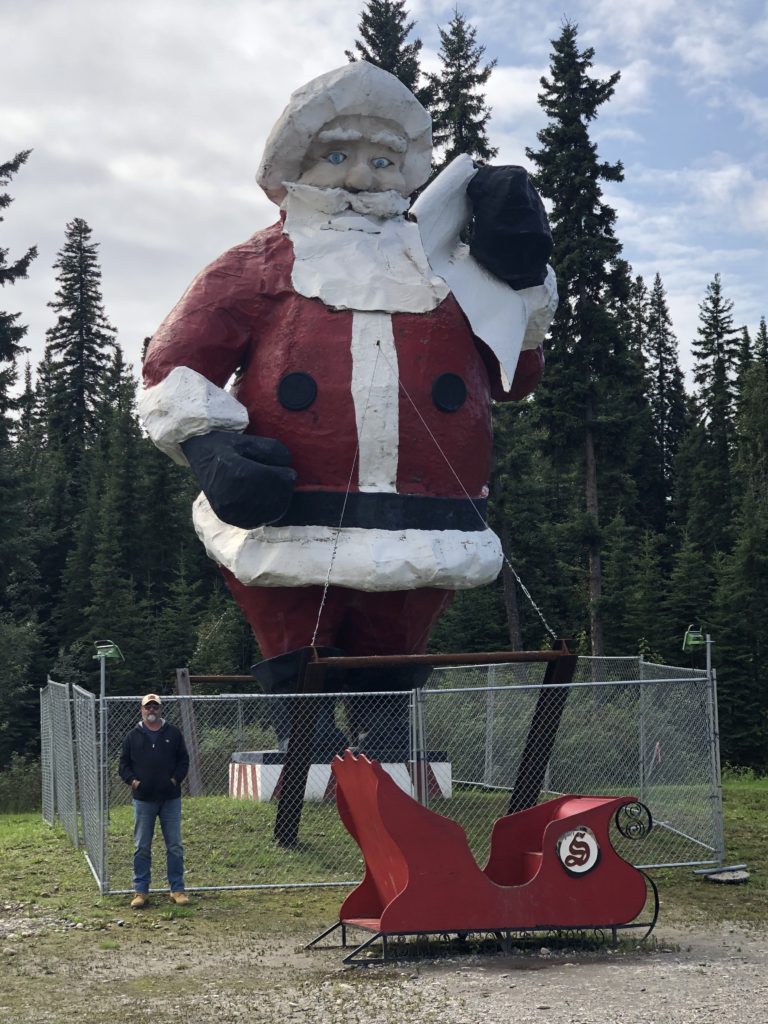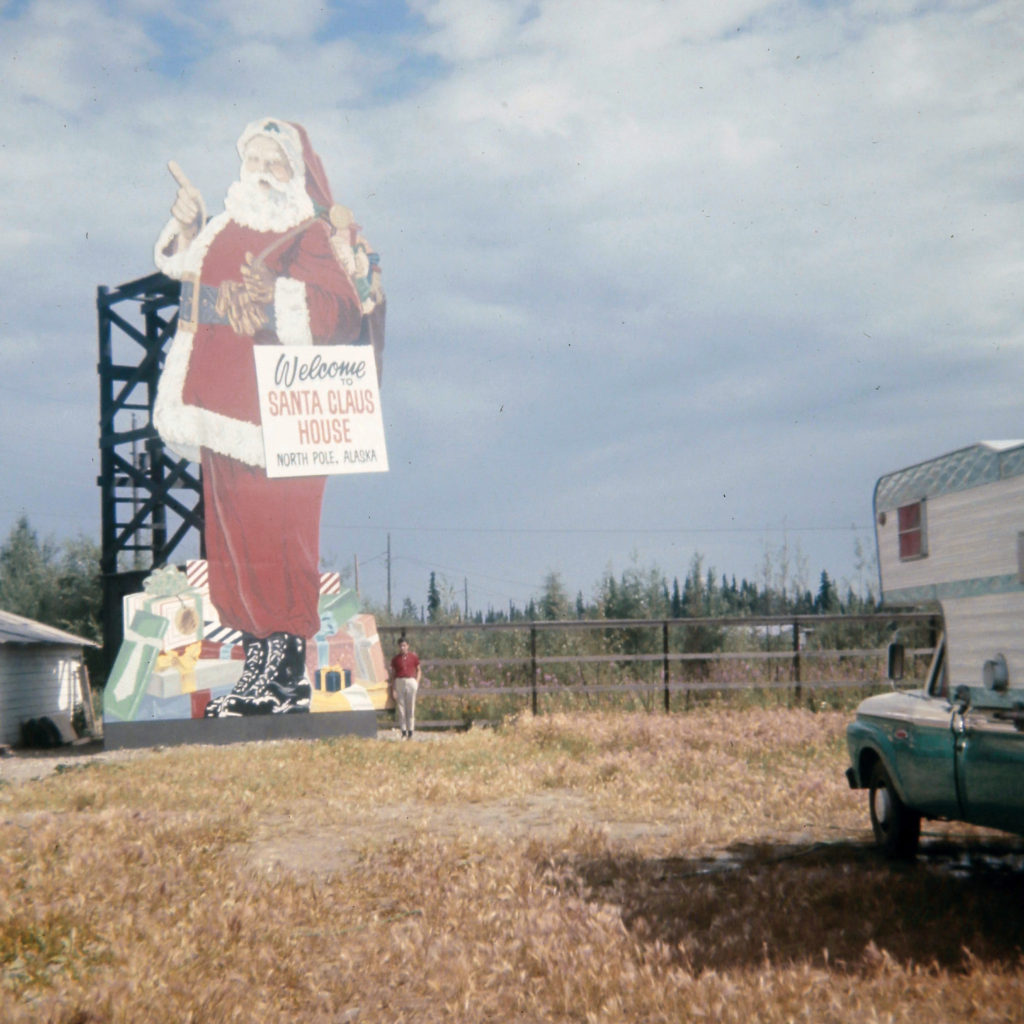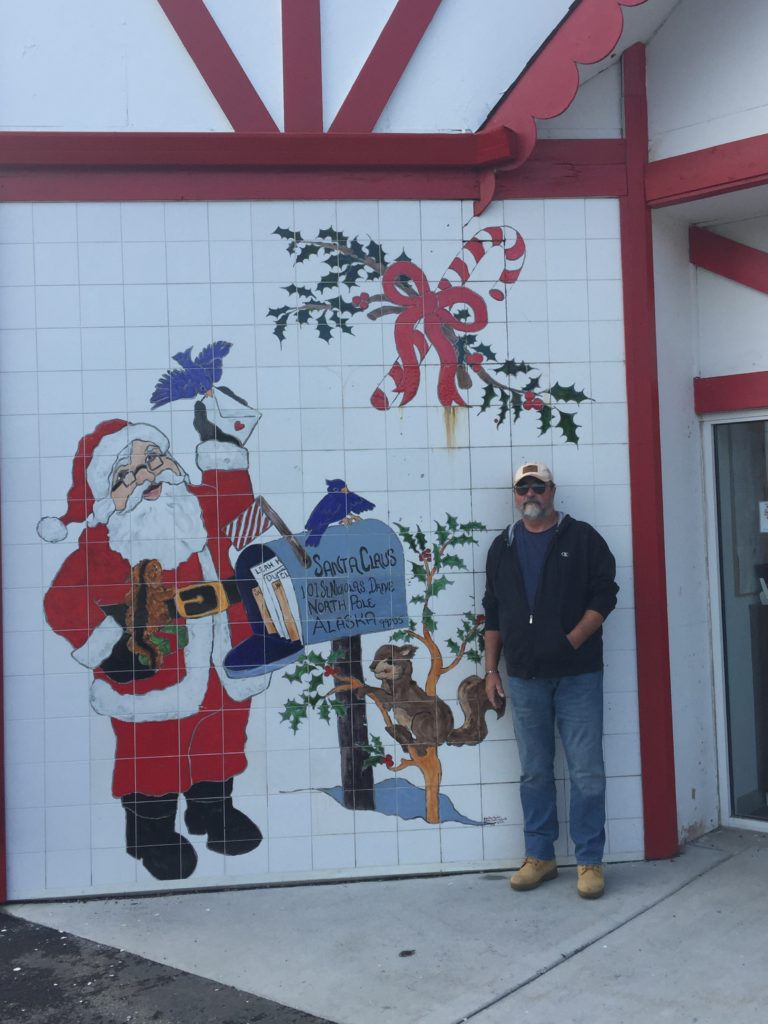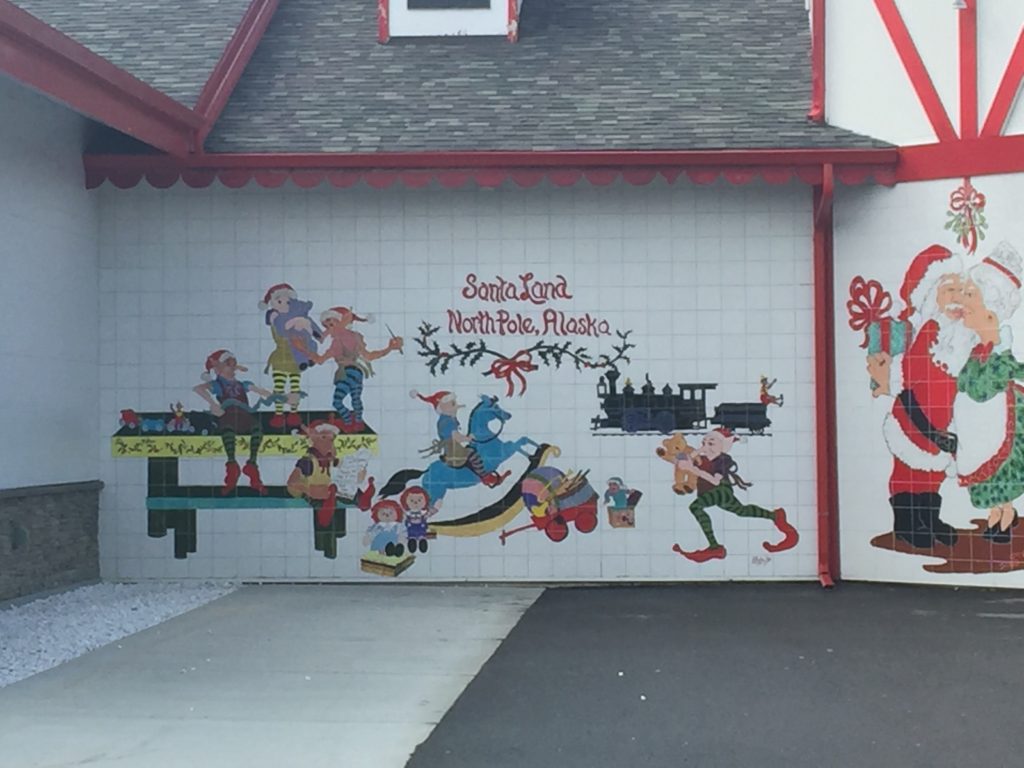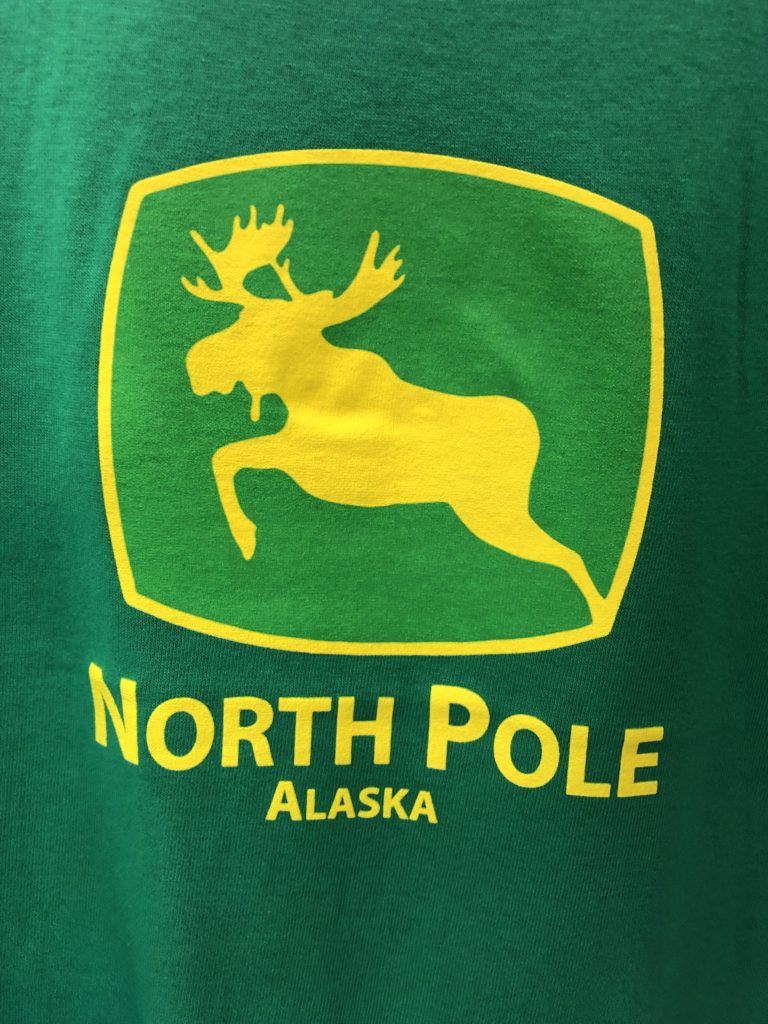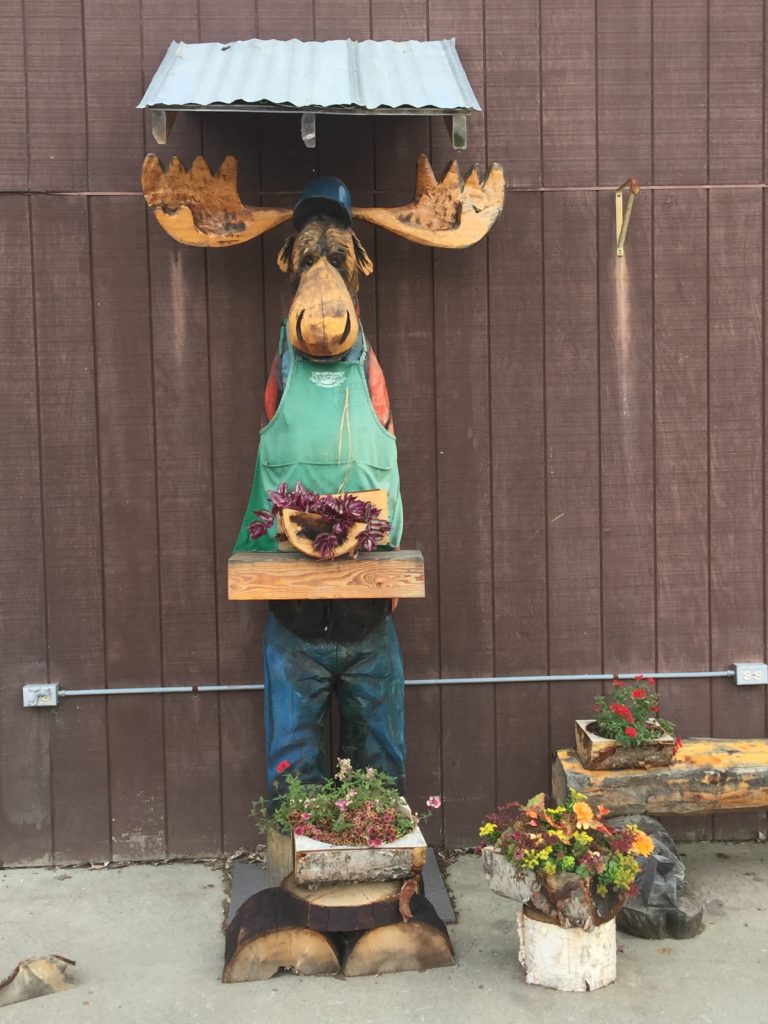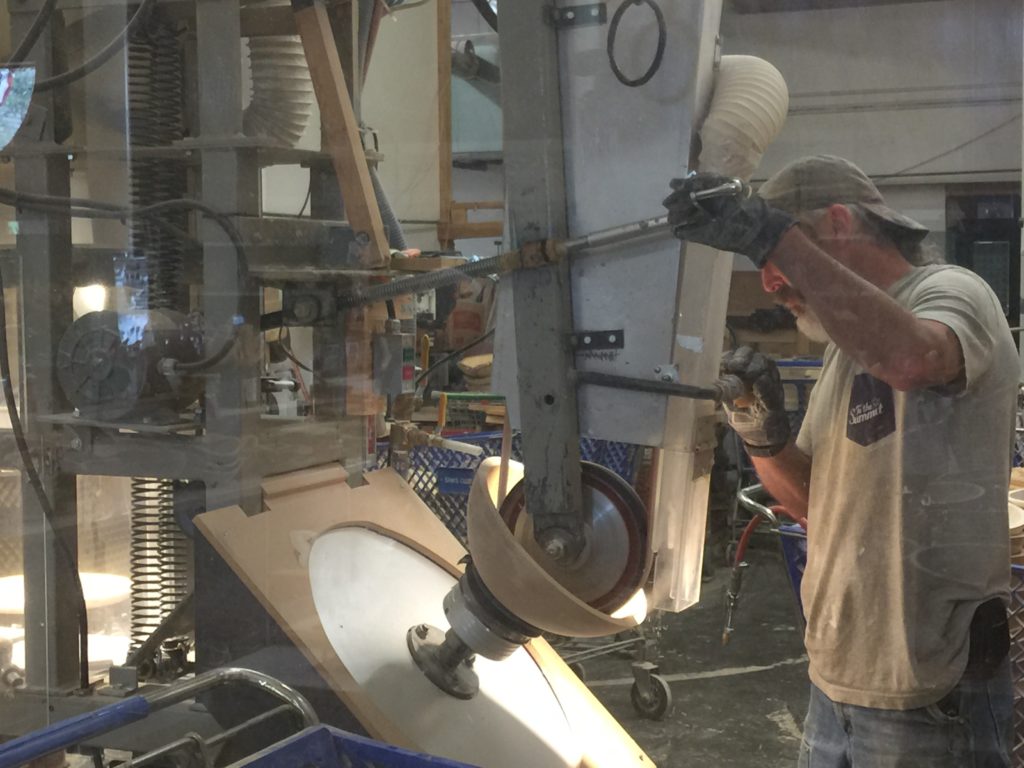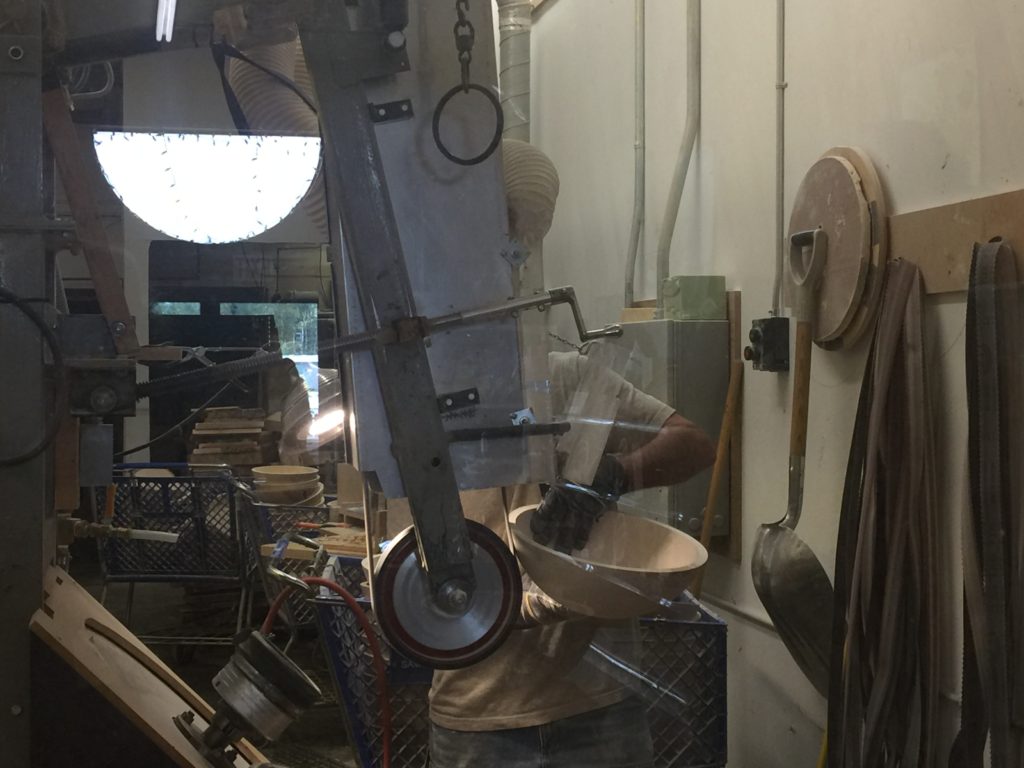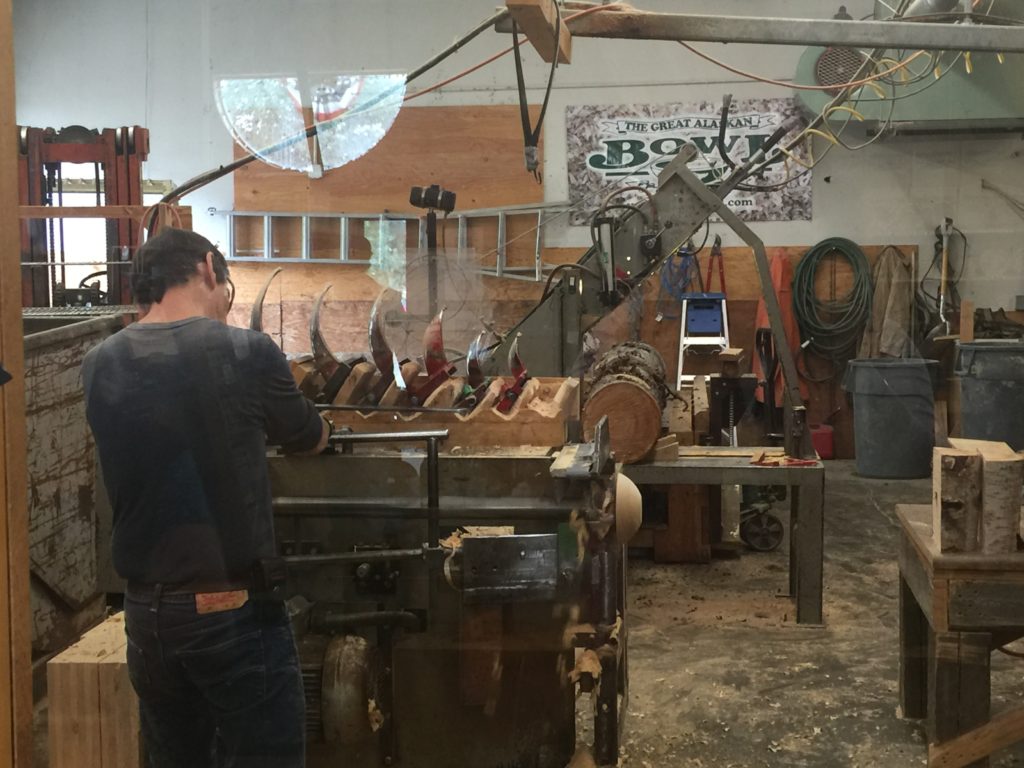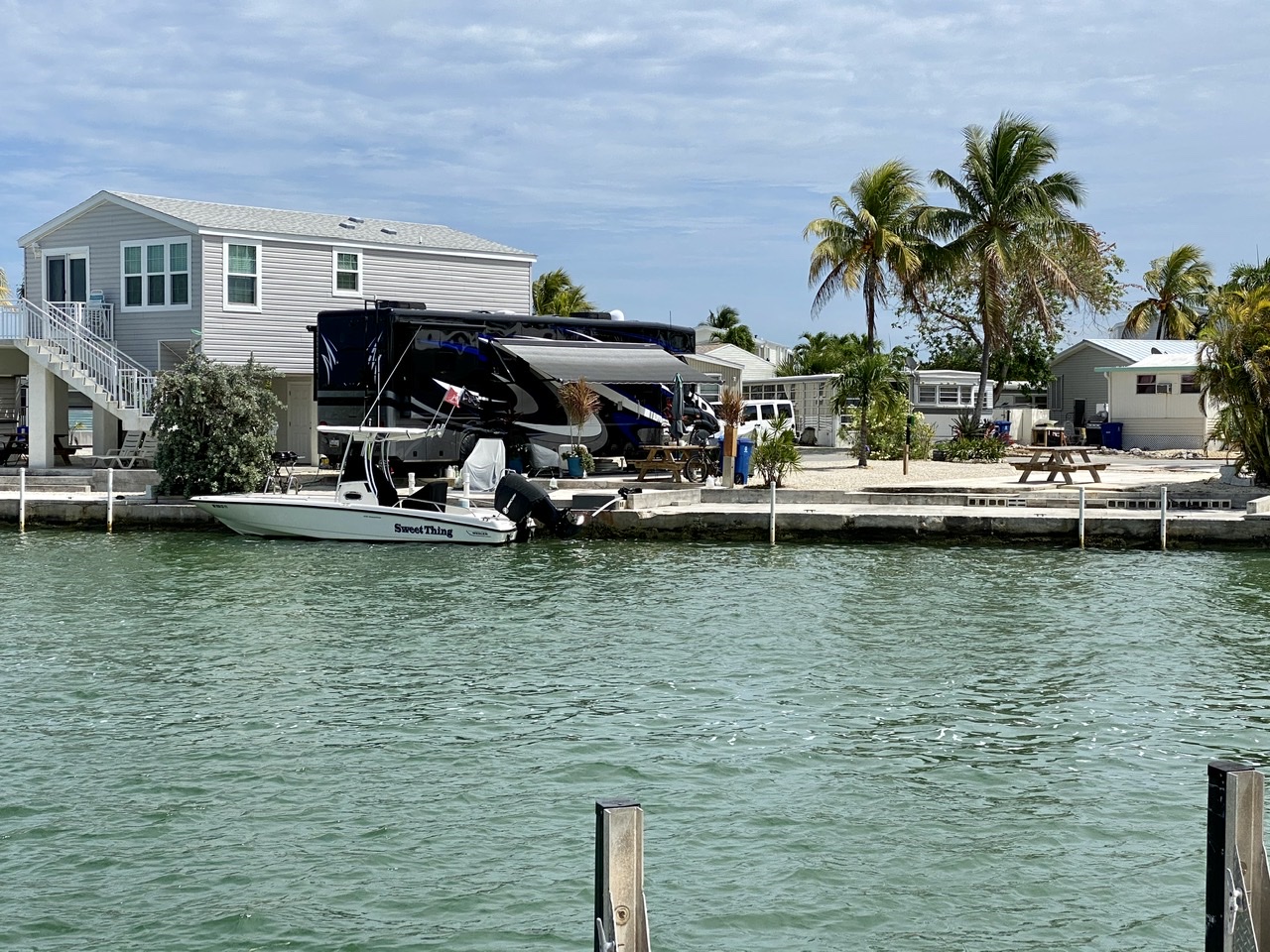We made good time getting to Riverview RV Park in North Pole, Alaska. One hazard we knew about but still was surprised by was the Robertson River Bridge about 33 miles after leaving Tok. Even though we had been warned that you do not see the bridge until you come around the corner, it still was a shock when the bridge popped up on us. I guess I was not paying enough attention to our mileage. We were fortunate that no other large vehicles were trying to cross as the same time that we were on this narrow bridge. I was just glad Randy could stay close to the middle as we crossed.
We stopped at Delta Meats for our scavenger hunt photo. While we were there, we tried out some of their samples and ended up buying some frozen salmon, smoked salmon and some reindeer sausage. We also stopped at the Delta Junction Visitor Center for the “official” end of the Alaska Highway certificate and pin. We originally missed the entrance but Randy was able to get turned around so we could stop and get another scavenger hunt photo. Our last stop before arriving at the Riverview RV Park was at the Knotty Gift Shop. Randy was hoping to get one of the bear hats similar to the ones that John and Carol have, but they only had white ones so he did not buy anything. I was disappointed in this shop as the prices were higher than in other gift shops. And for me the staff were not very friendly so we did not buy anything. The shop did have a large RV parking area where we had lunch.
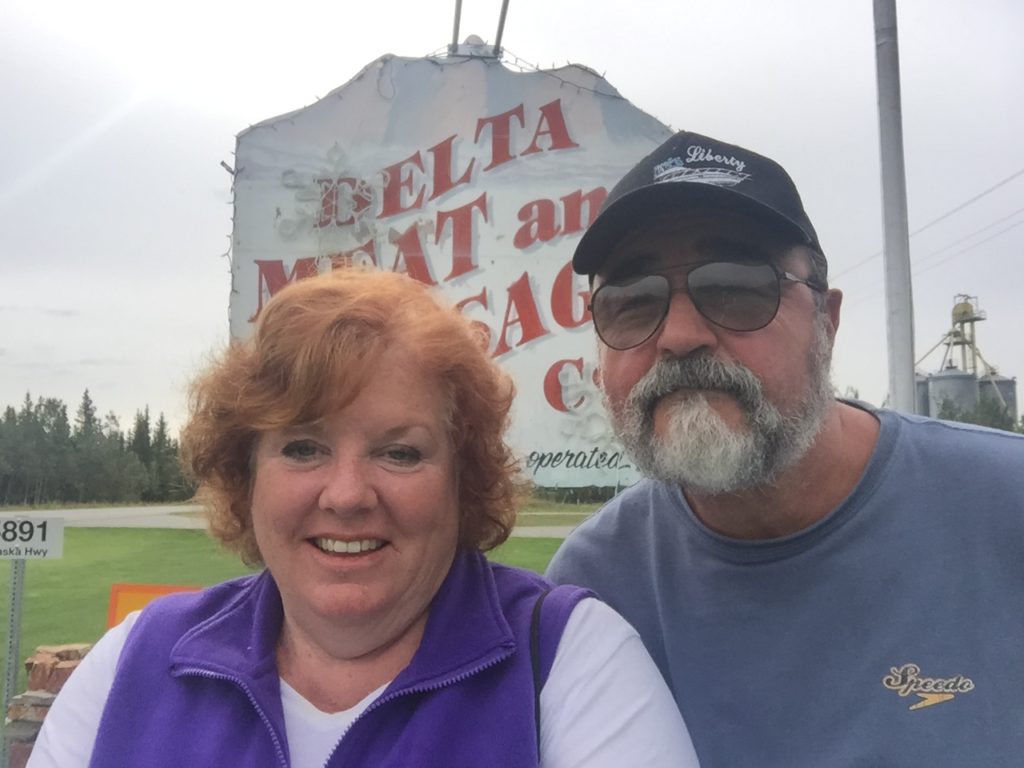
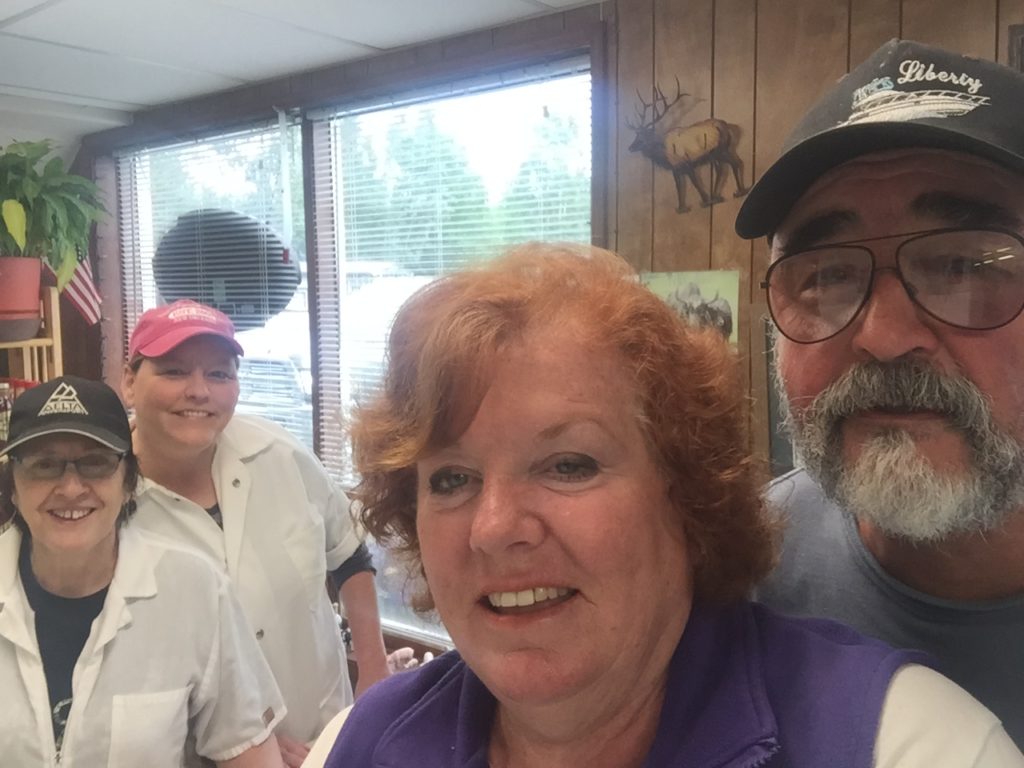
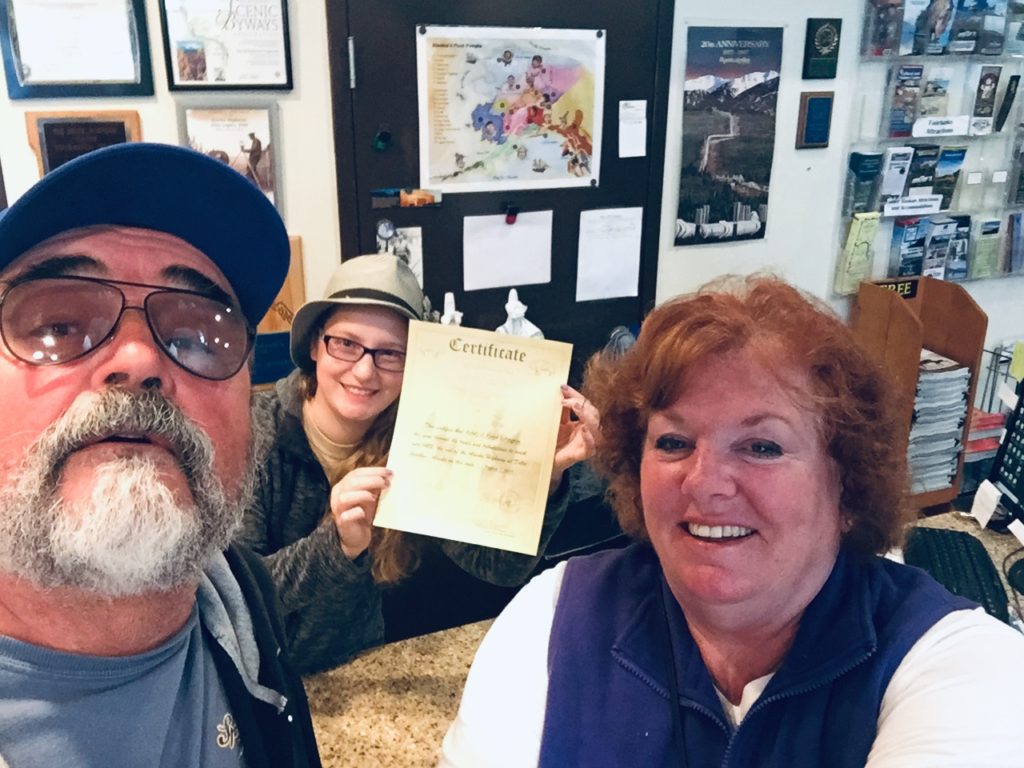
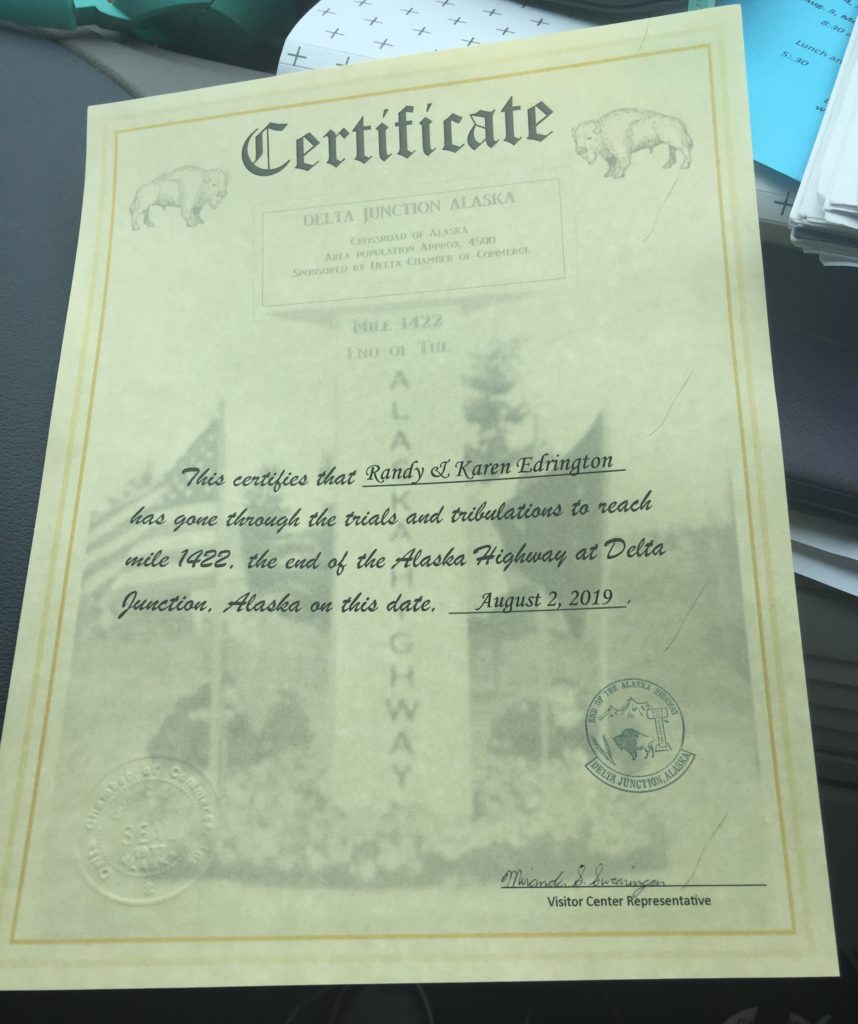
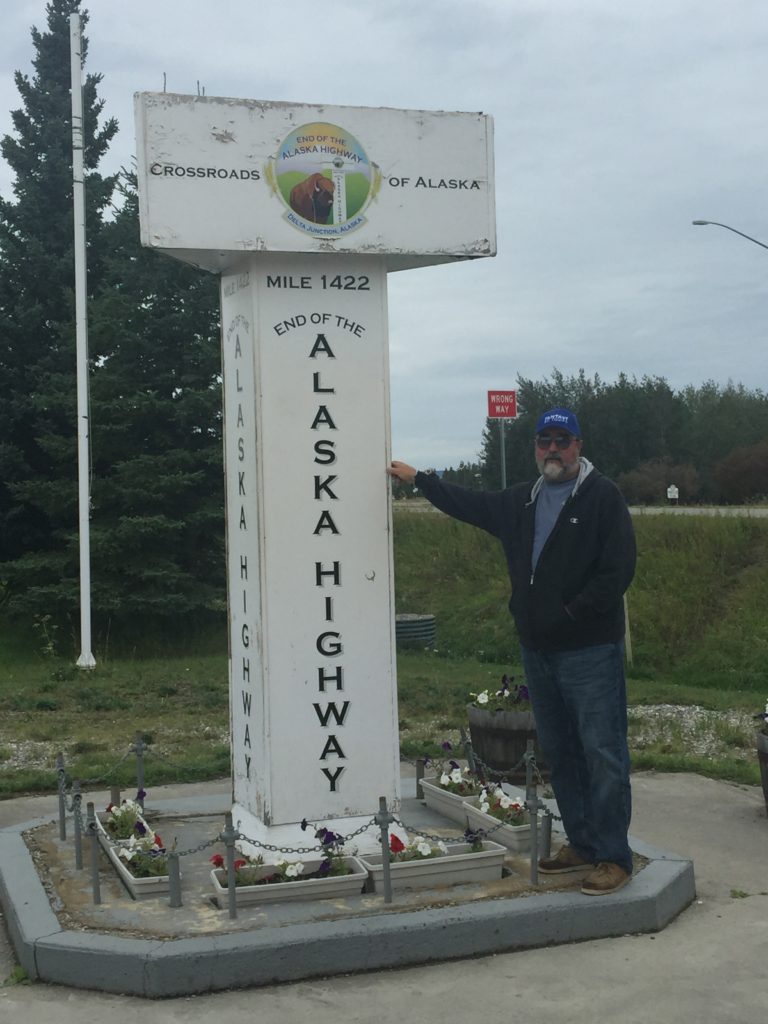
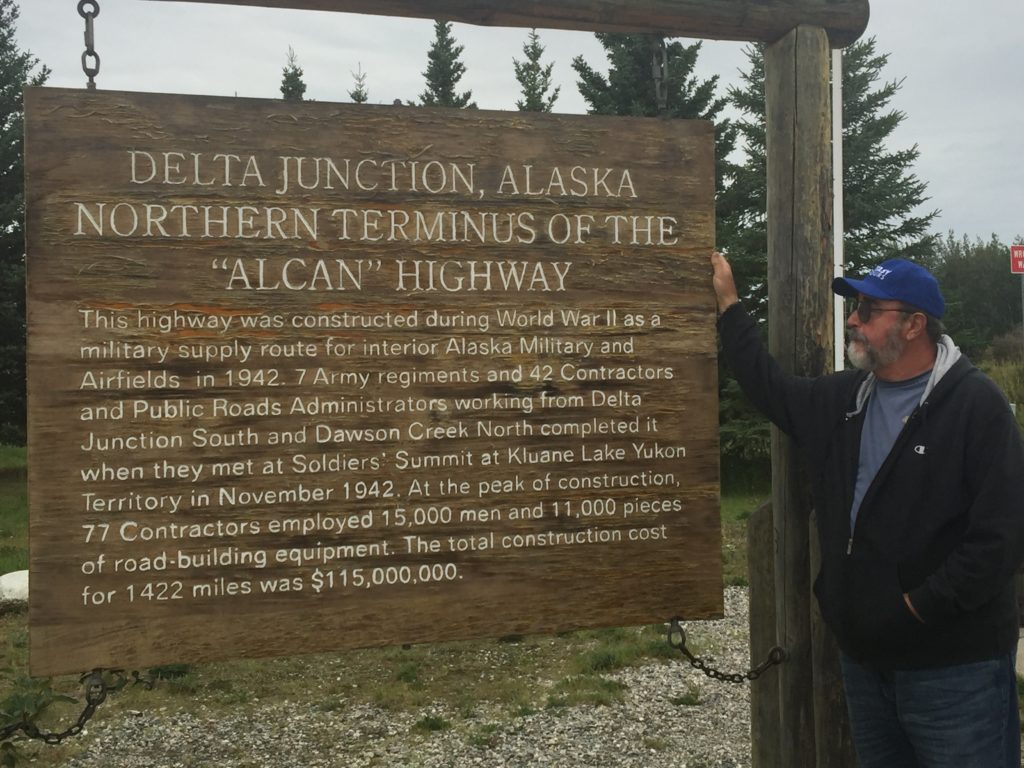
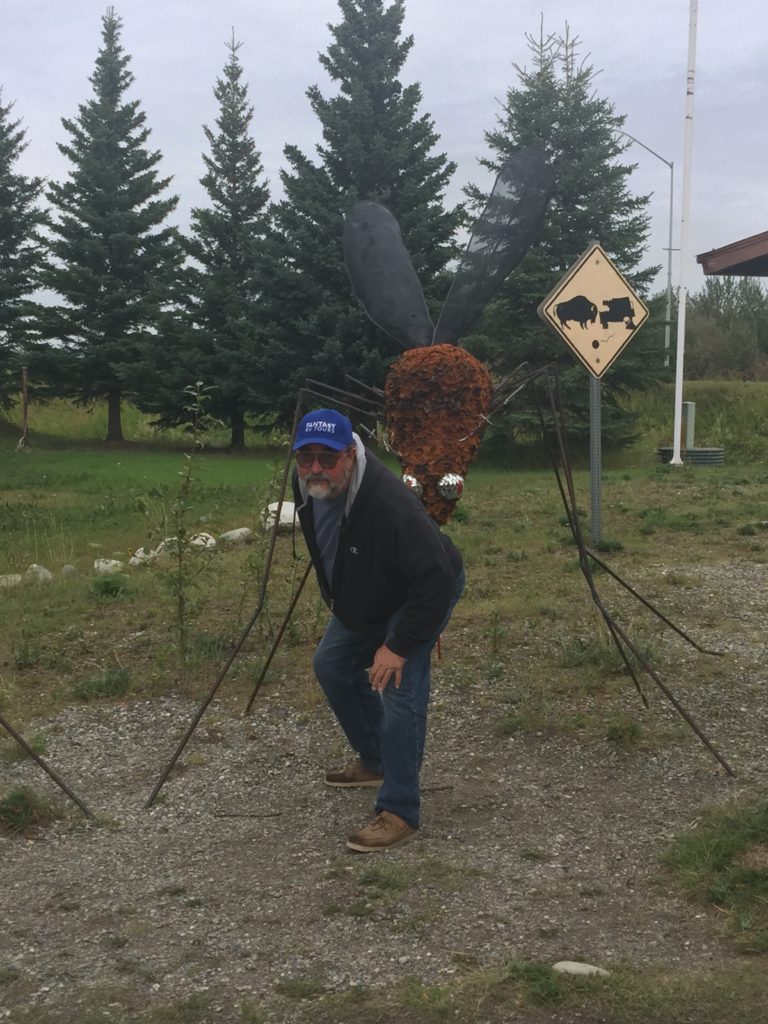
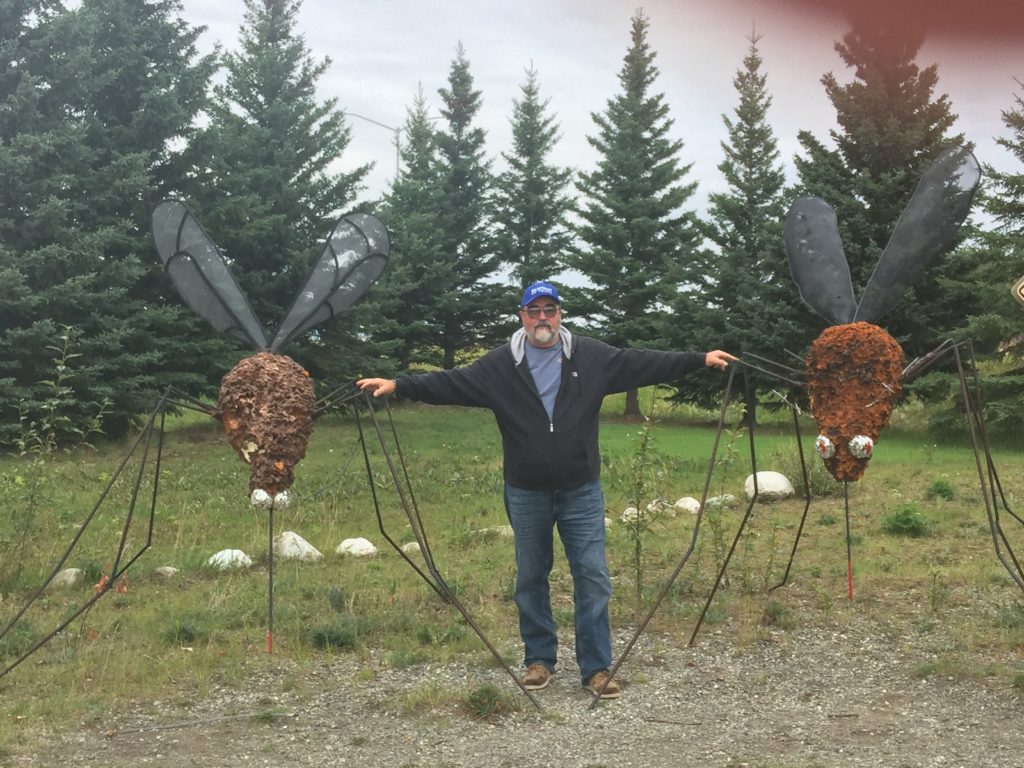
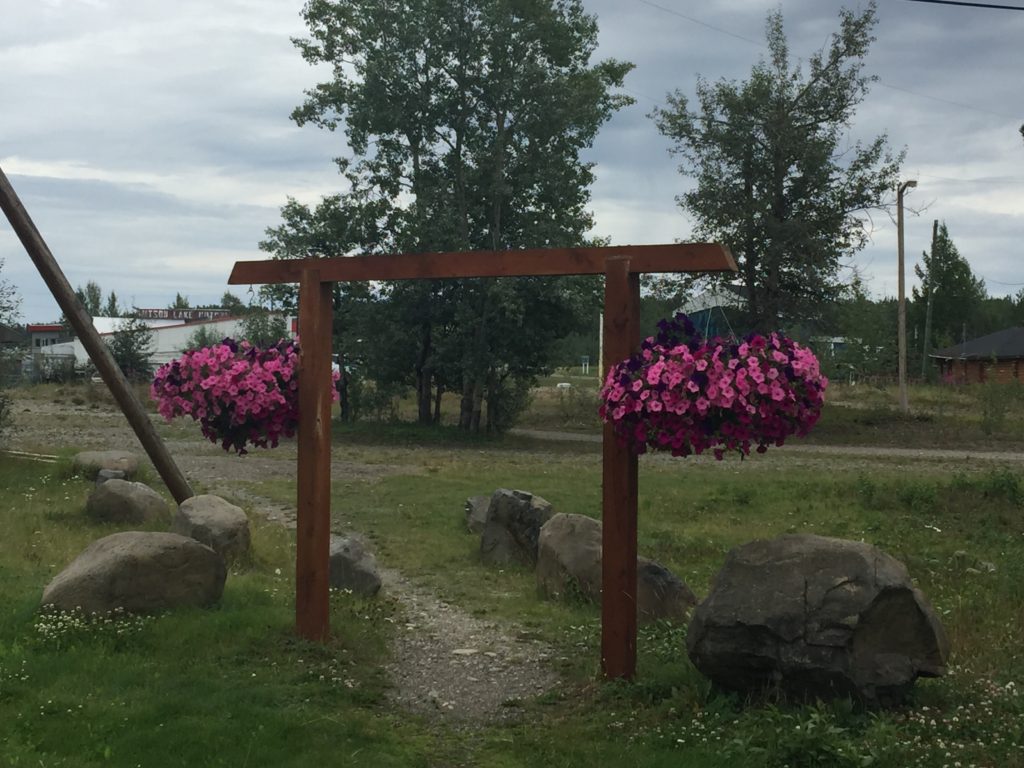
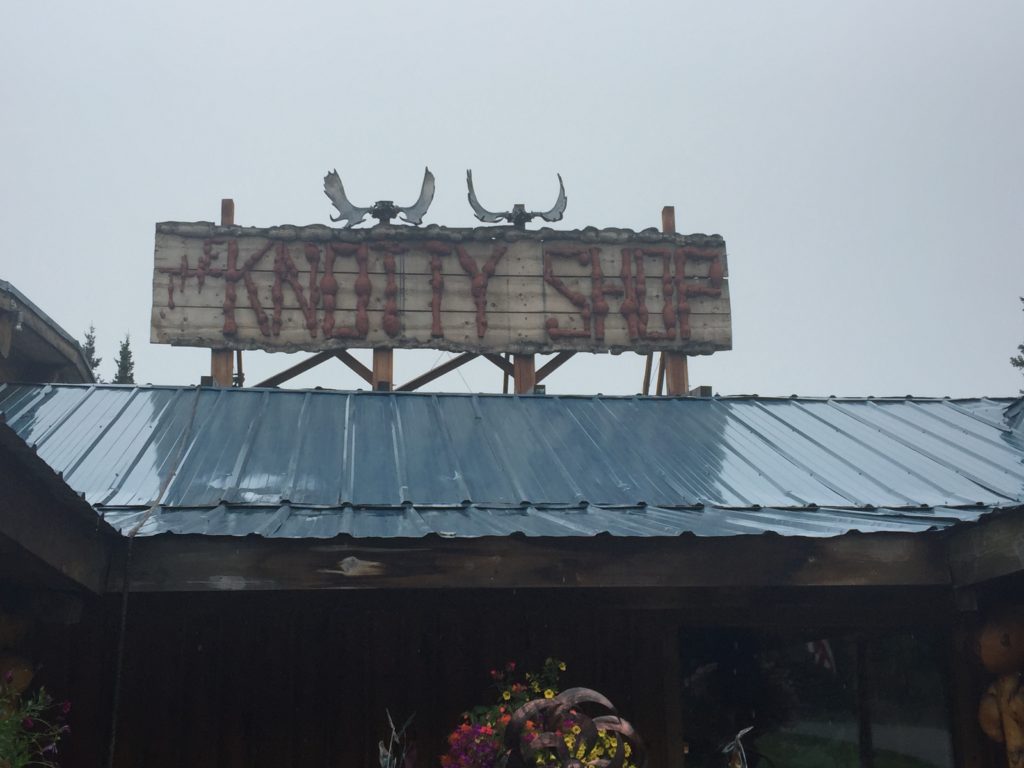
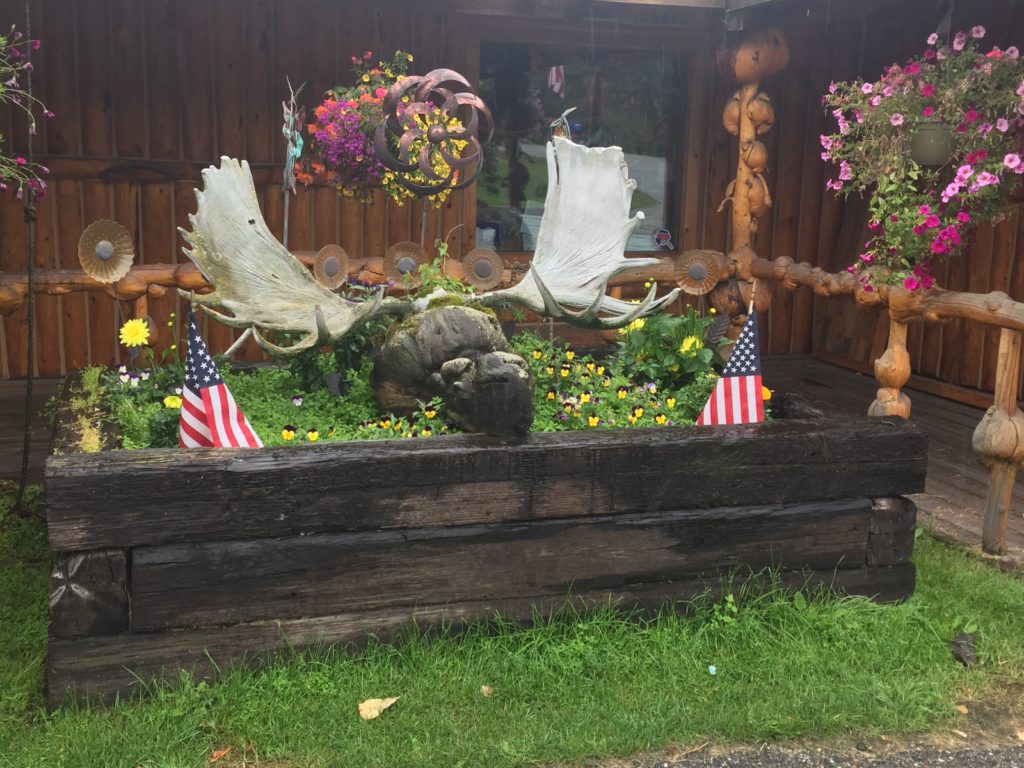
We arrived at the park shortly after John and Carol so we took the time to fill up with fuel and disconnect the Jeep. There was no DEF at the pump so Randy had to use some of the supply that he has stored in the jeep. Our dinner the first night was at the Pioneer Village Alaska Salmon Bake. It was a good dinner but a wet one as the skies had opened up just as we arrived. All of the food stations were outside under tents. Fortunately in addition to outside picnic tables there was also an indoor dining room that was dry. Our dinner consisted of prime rib, salmon and fried cod, salad, vegetables and dessert. After the dinner we had time to shop in their gift shop and pick up our free magnet. Then it was on to the Palace Theater Show for an old-school musical, comedy review about frontier life in Alaska and Fairbanks.
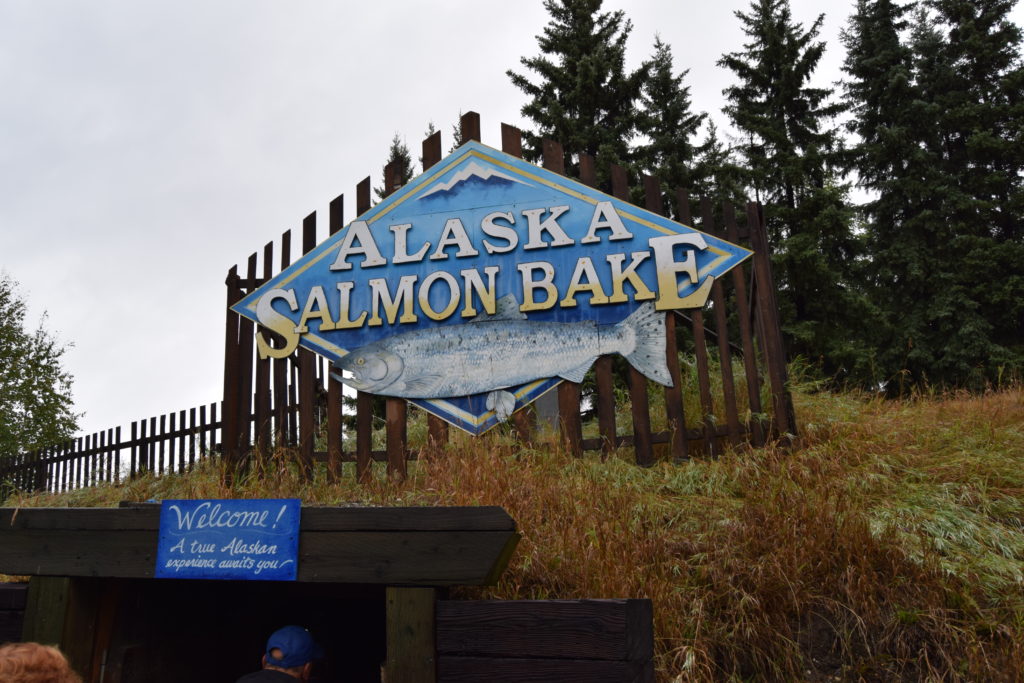

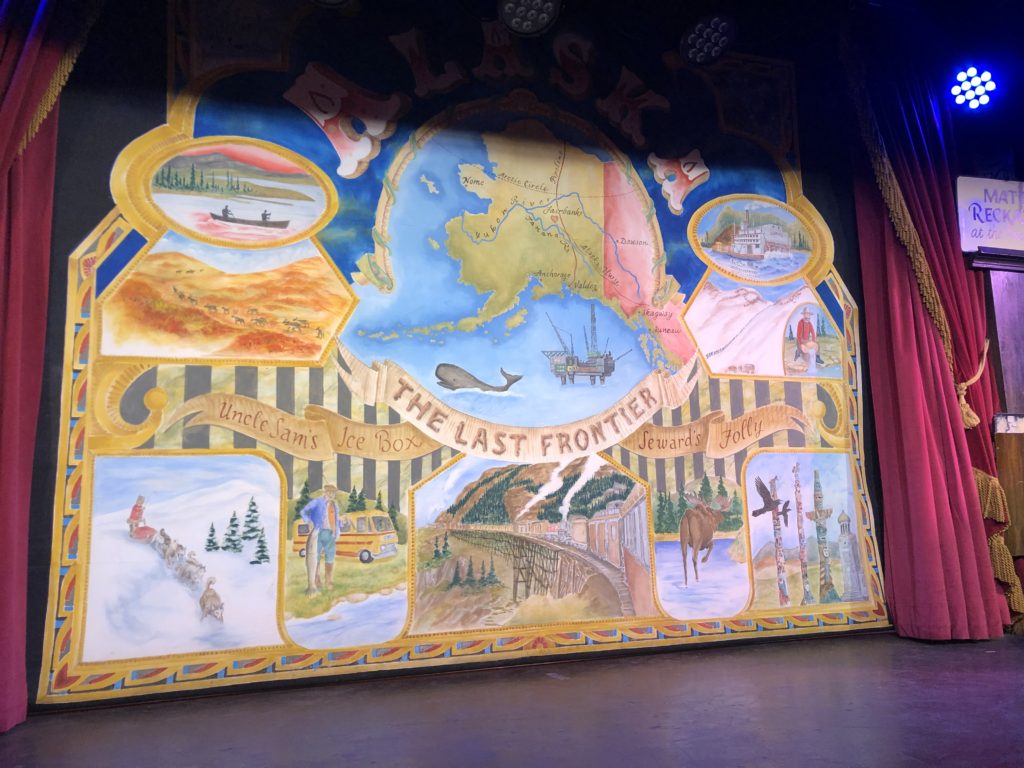
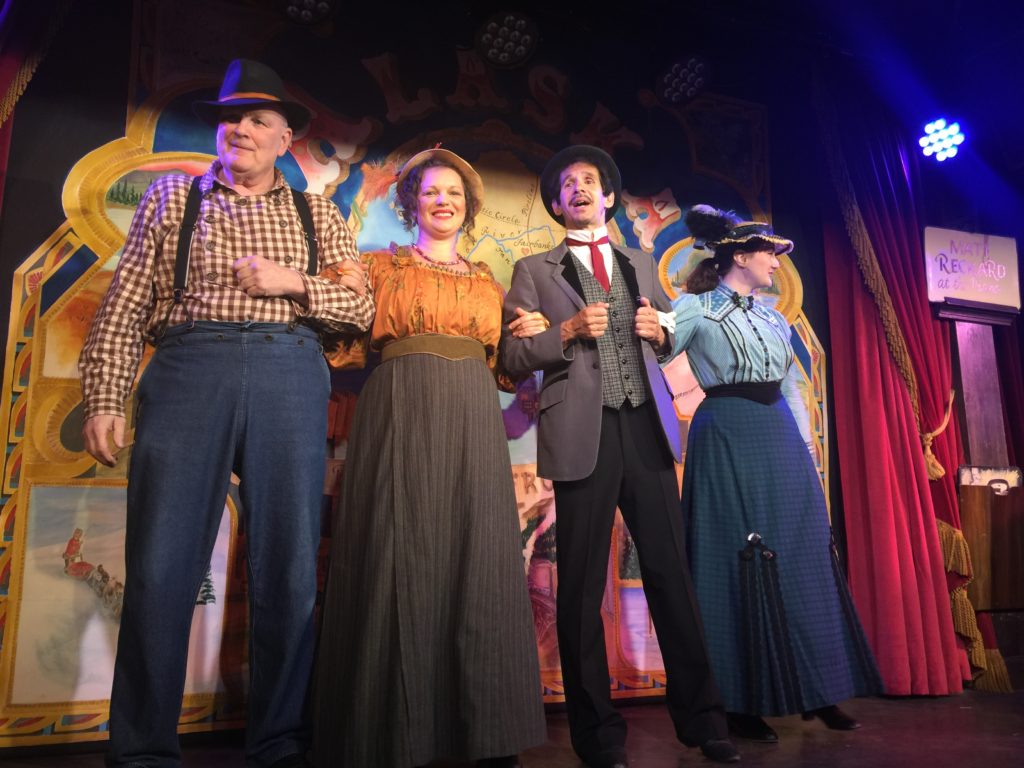
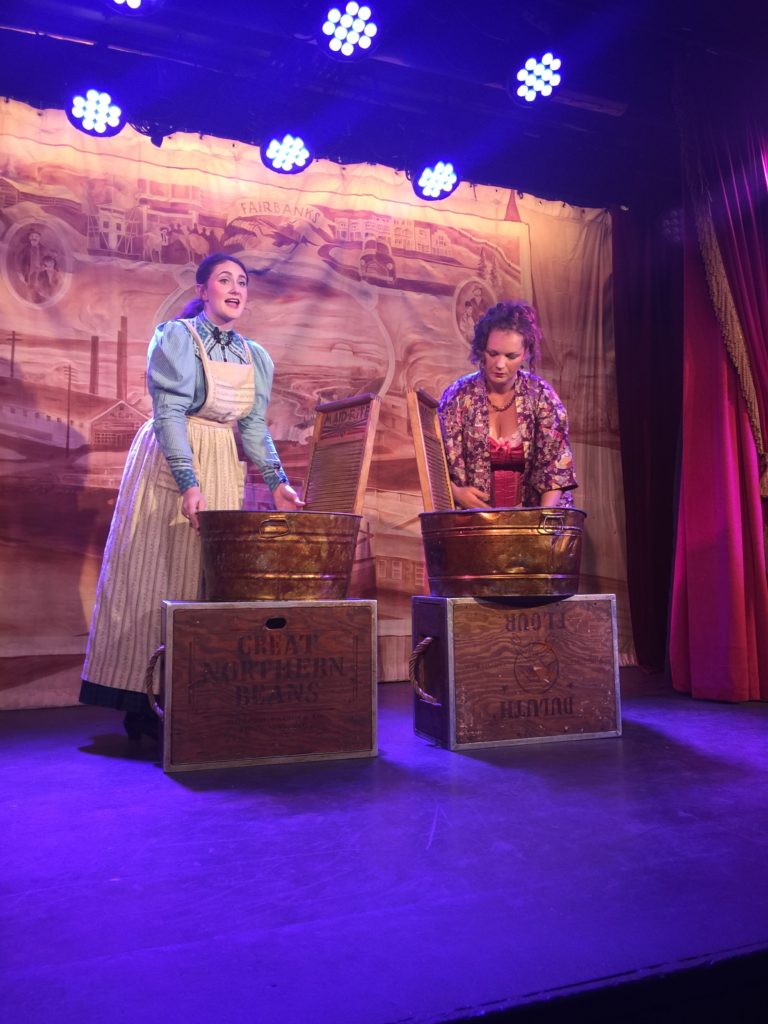
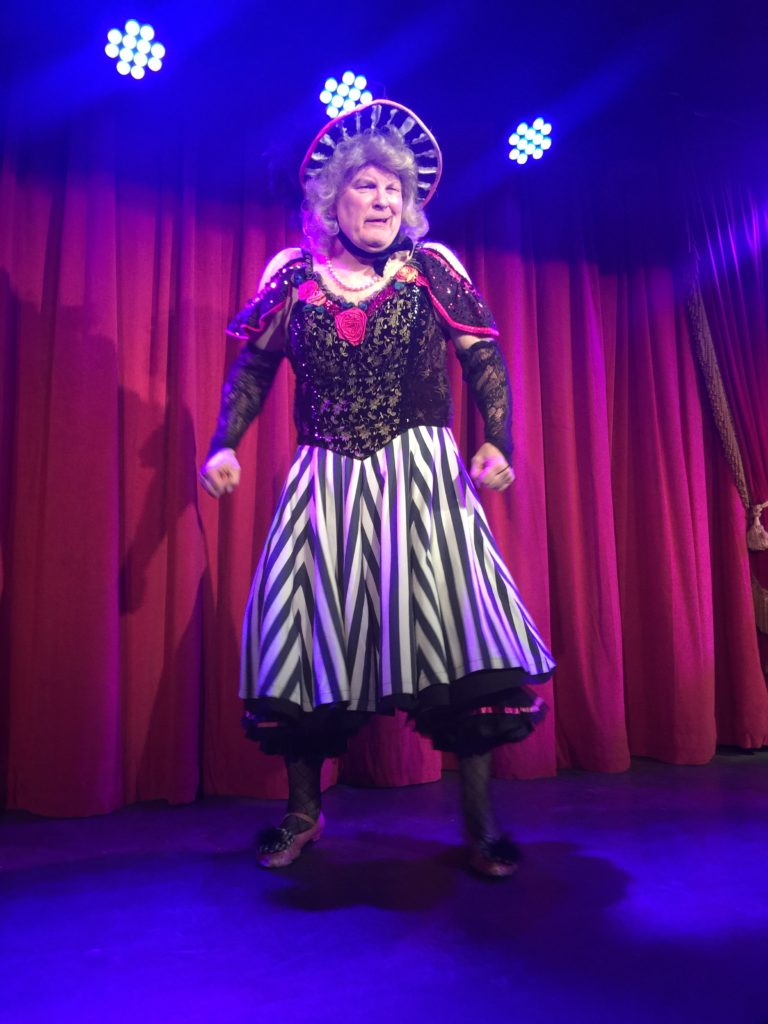
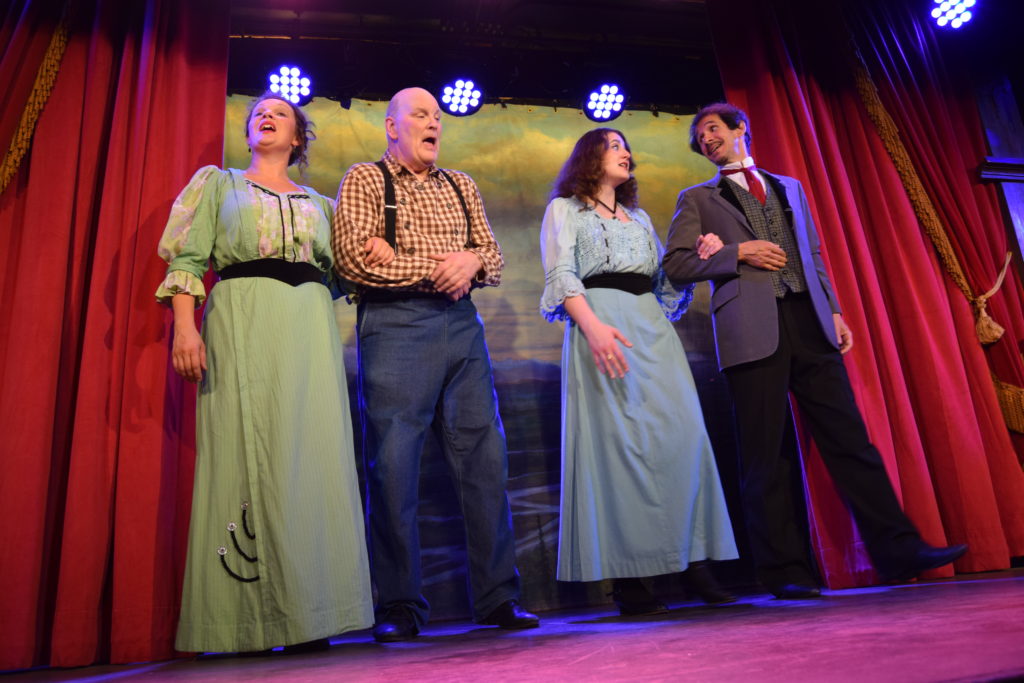
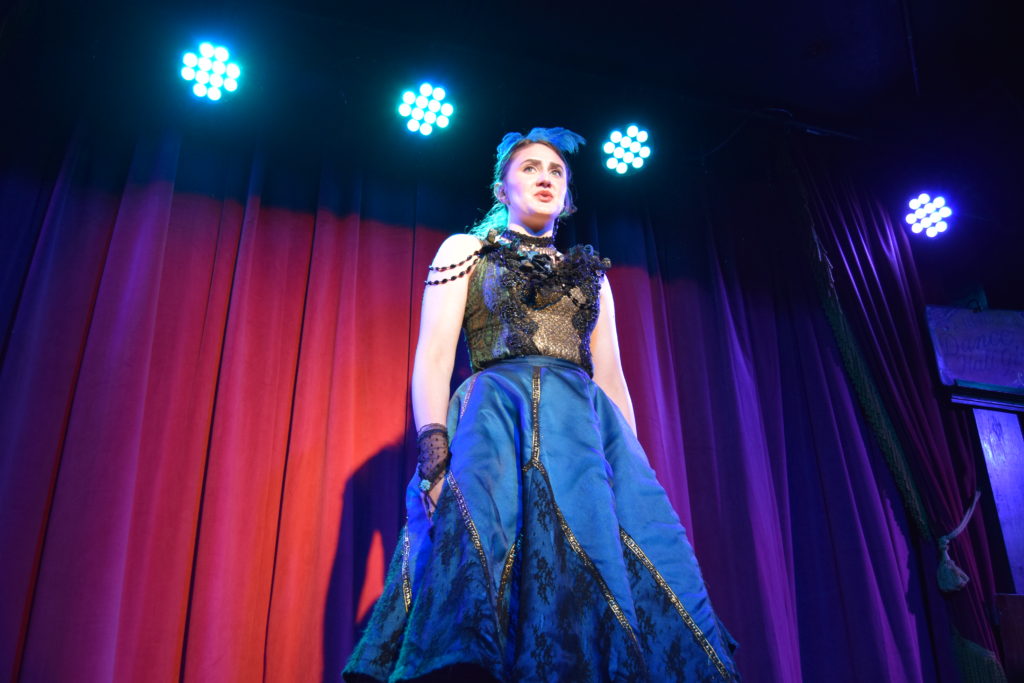
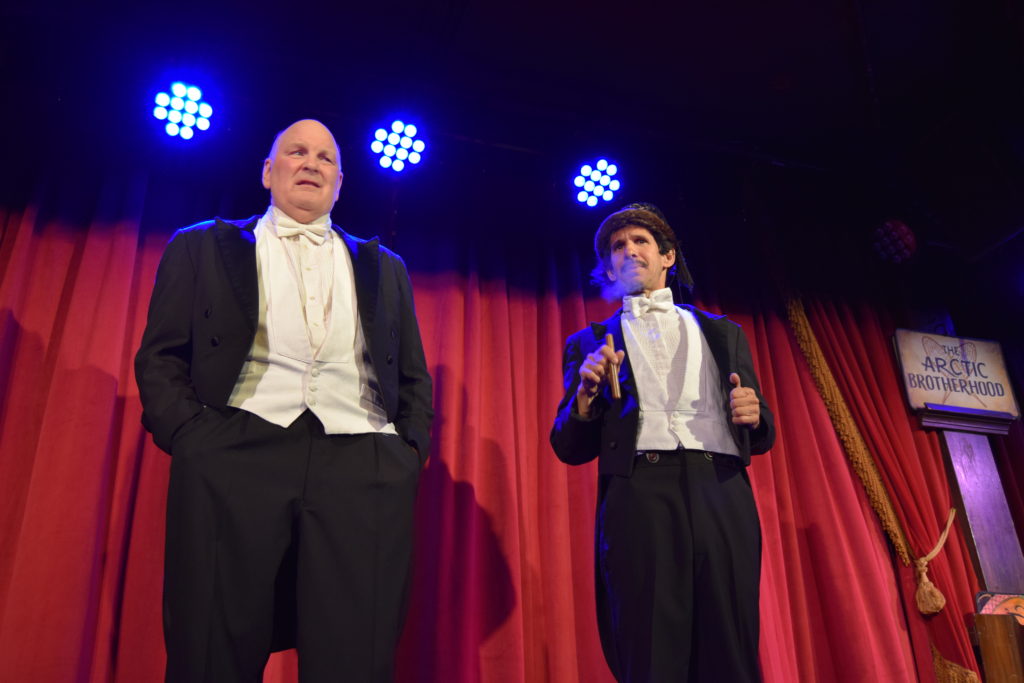
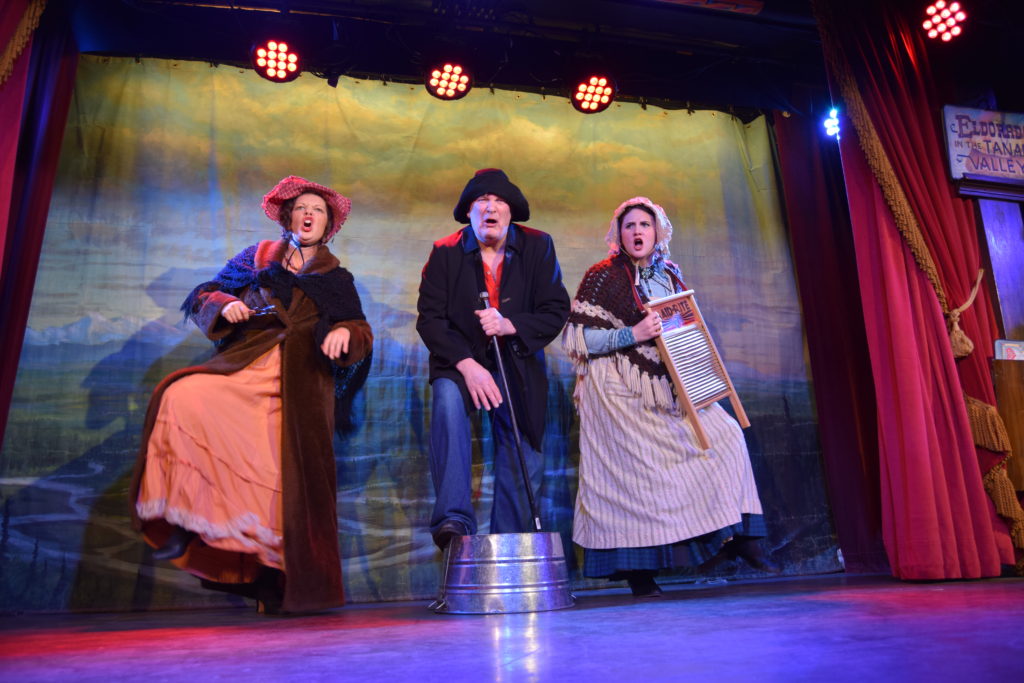
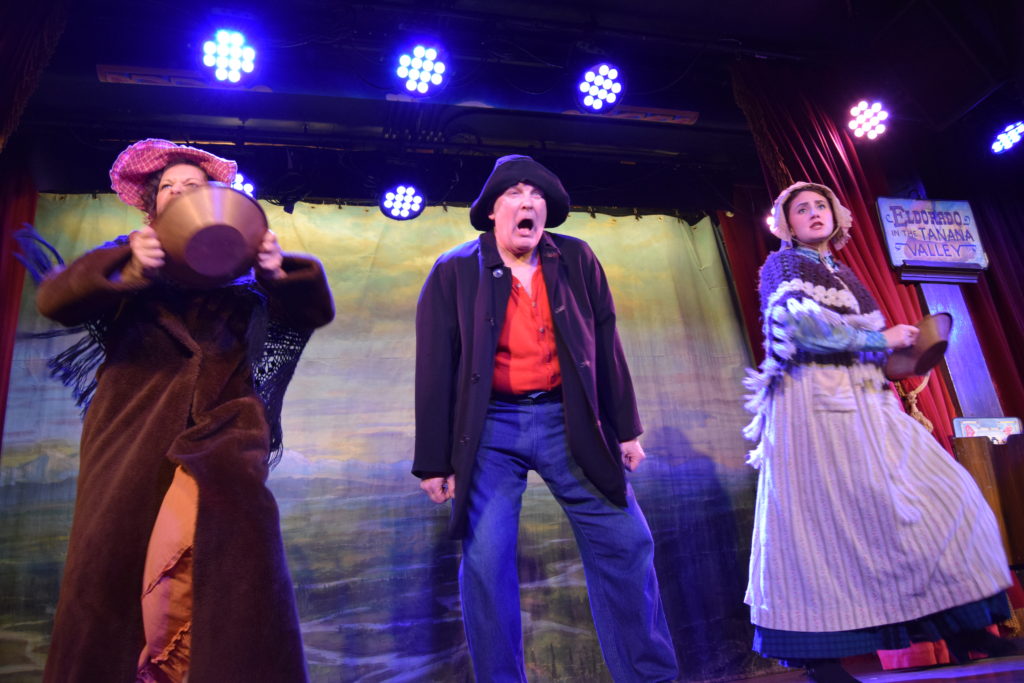
The next day we went on the Sternwheeler Riverboat Discovery Cruise. While waiting for the cruise we had our pictures taken in a freezer type room that let you expereince weather at 40 degrees below zero. Glad I did not have to stay in there long! While on the cruise we passed some gorgeous homes, had demonstrations from a float plane at taken off and landing next to us, met the dogs and learned about the Susan Butcher Sled Dog Center and experienced an Athabasca Village (Chena Indian Village) with demonstrations on their culture and lifestyle. It was another day of rain so some of the demonstrations were given on the sternwheeler instead of on land. Umbrellas were provided at the Athabasca Village so we could walk around and look at the fishing center and homes before the whistle blew telling us it was time to head back to the boat! After the boat ride we went out to lunch and then off to the University of Alaska Museum. We did a quick tour of the artifacts and watched 2 different movies on weather and the Northern Lights. I don’t think I was the only one that took a quick nap when the lights dimmed for the movies.
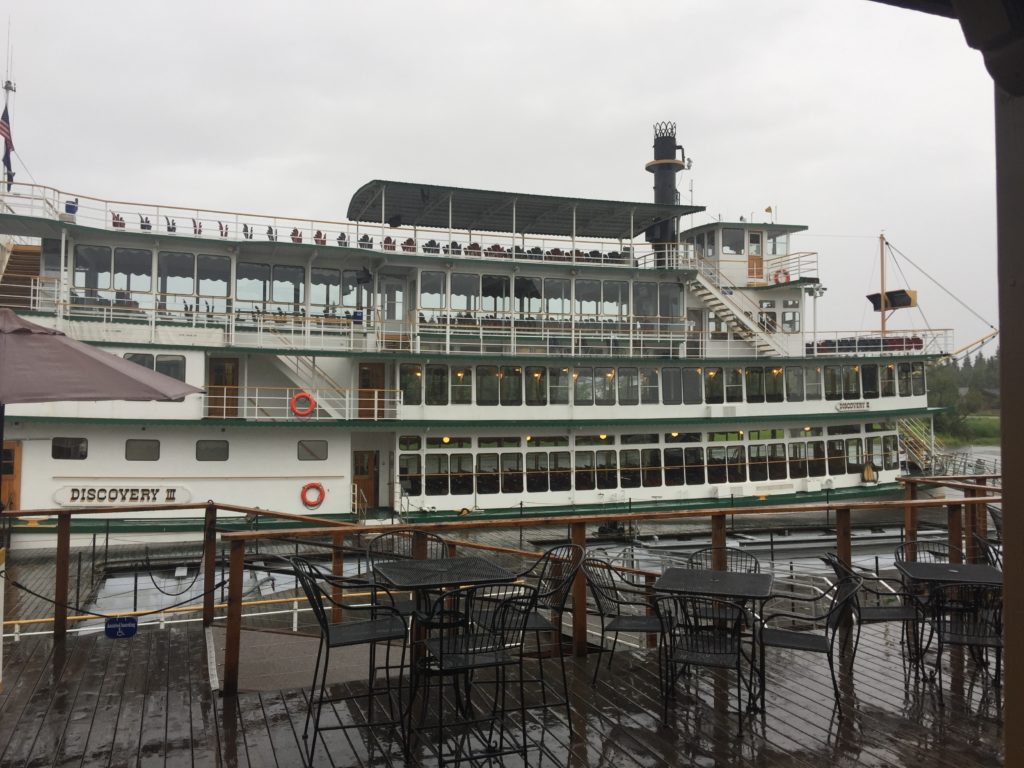
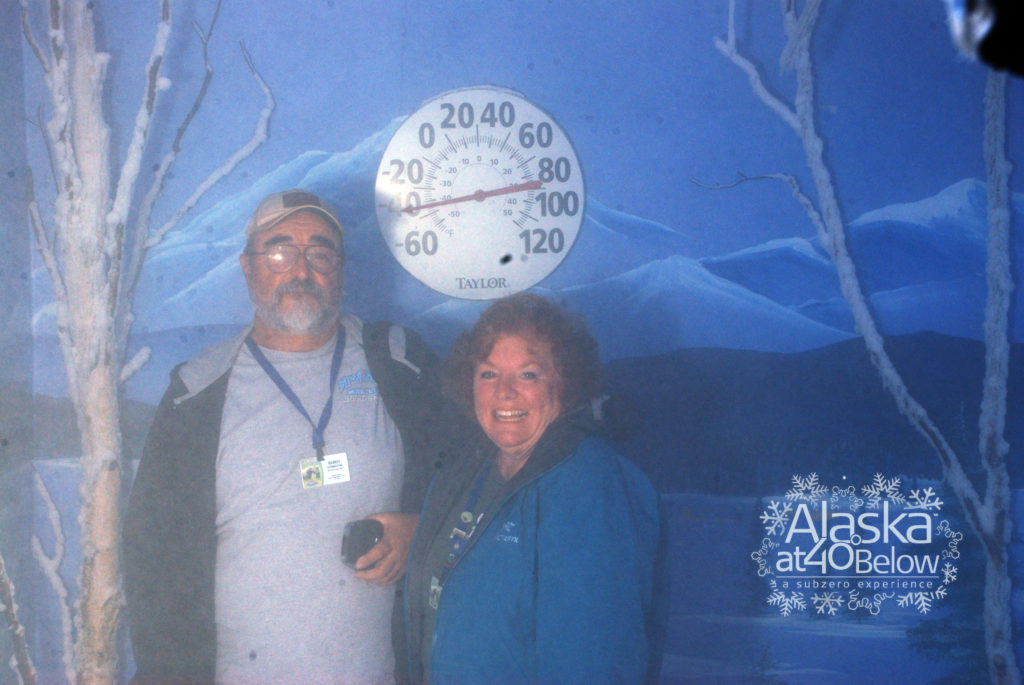
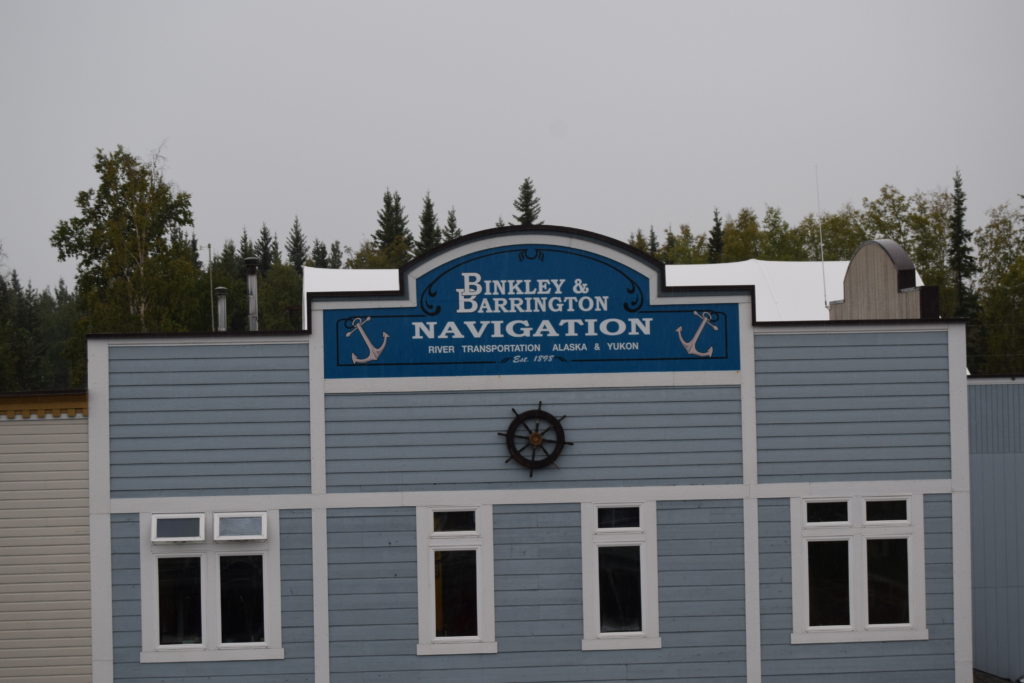
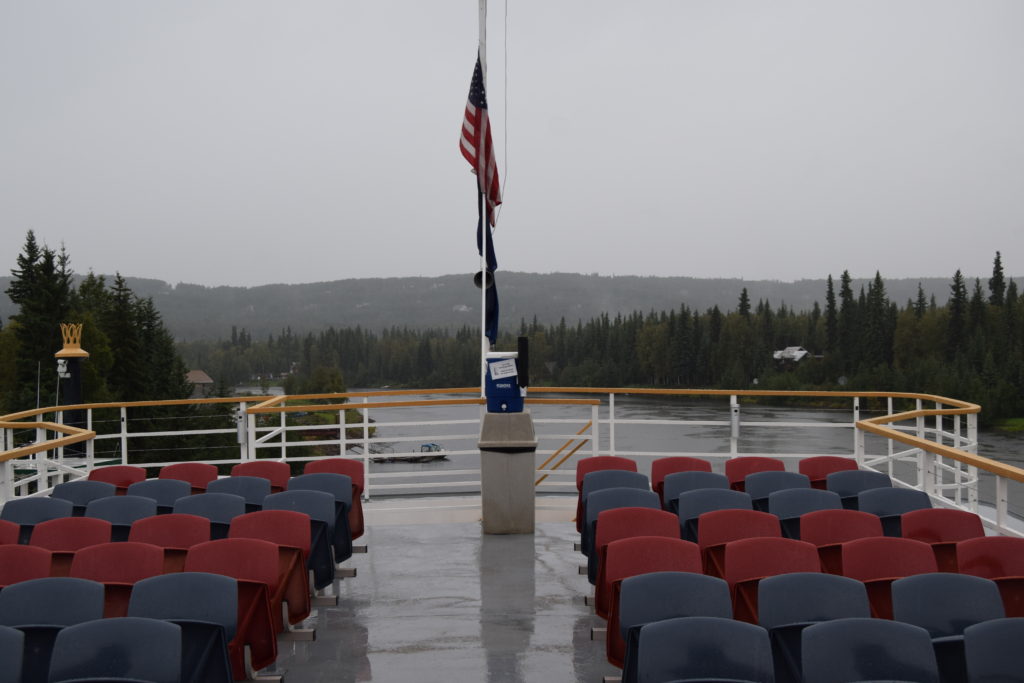
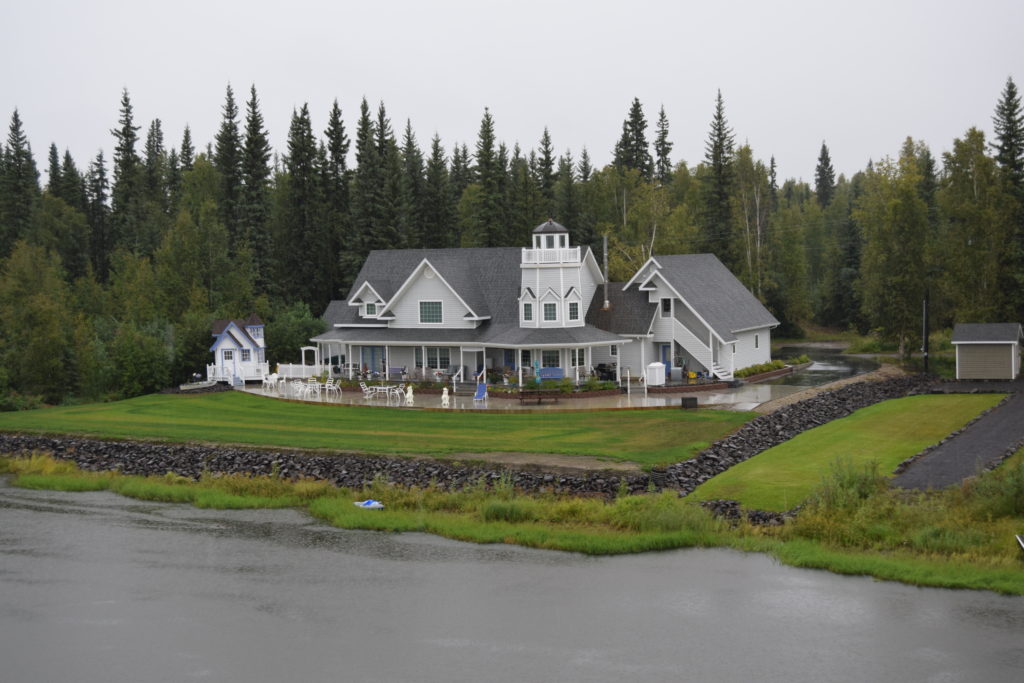
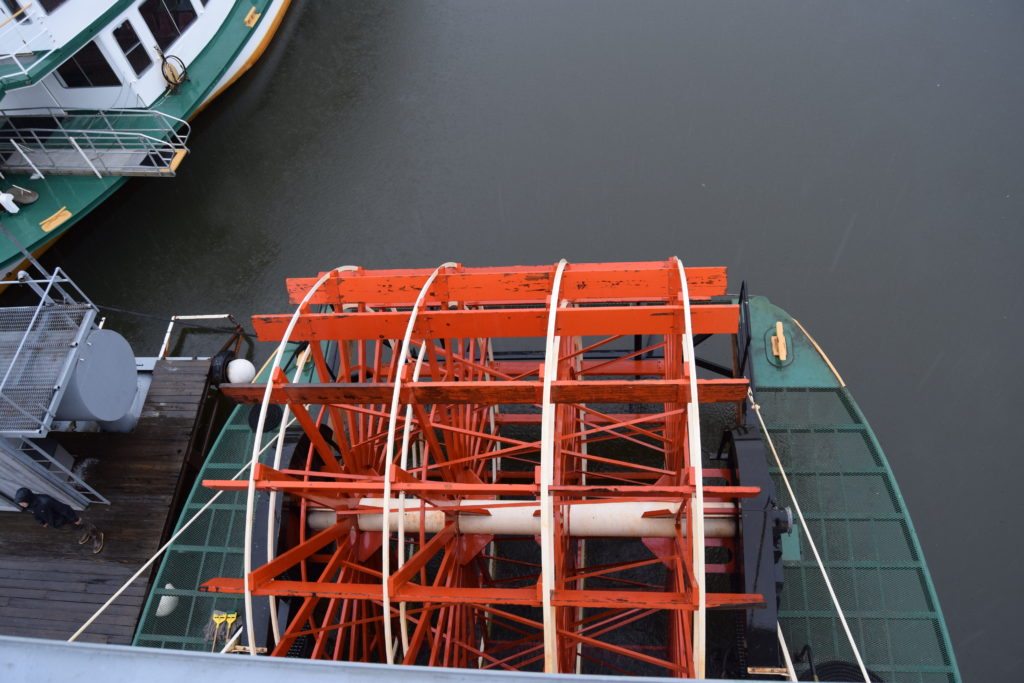
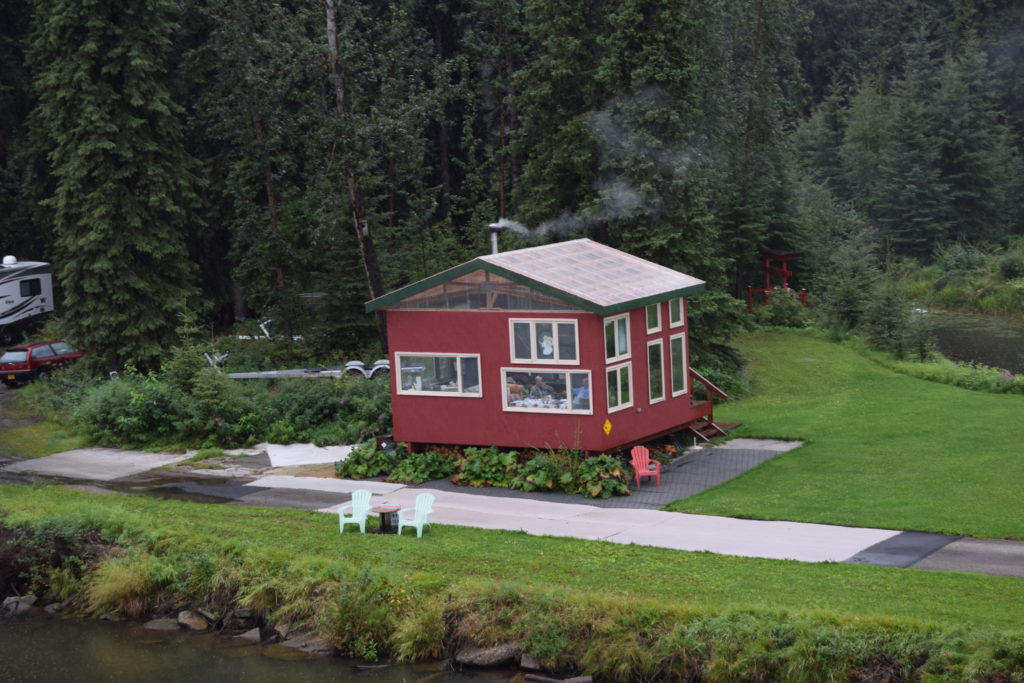
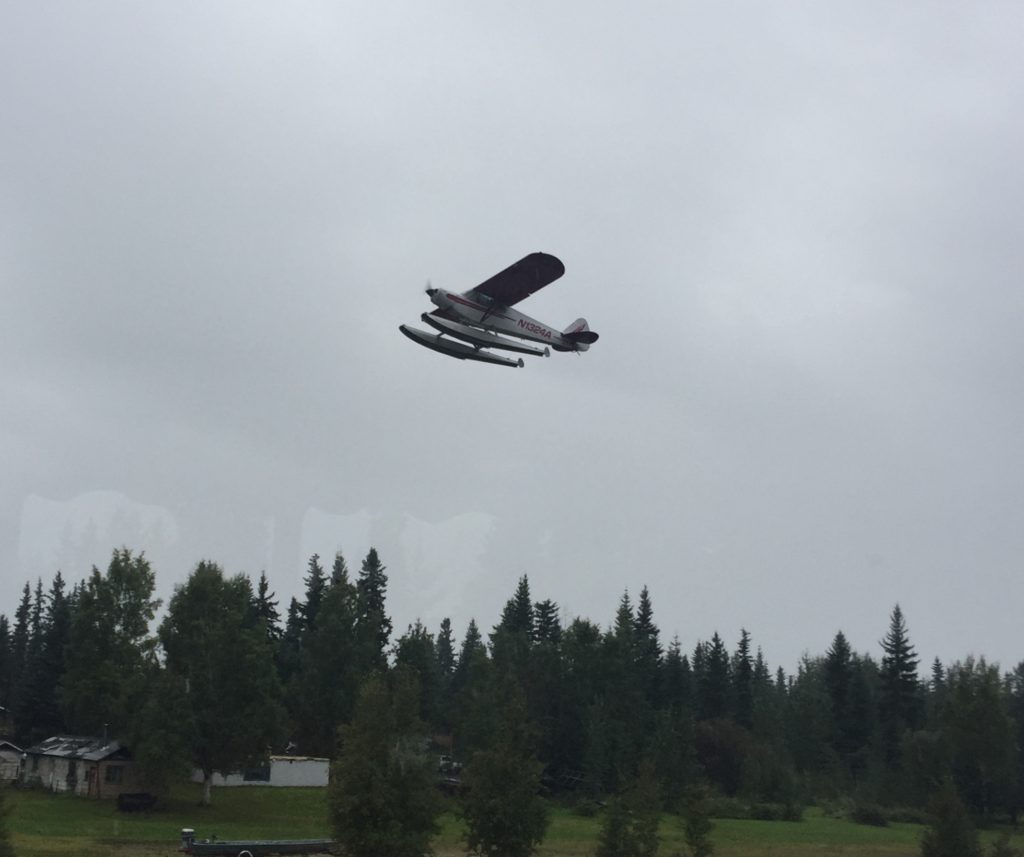
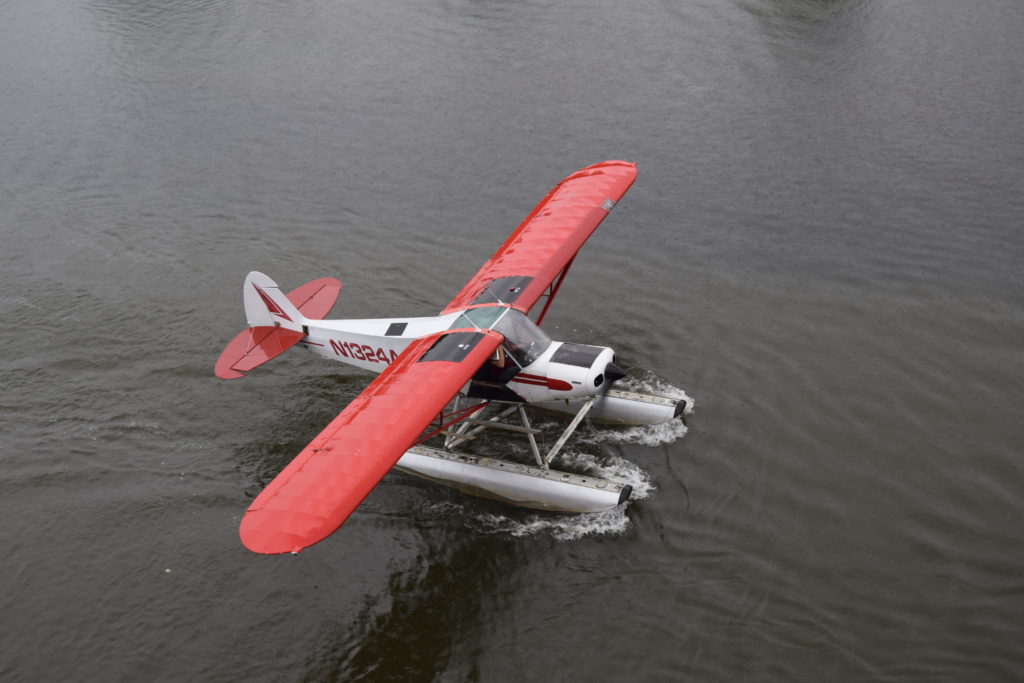
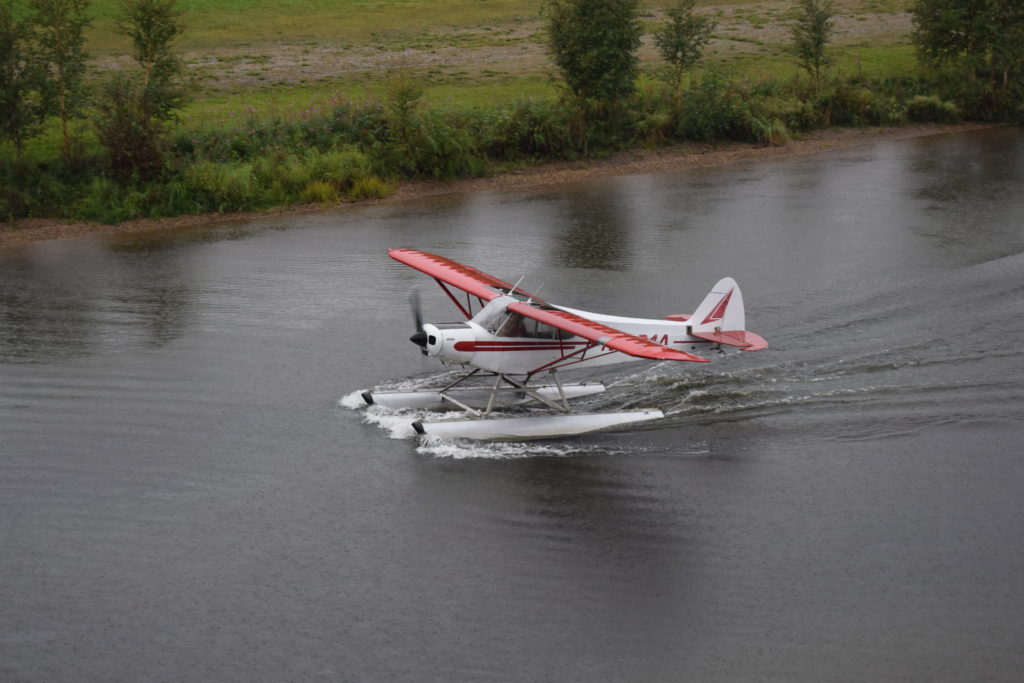
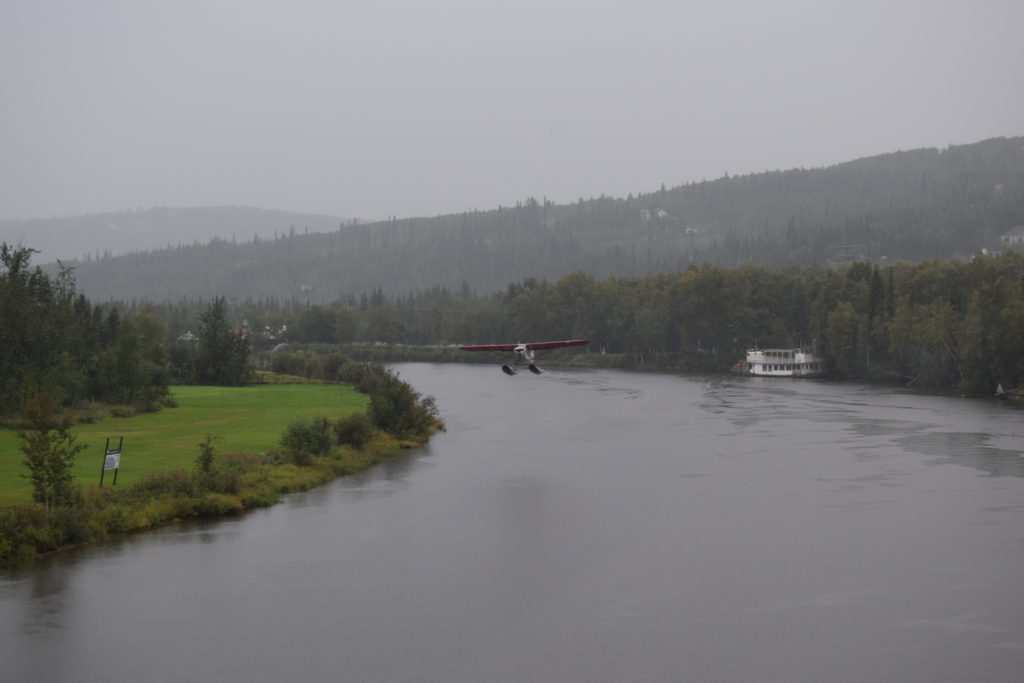
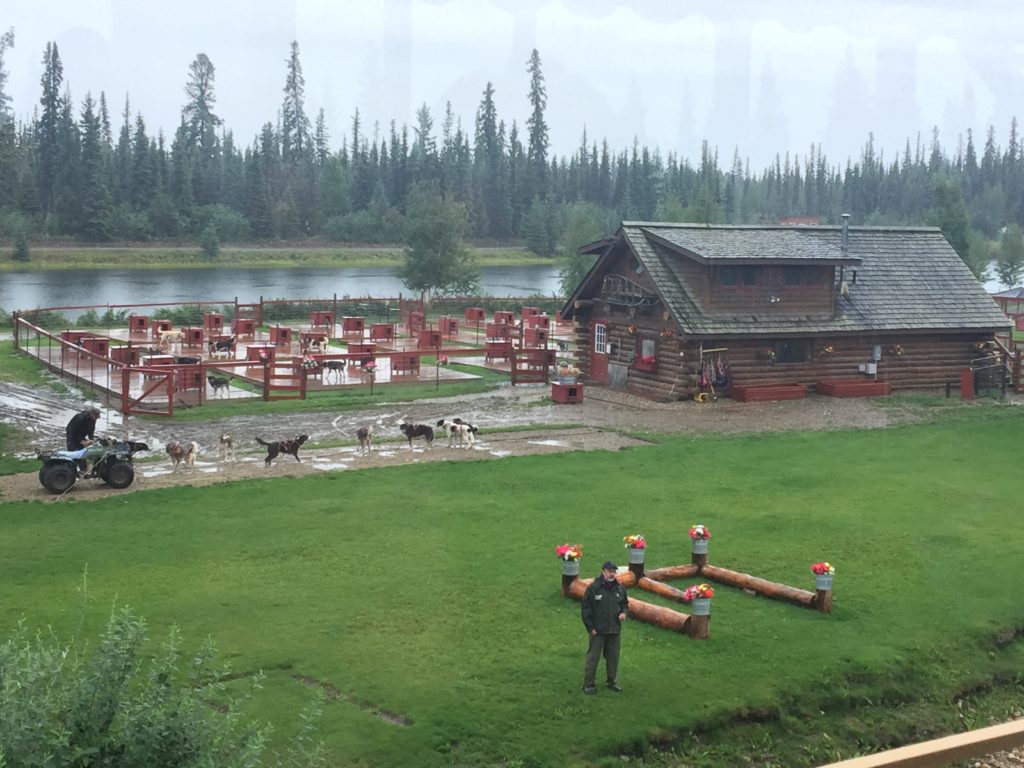
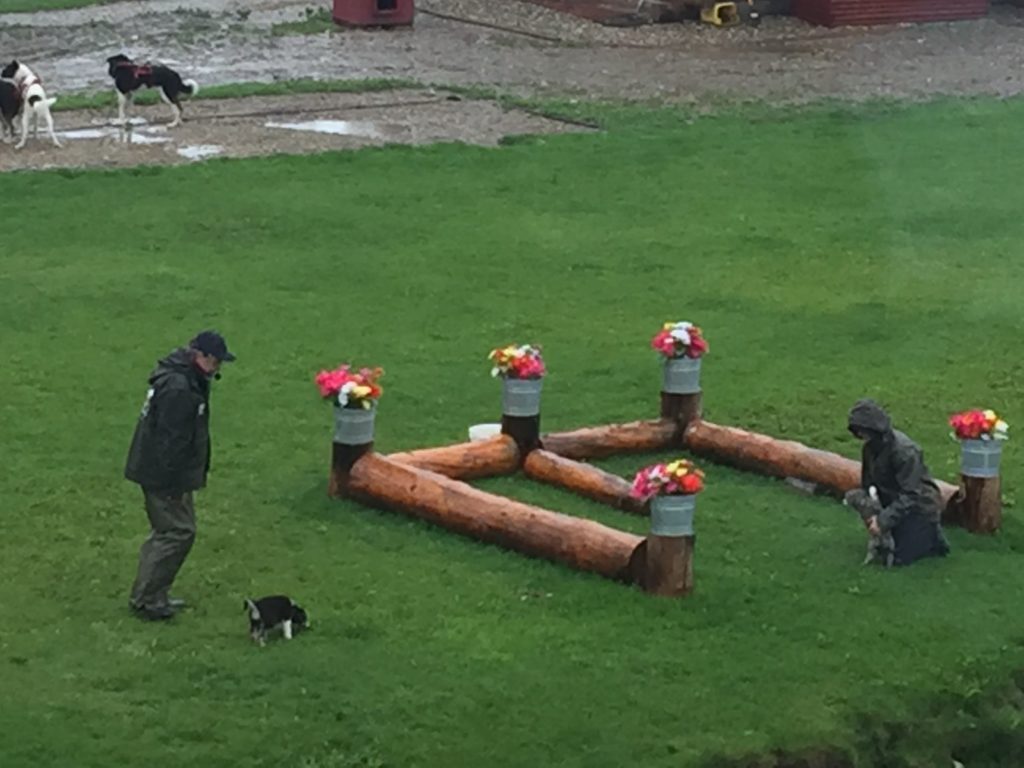
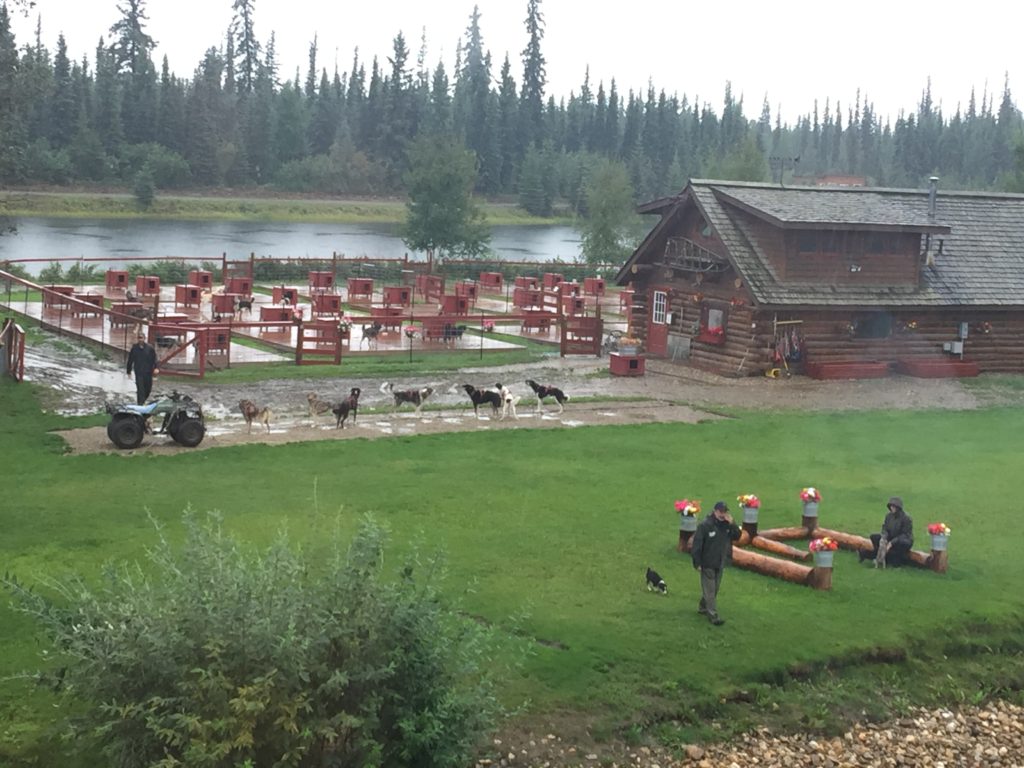
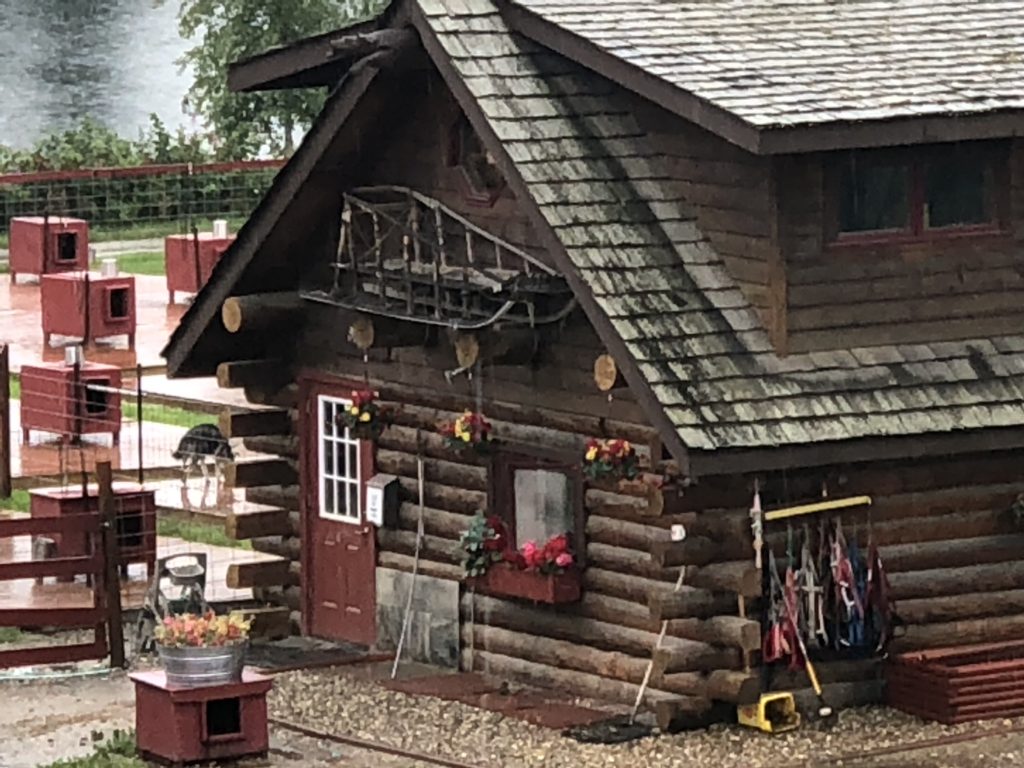
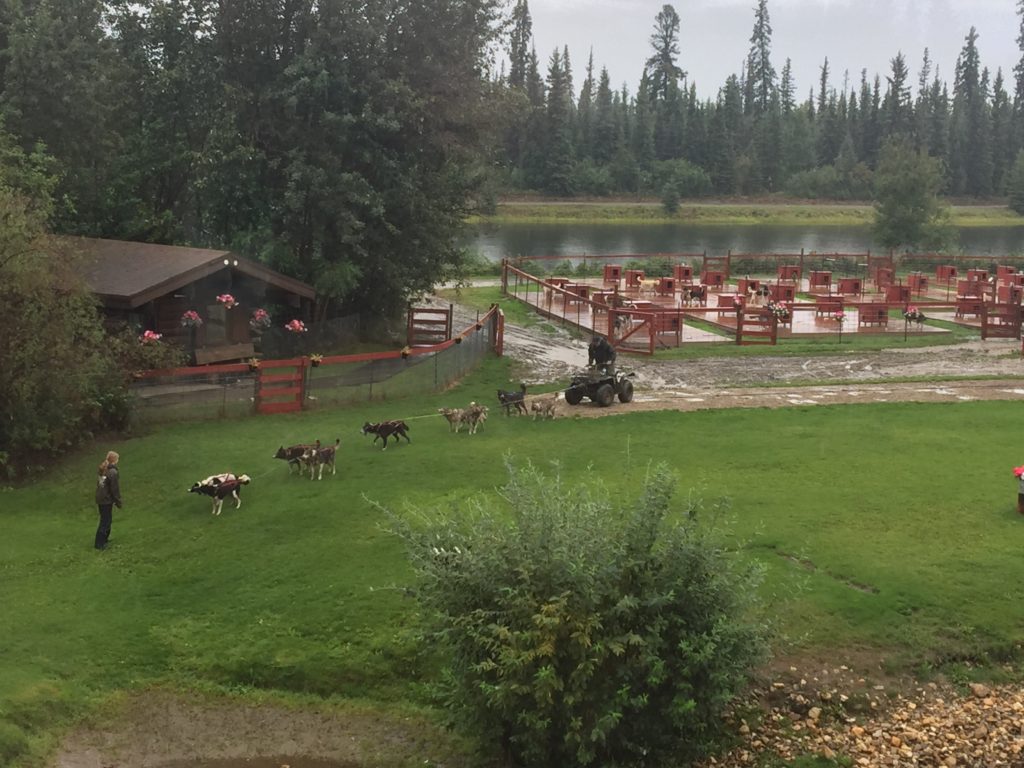
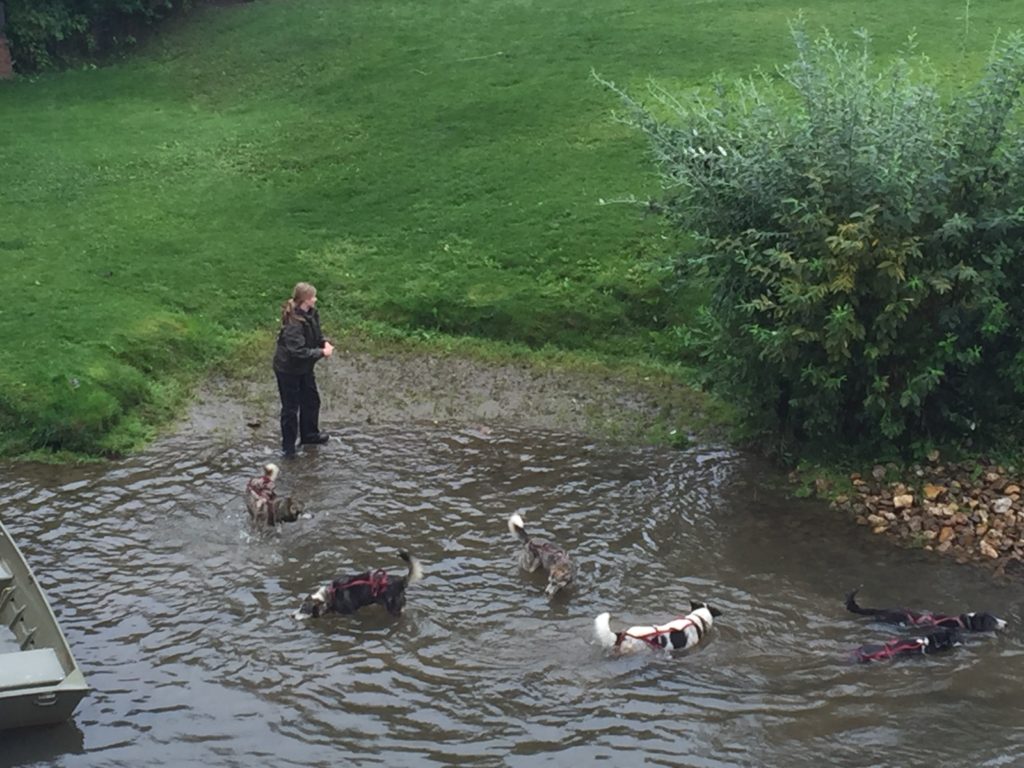
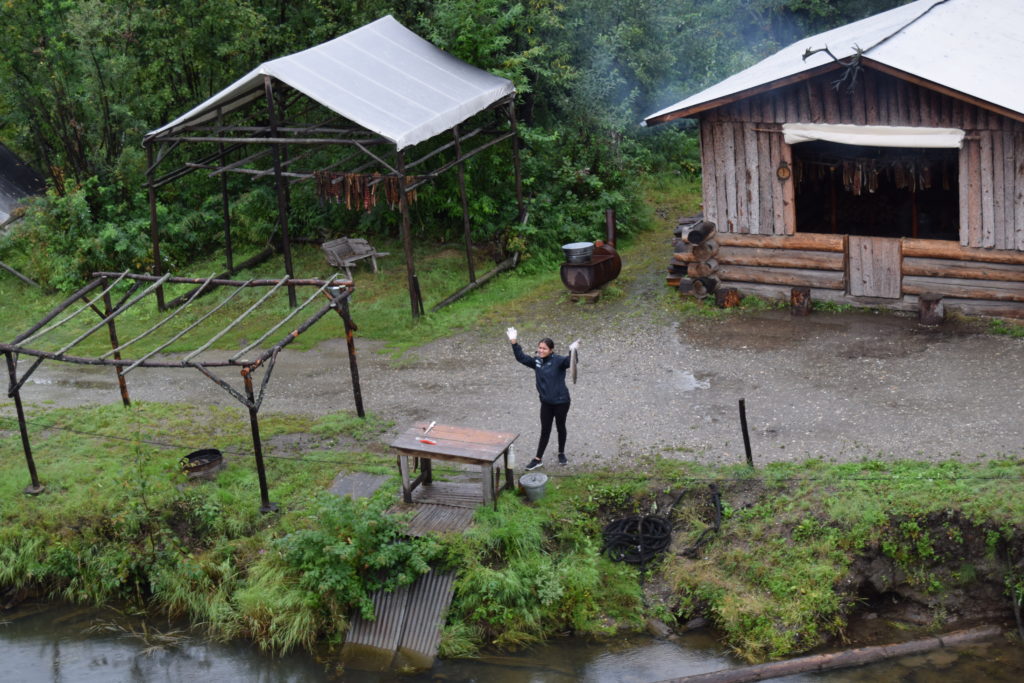
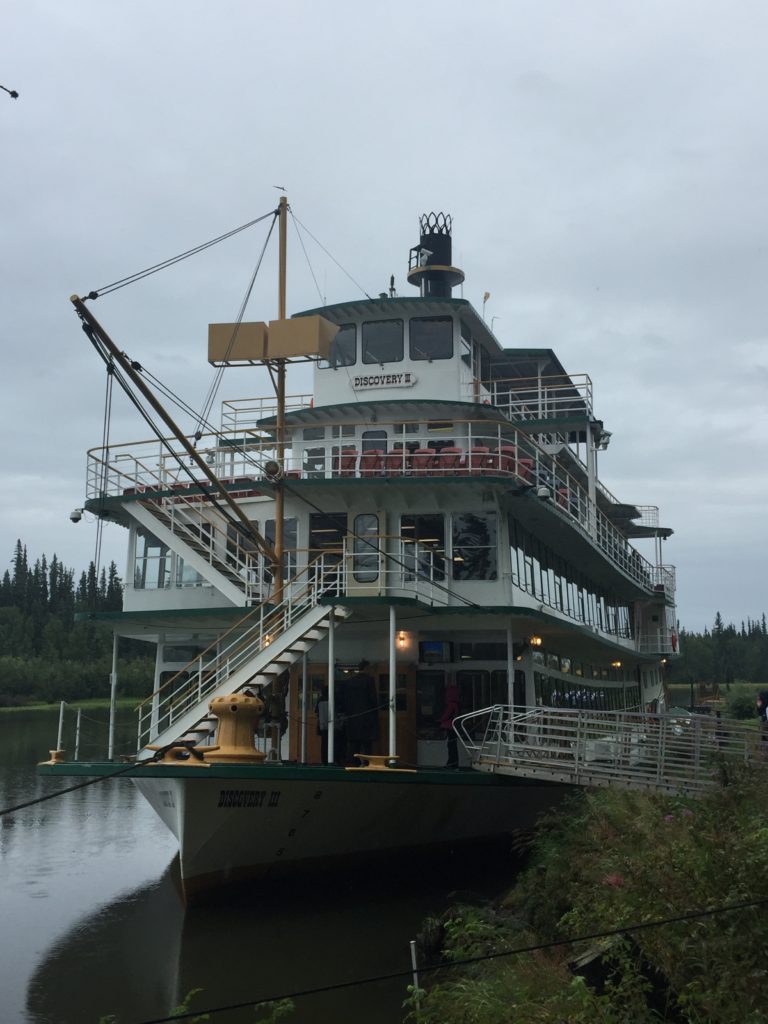
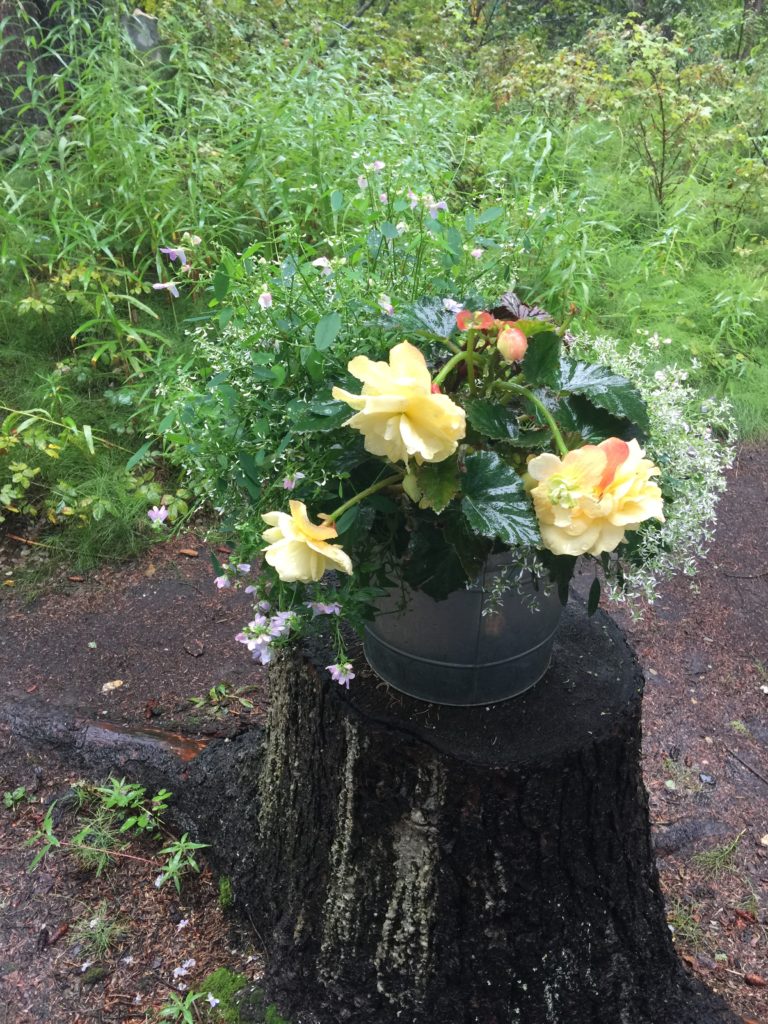
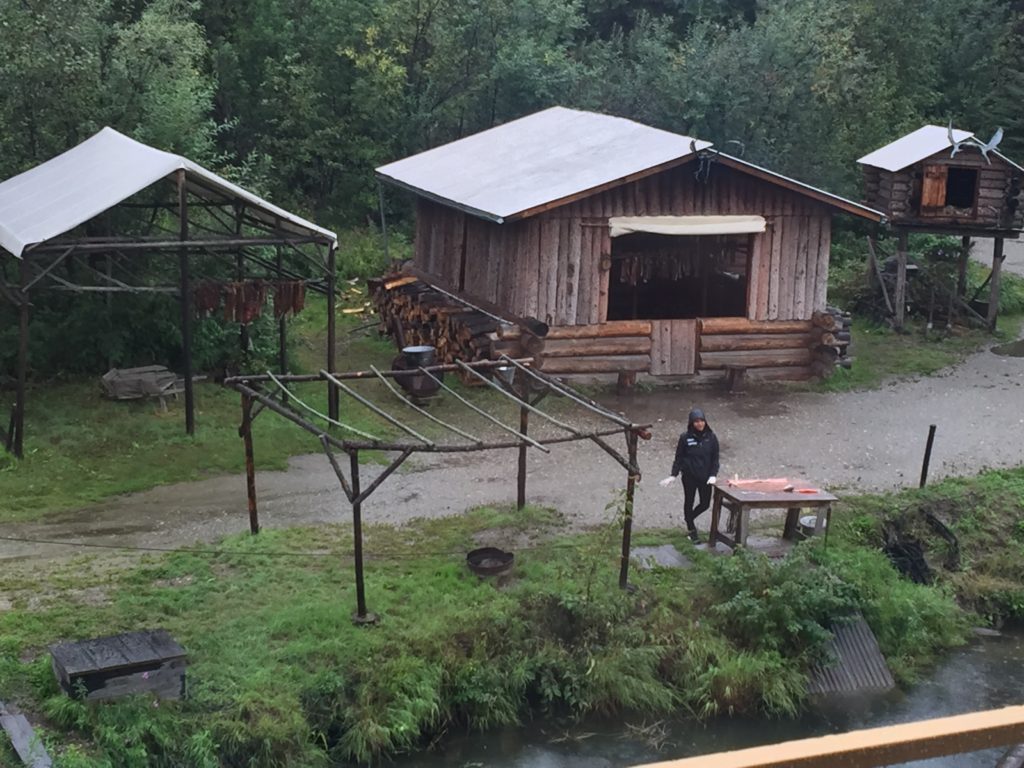
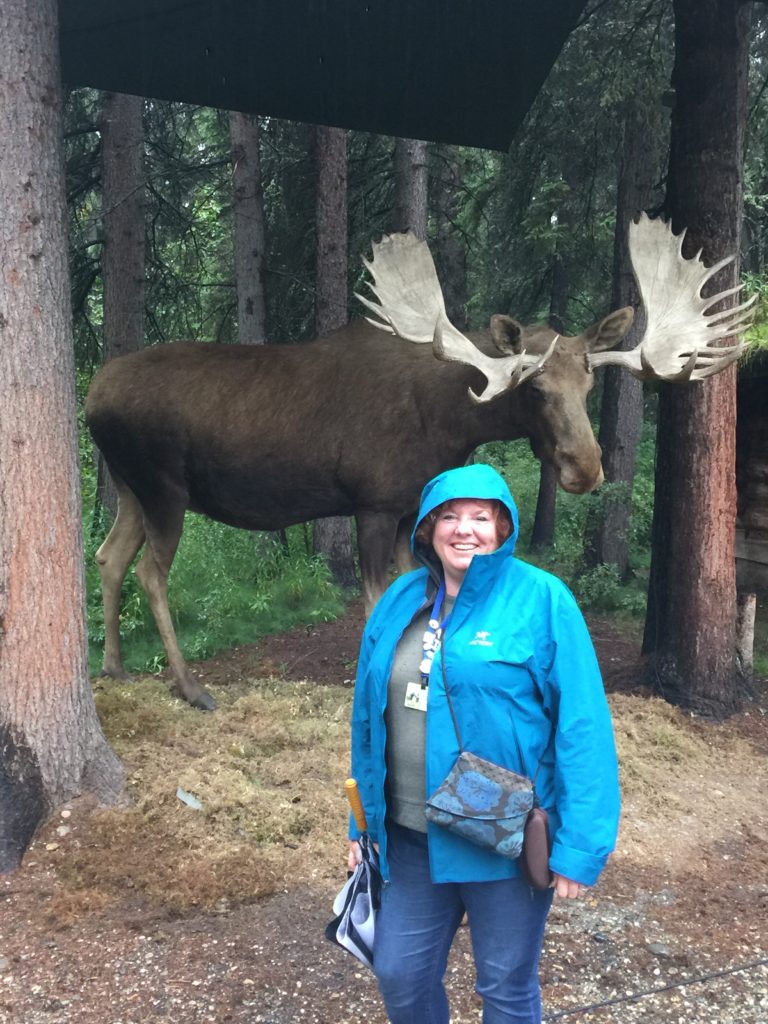
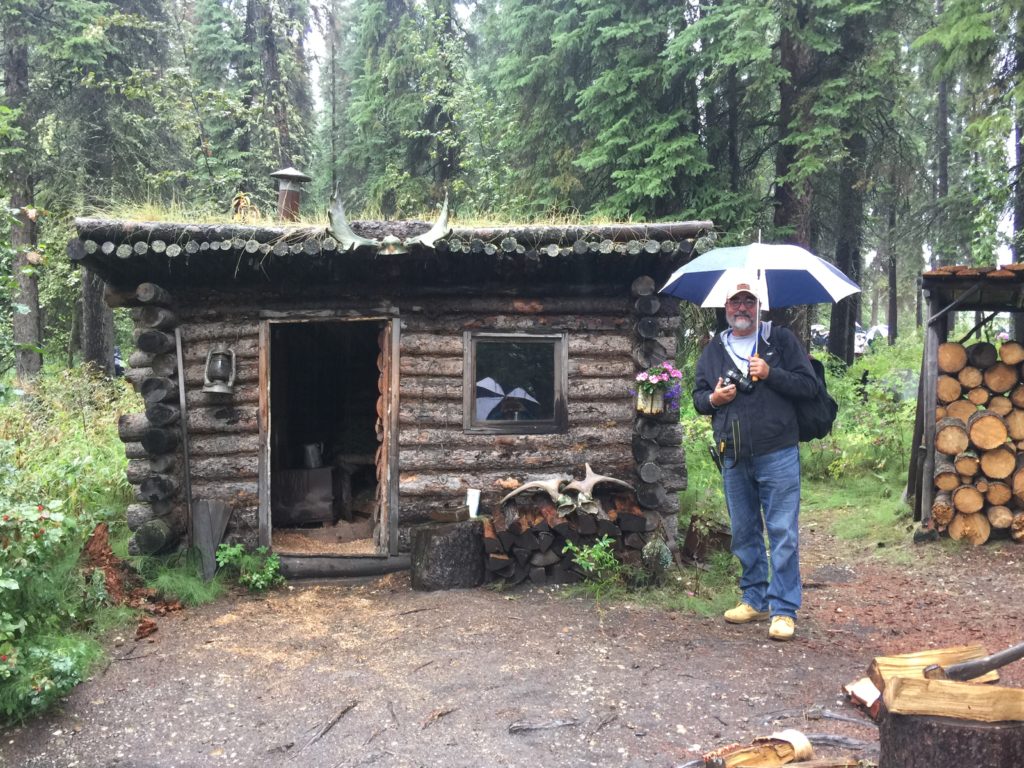
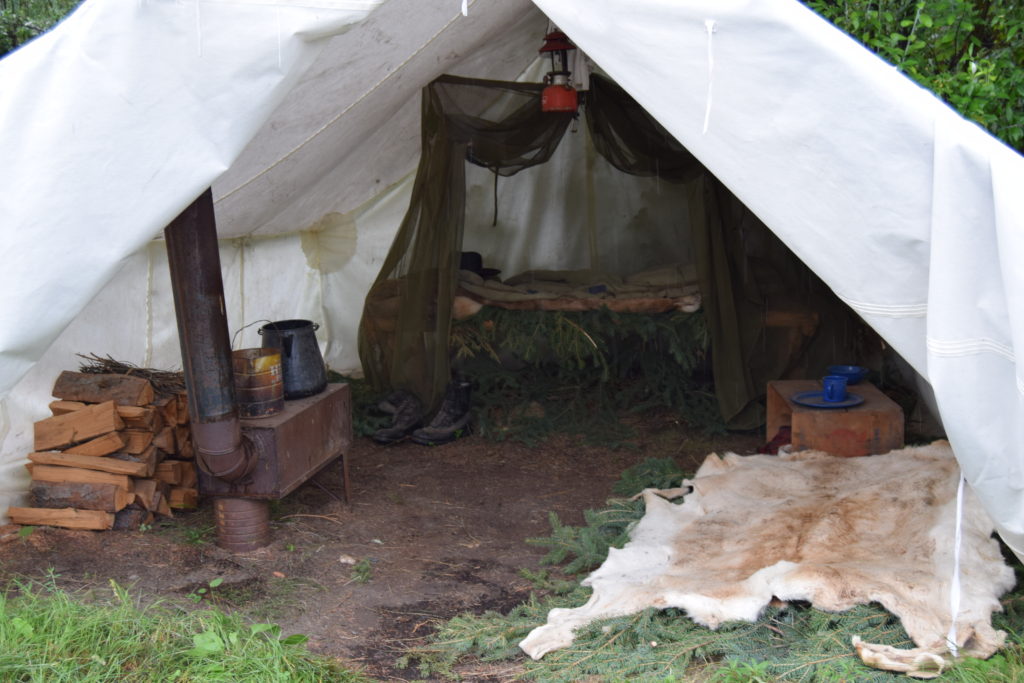
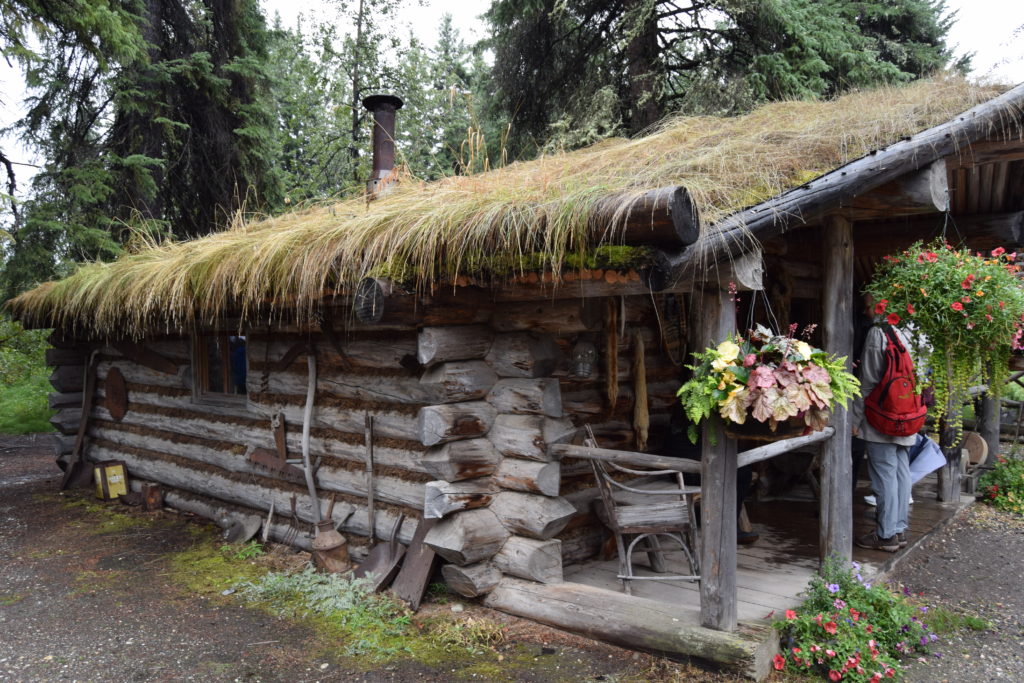
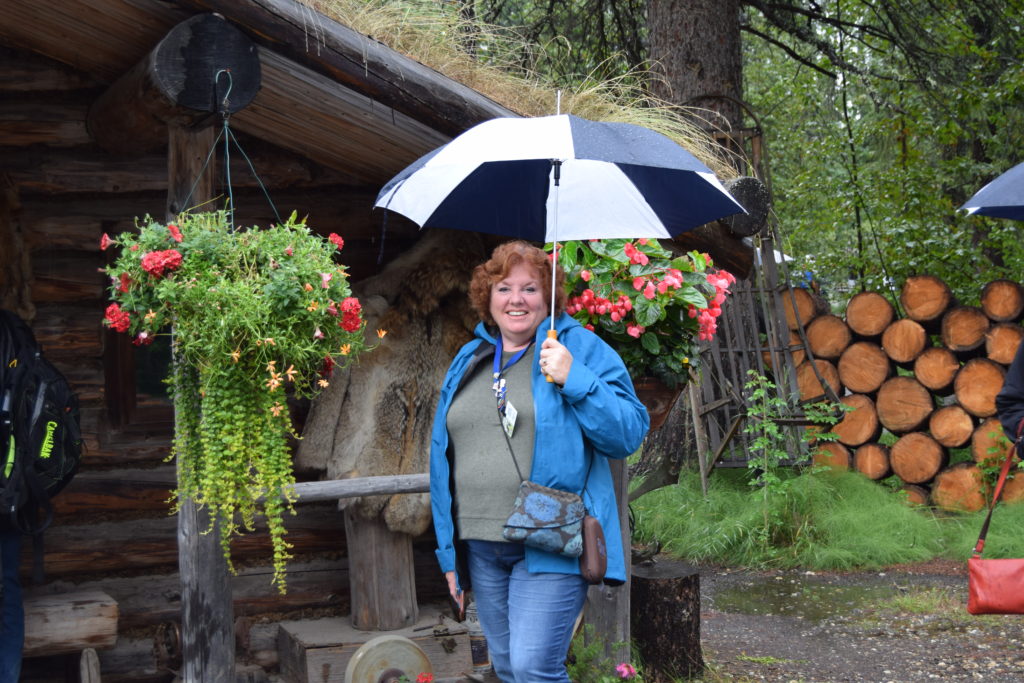
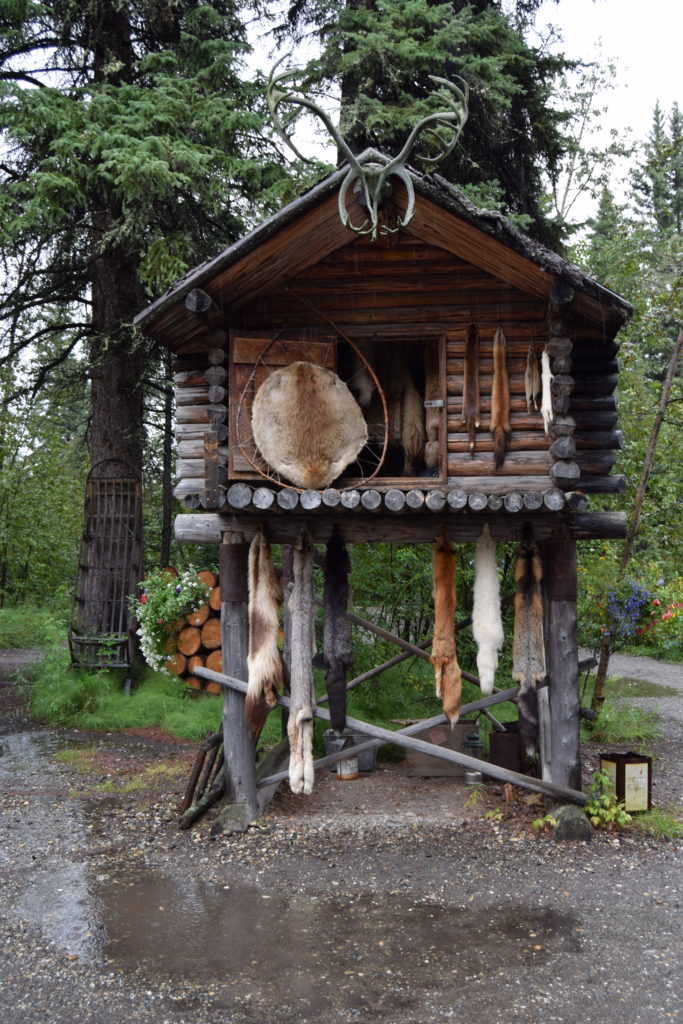
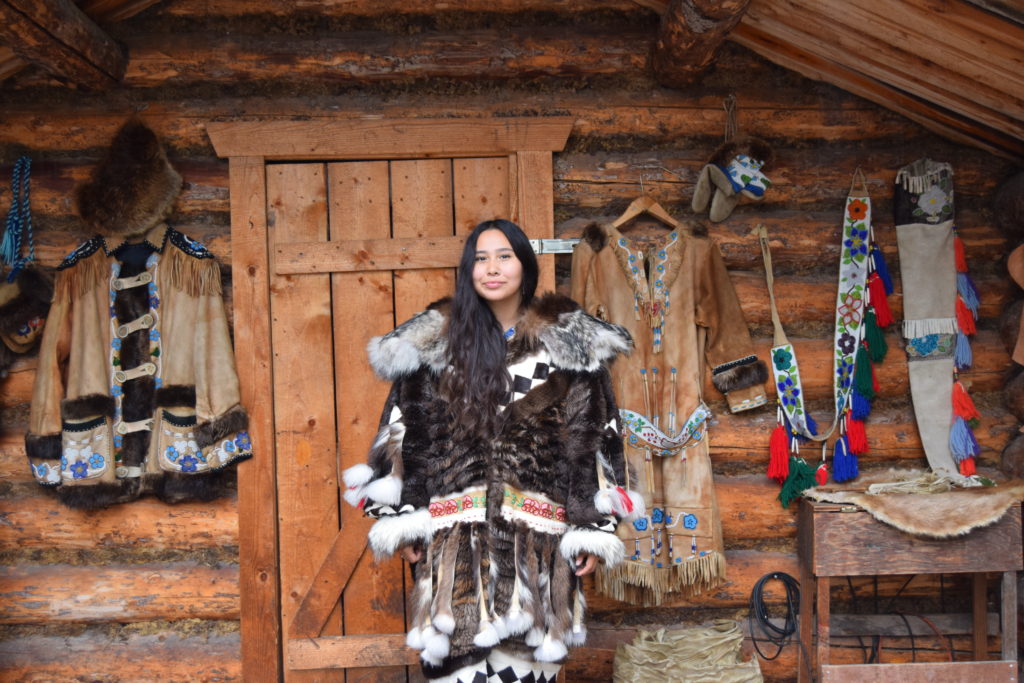
On our free day we drove out to the Chena Hot Springs Resort where we got to see a bull moose off in the distance on the way out and a cow with her 2 calves right along the road on our way back. She was very unconcerned about us and continued feeding on the tall plants, even when we backed up so we could get pictures. We did not try out the Hot Springs but only explored the area. The road stops at the Hot Springs so you cannot go any further, unless you can get a flight out of their private airport!
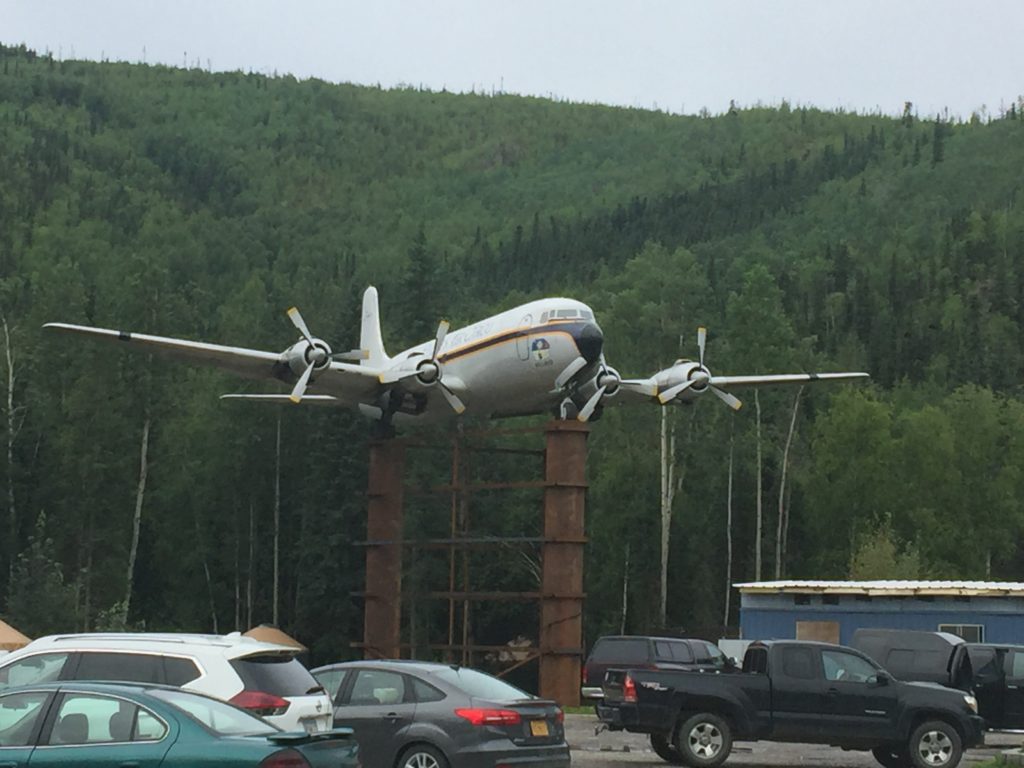
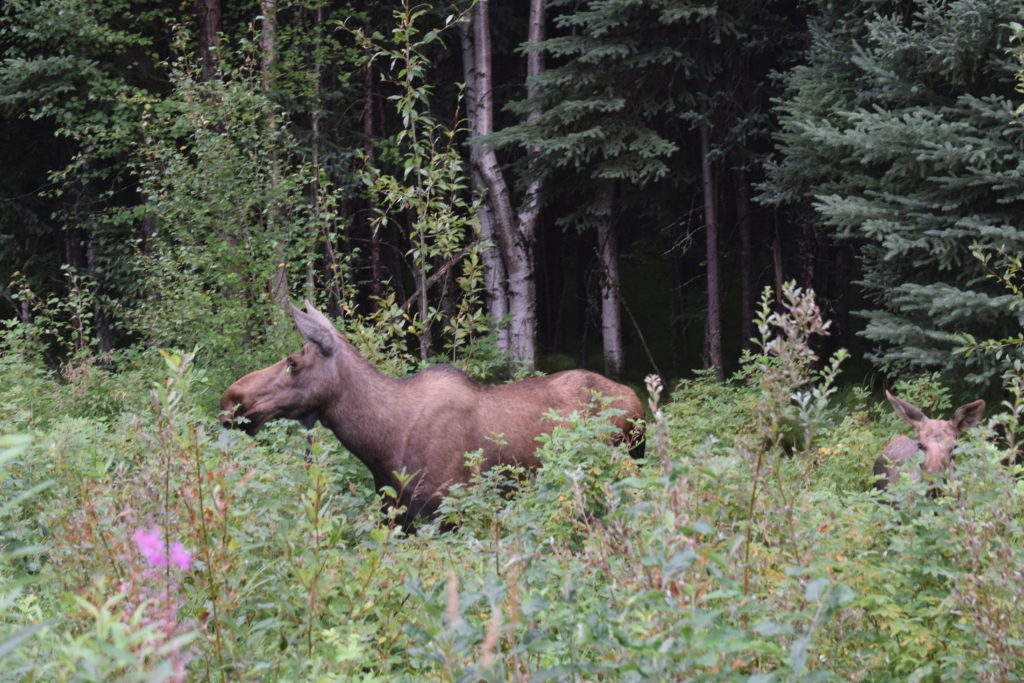
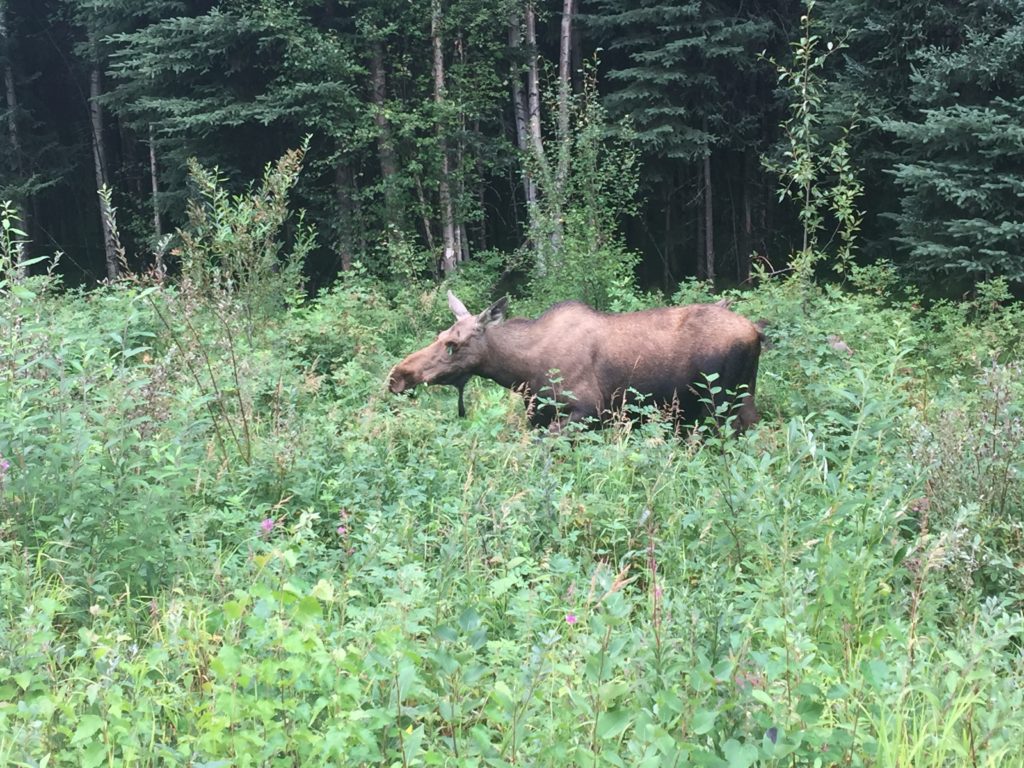
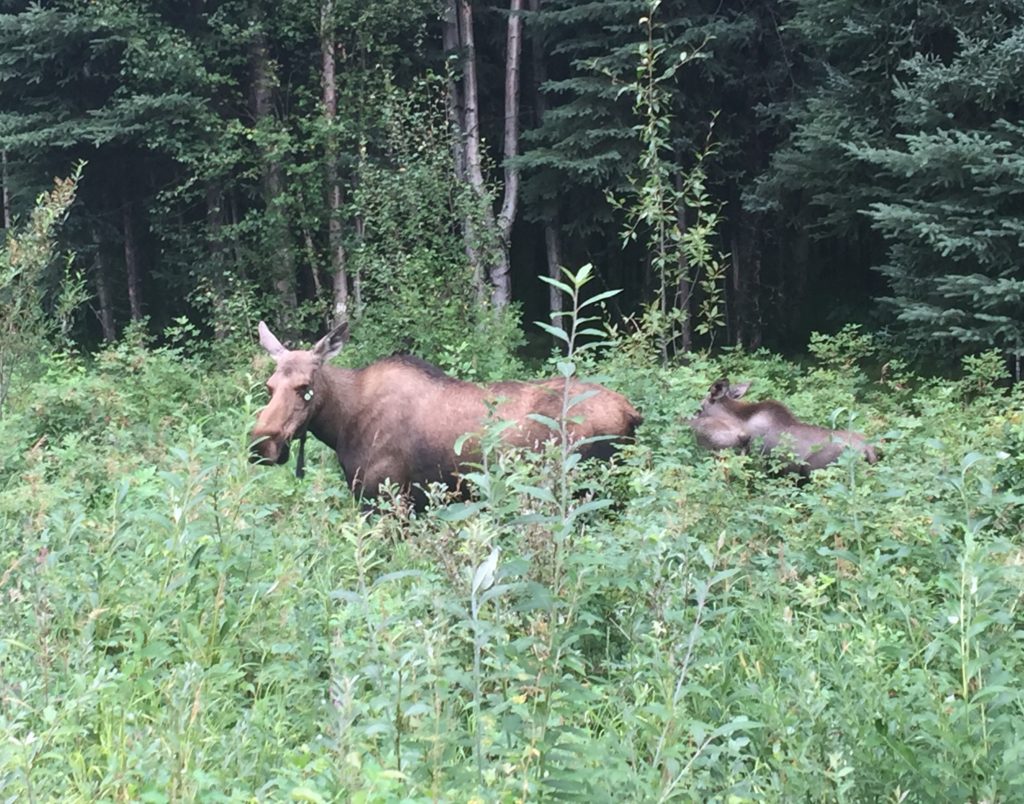
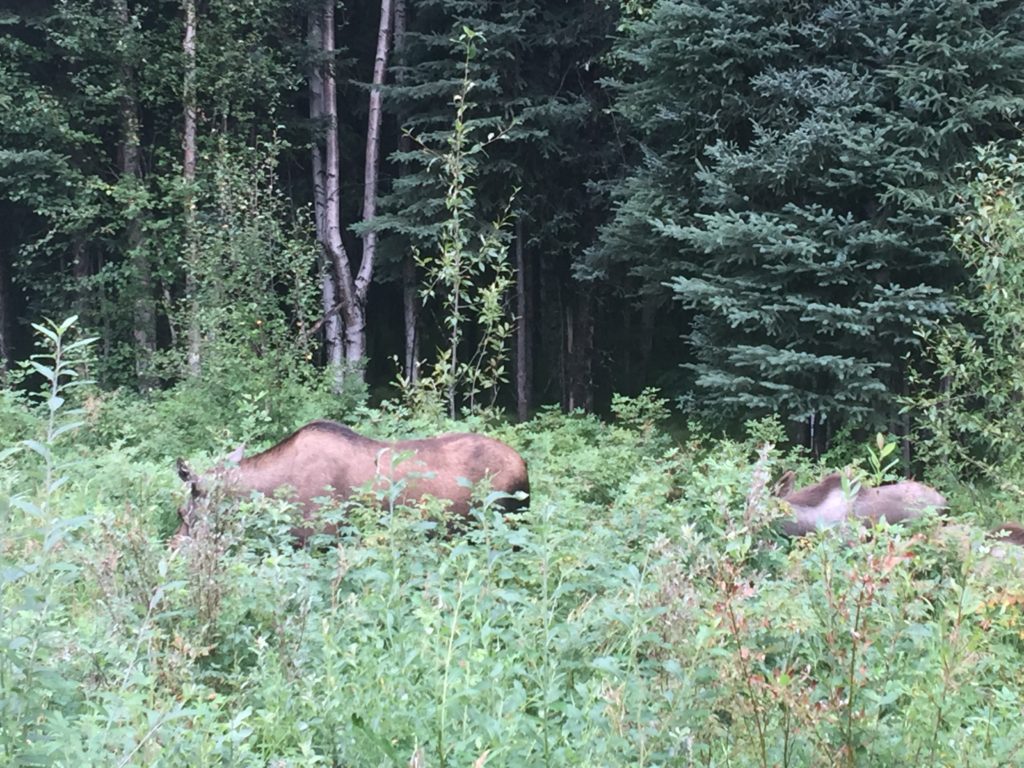
On our way back to the campground, we went to downtown Fairbanks to see if we could replicate any of Randy’s pictures. We stopped at the visitor center to see the Antler Arch and their museum. While there we learned that many things had changed in Fairbanks it the 50+ years since Randy had been there. The “unofficial” end of the Alaska Highway marker had been moved. The circle of flags at the University was replaced with a water fountain that was also later replaced as it didn’t work too well with all of the cold weather. We were able to find where the mural in one of his photos had been painted on 2nd avenue; it just was a different one. We found the new location for the end of the Alaska Highway sign so that we could take a few pictures. This is now in their downtown area where it appeared that many homeless were staying. A sad state similar to a lot of larger cities. Randy also found a store selling gold and ivory artifacts that he went back to the next afternoon while I got my nails done.
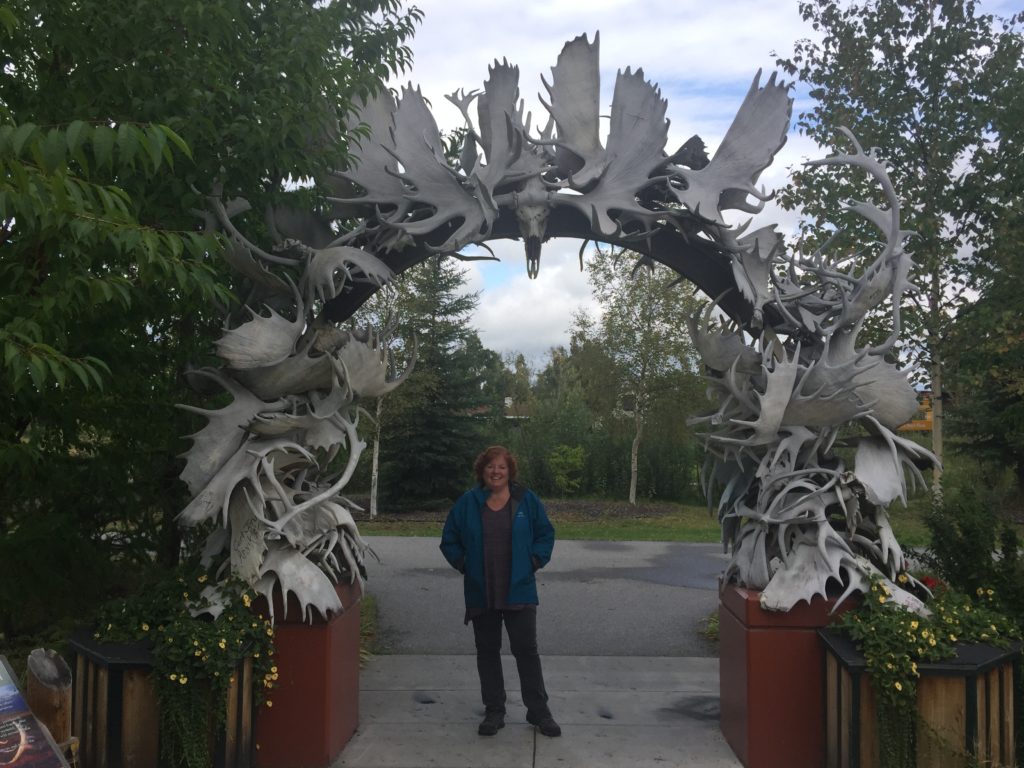
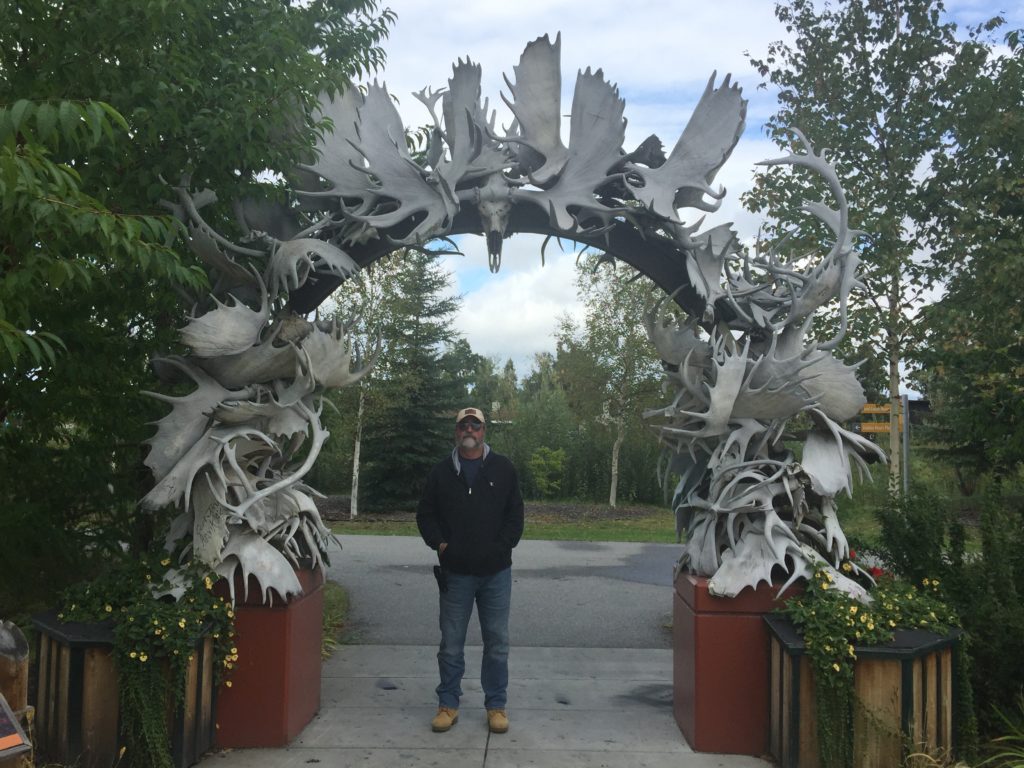
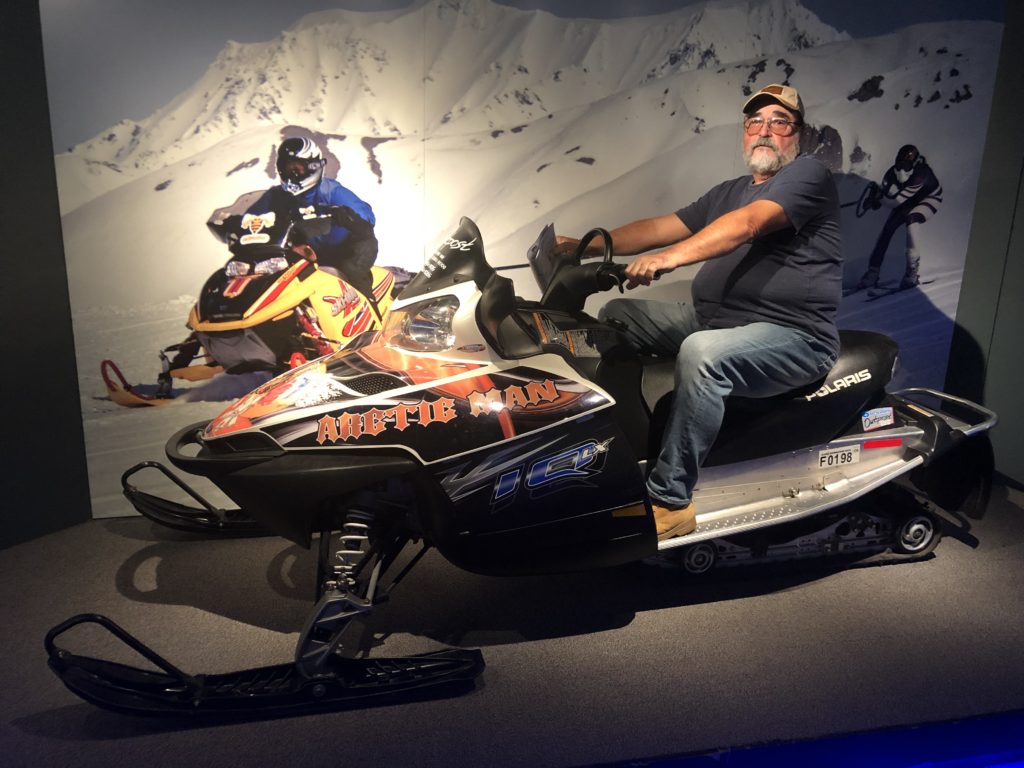
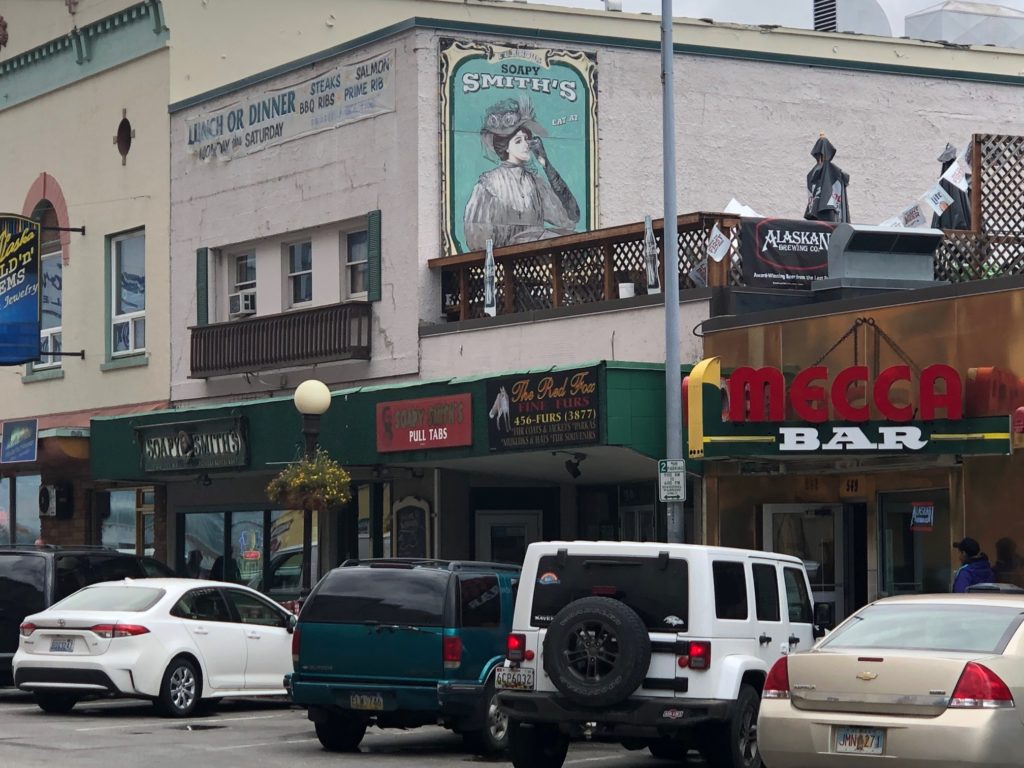
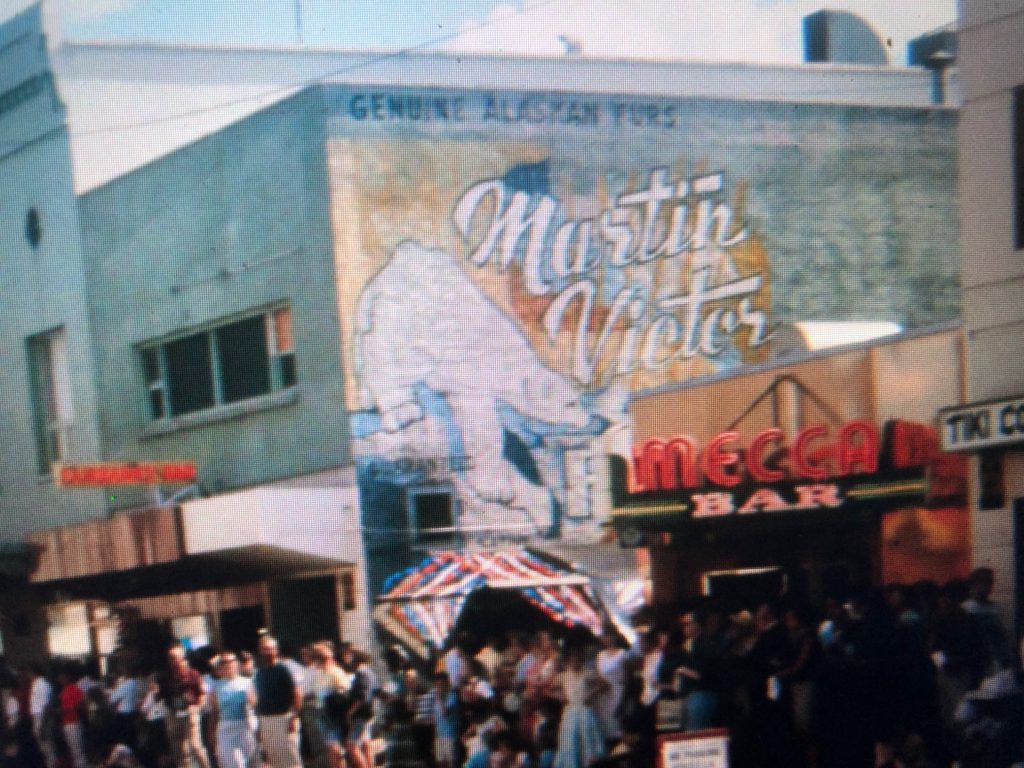
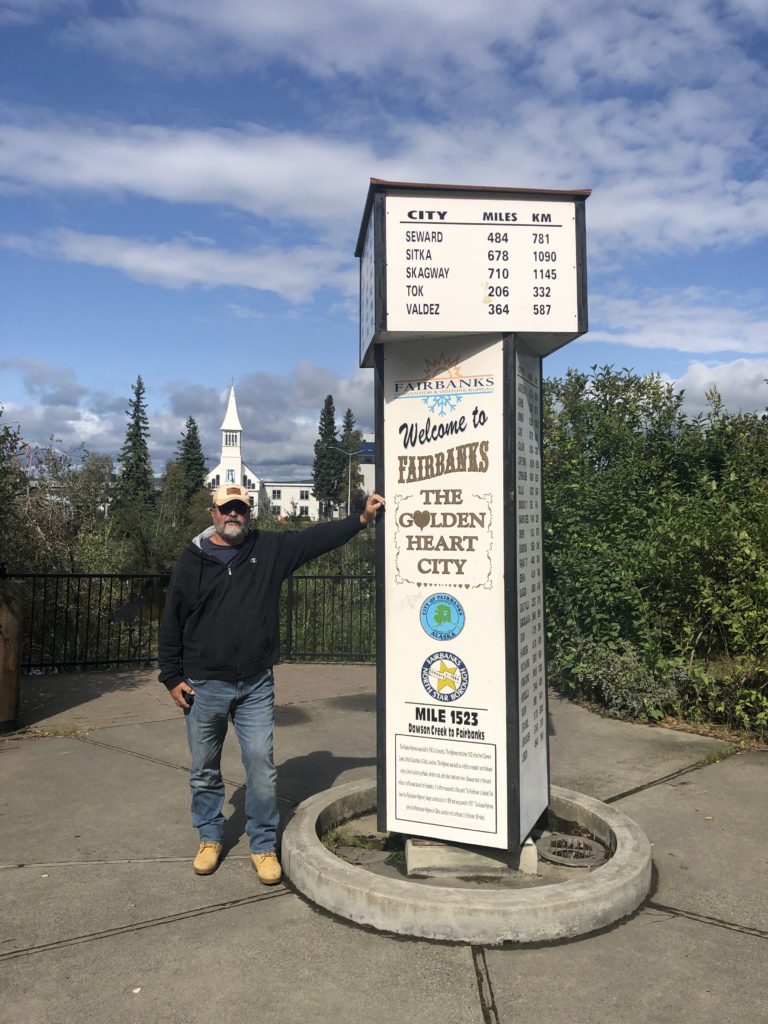
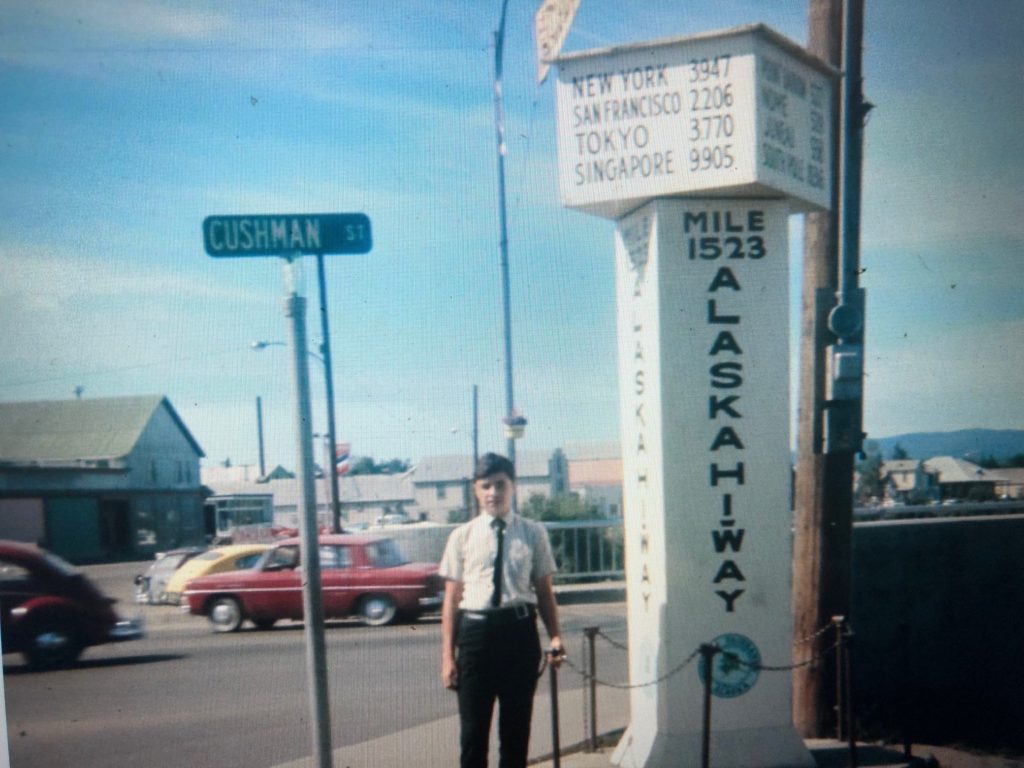
On our last full day in Fairbanks we did a tour of Gold Dredge #8. This tour was a little different than the other dredge tours we had taken. First, we got a look at and details about the Trans-Alaska Pipeline System (TAPS), commonly known as the Alaska pipeline that ran across the entrance to the mine. This section is part of the 420-miles above ground segments that are built in a zig-zag configuration on 78,000 vertical support members to allow for expansion and contraction of the pipe. The pipeline is built above the ground in areas where there is permafrost. Because of the heat of the oil as it moves through the pipeline, which is about 120 degrees, the pipeline could not be buried in permafrost because the hot temperature of the oil would have melted the icy soil. Powered by 10 pump stations, it takes about five and a half days for the oil to travel the 800 miles of pipeline from Prudhoe Bay to Valdez, where it is loaded into tankers and transported through Prince William Sound. Later in our tour we will be at Valdez and be able to see the end of the pipeline!
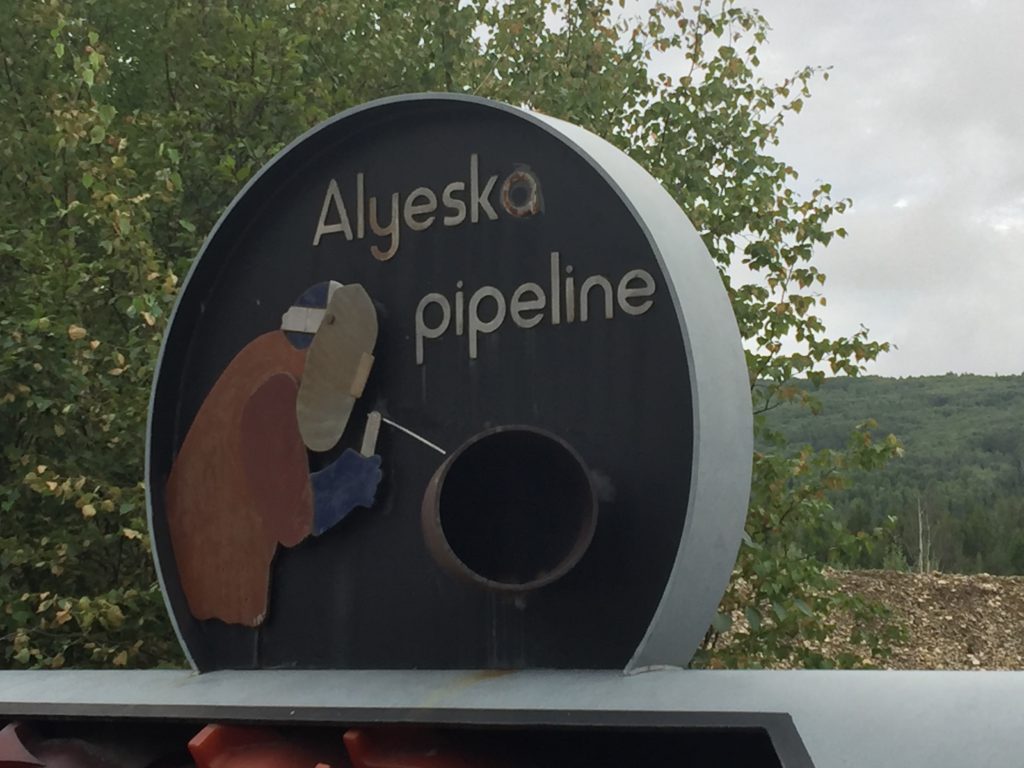
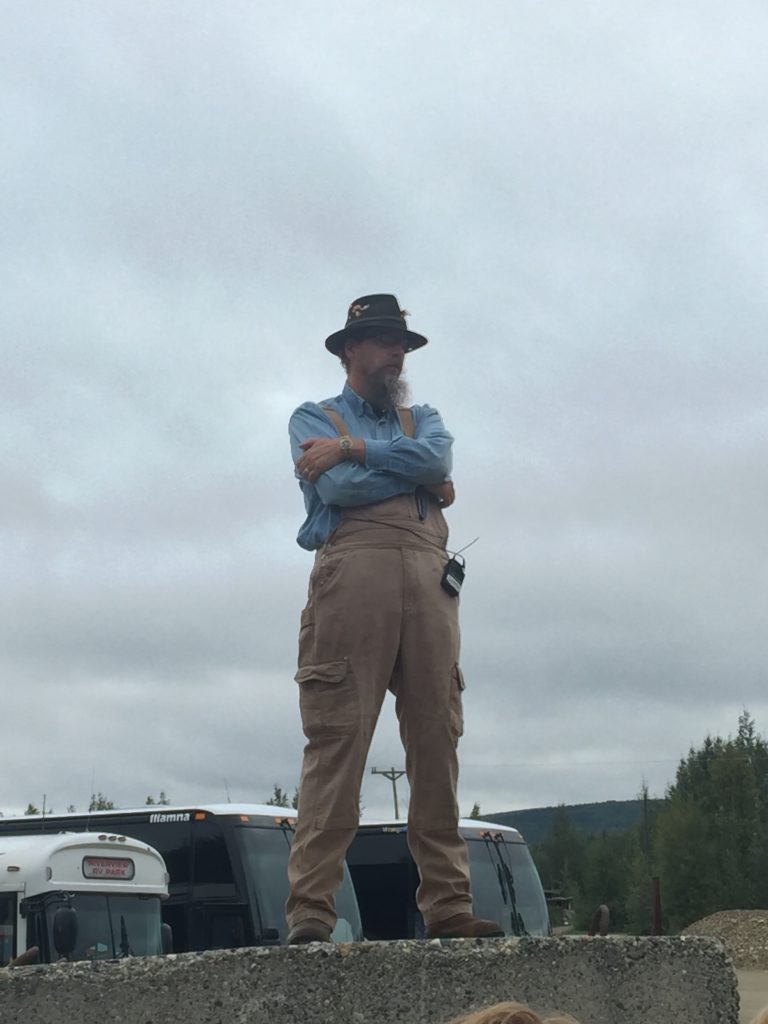
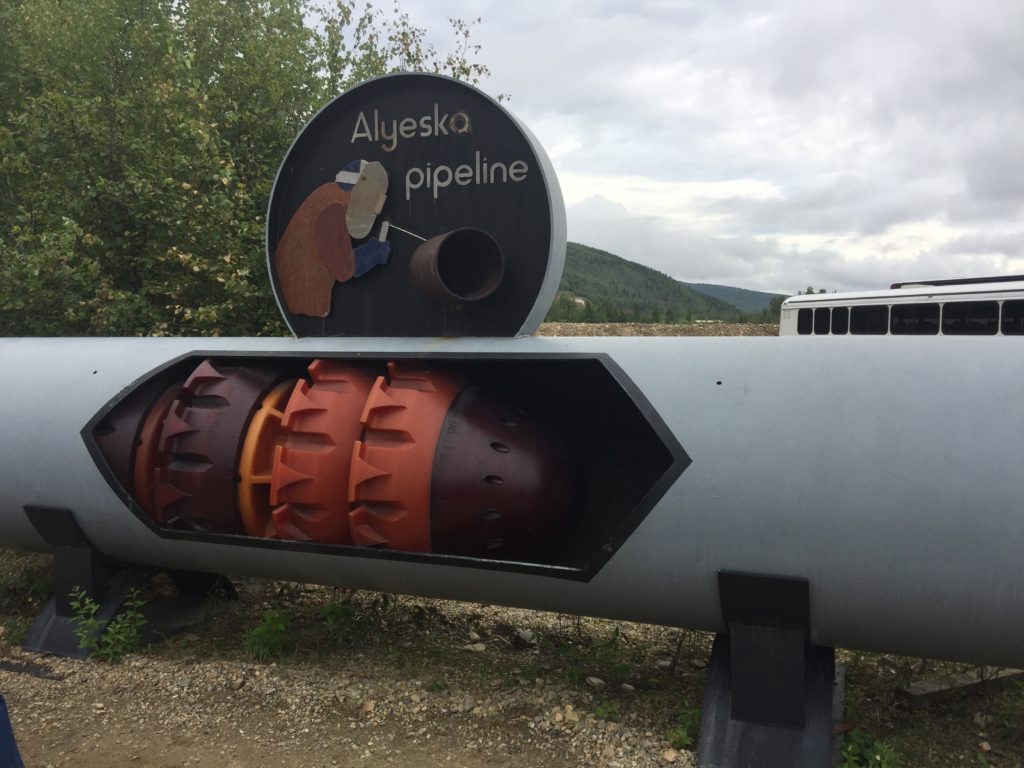
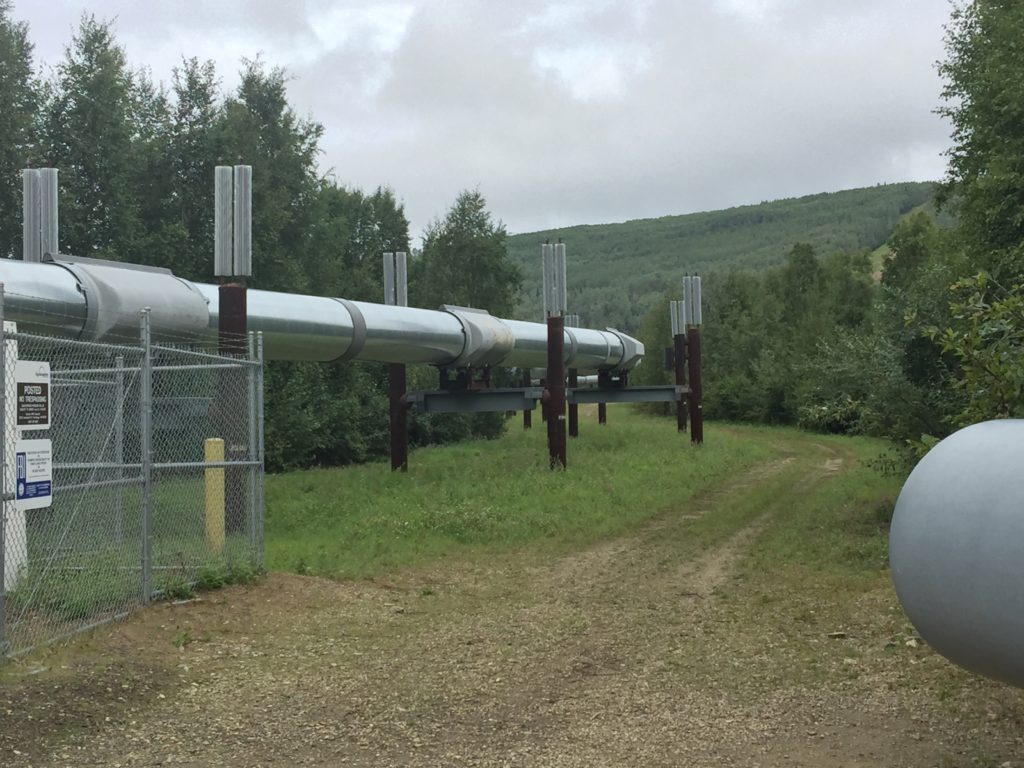
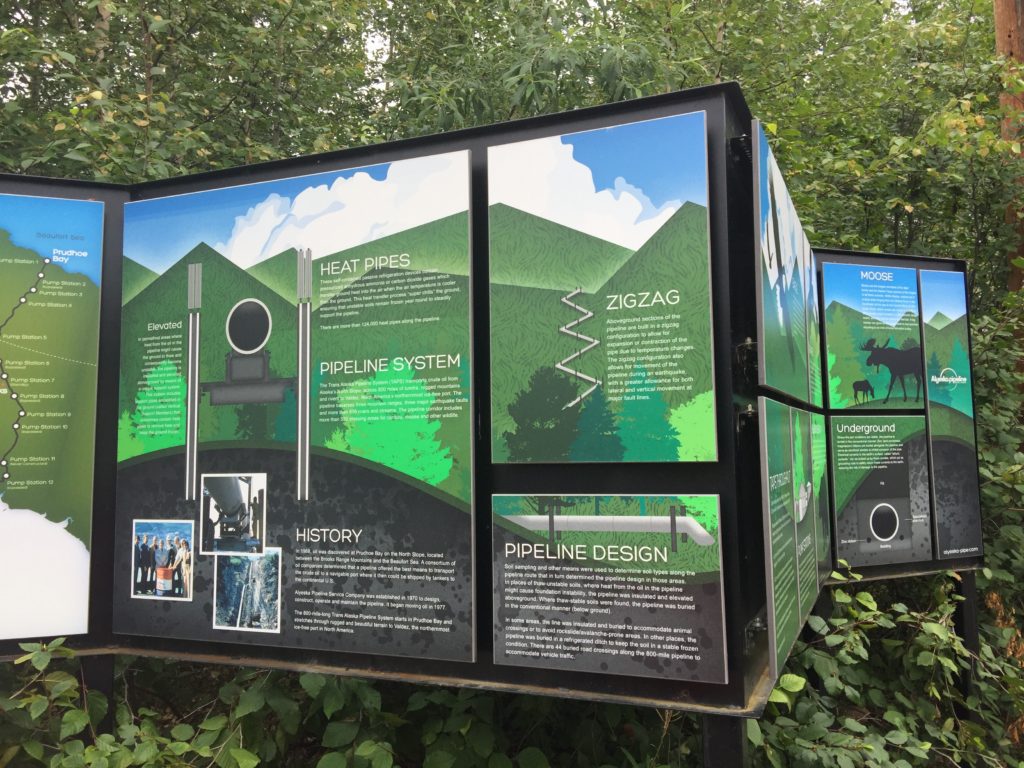
After our discussion on the pipeline, we got on a train to tour the grounds at the gold mine with lessons on mining techniques as well as another lesson on panning for gold. There were demonstrations on how miners dug shafts 300′ down for drift mines and how after the 1920’s dredges were used after the overburden was removed using hydraulic pressure and cold water points to thaw the gravel exposed so the dredge could run the paydirt. The point drivers at that time made about 33.5 cents a day for their 12 hour day. It took about 7 years to prep the land before the dredge could recover any gold so dredges were an expensive operation to set up. One fact they told us is that after the gold was melted down into bars, the bars were wrapped in brown paper and mailed to San Francisco! None were ever lost.
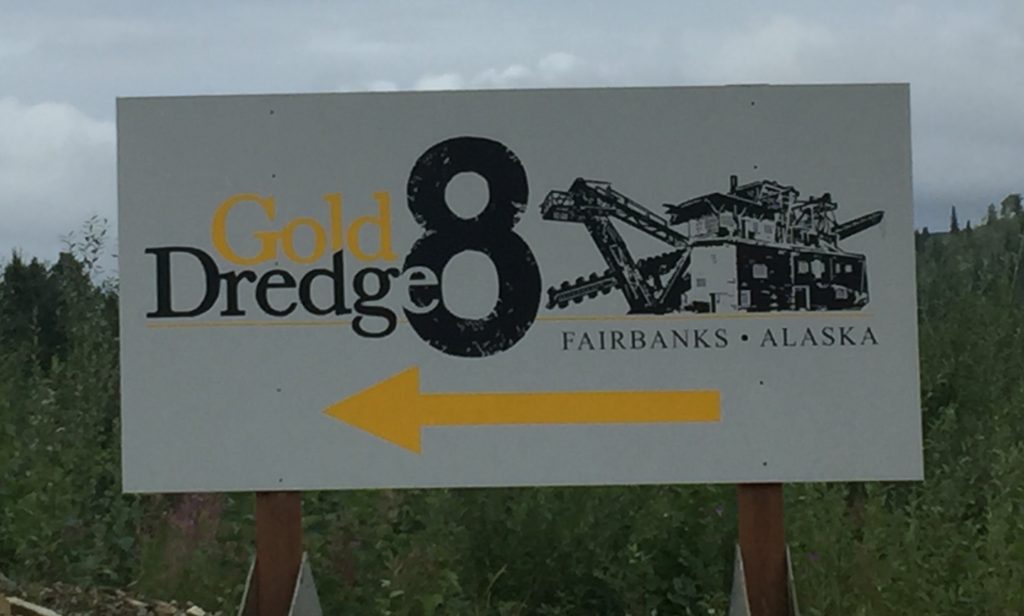
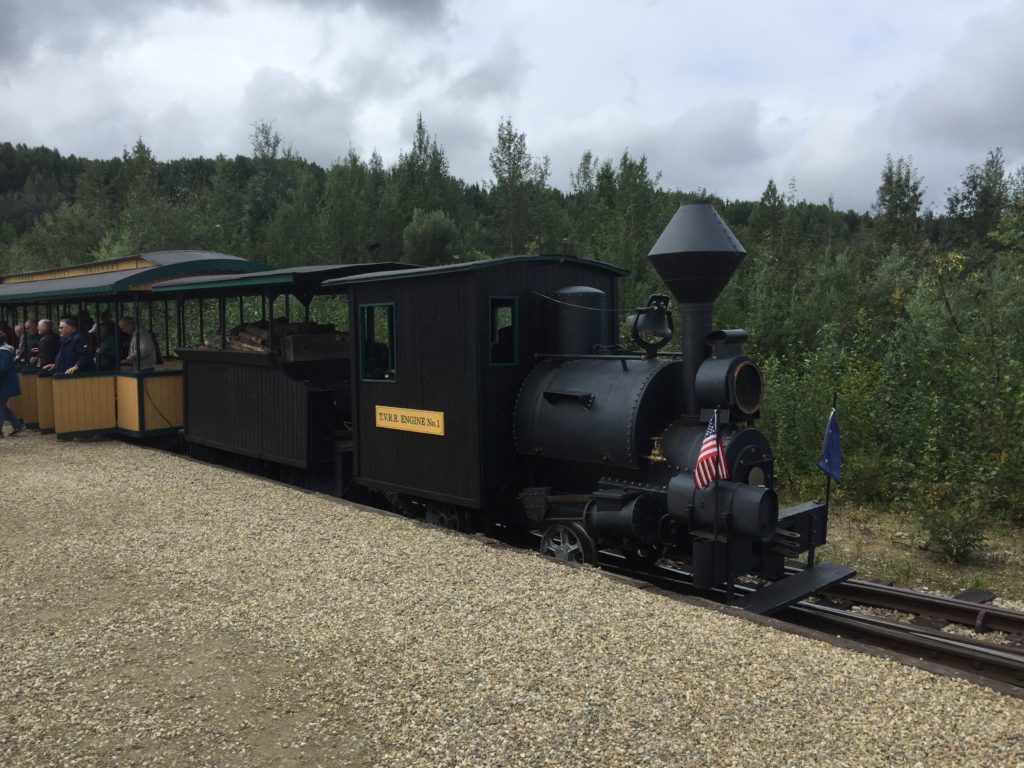
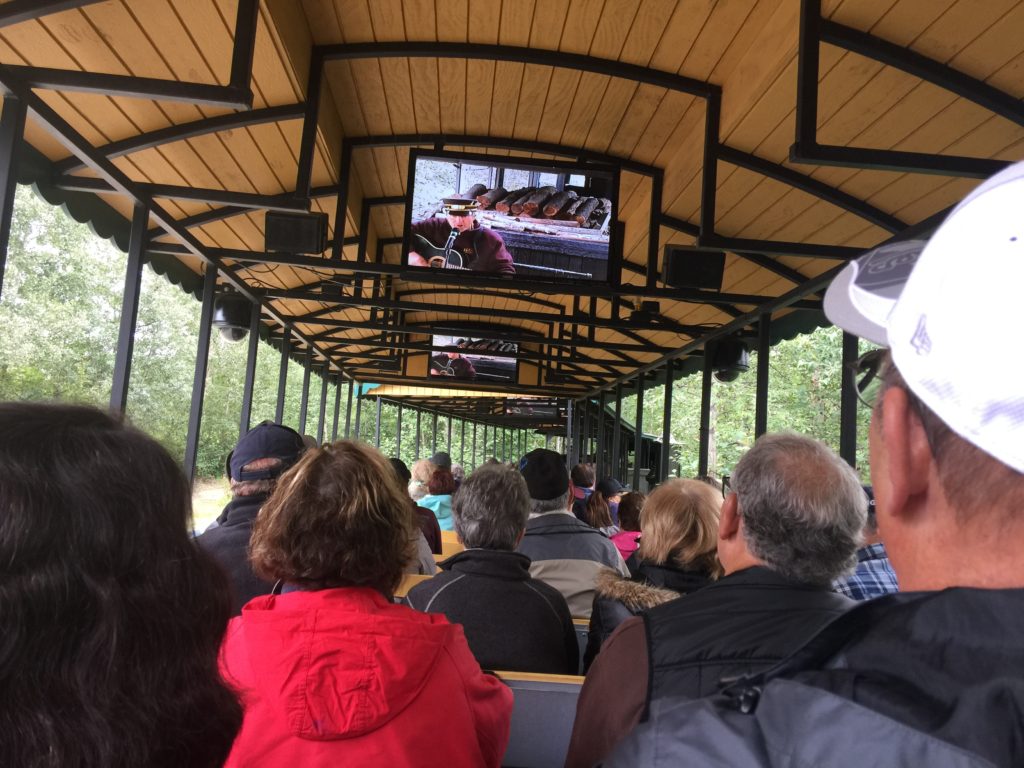
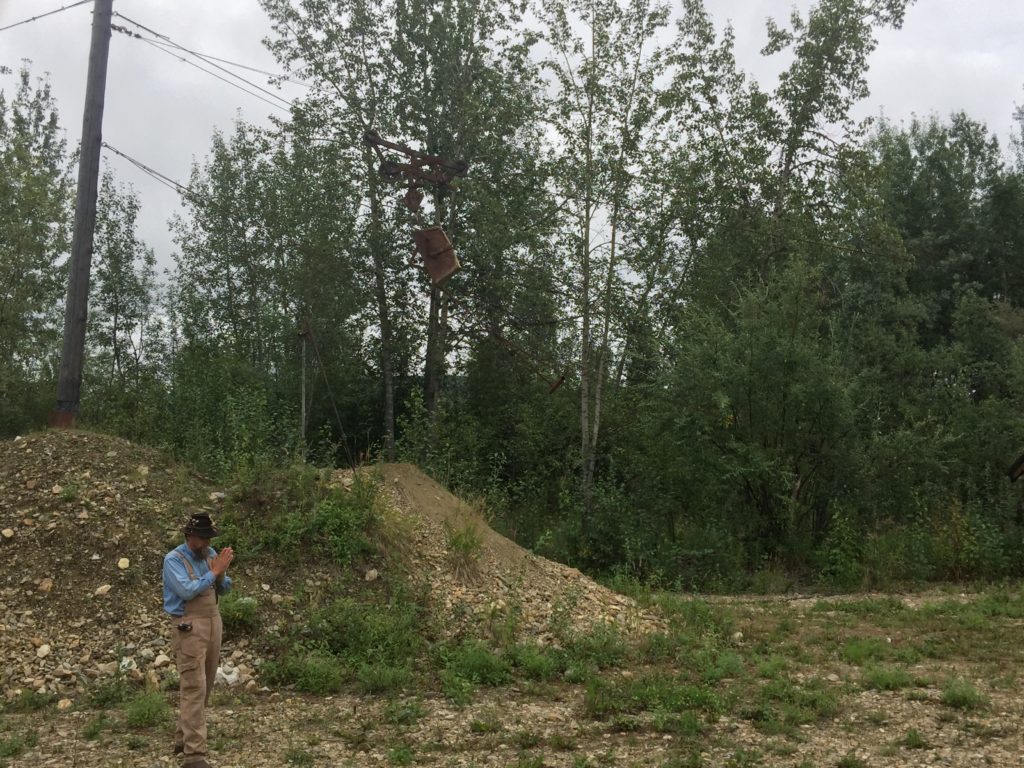
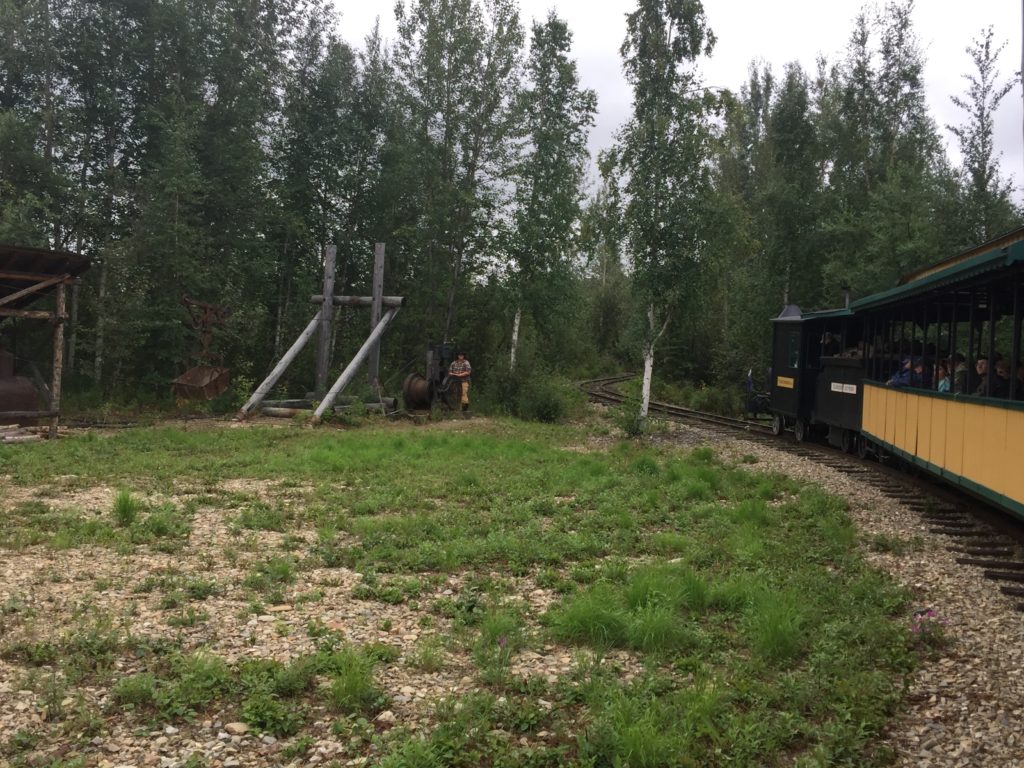
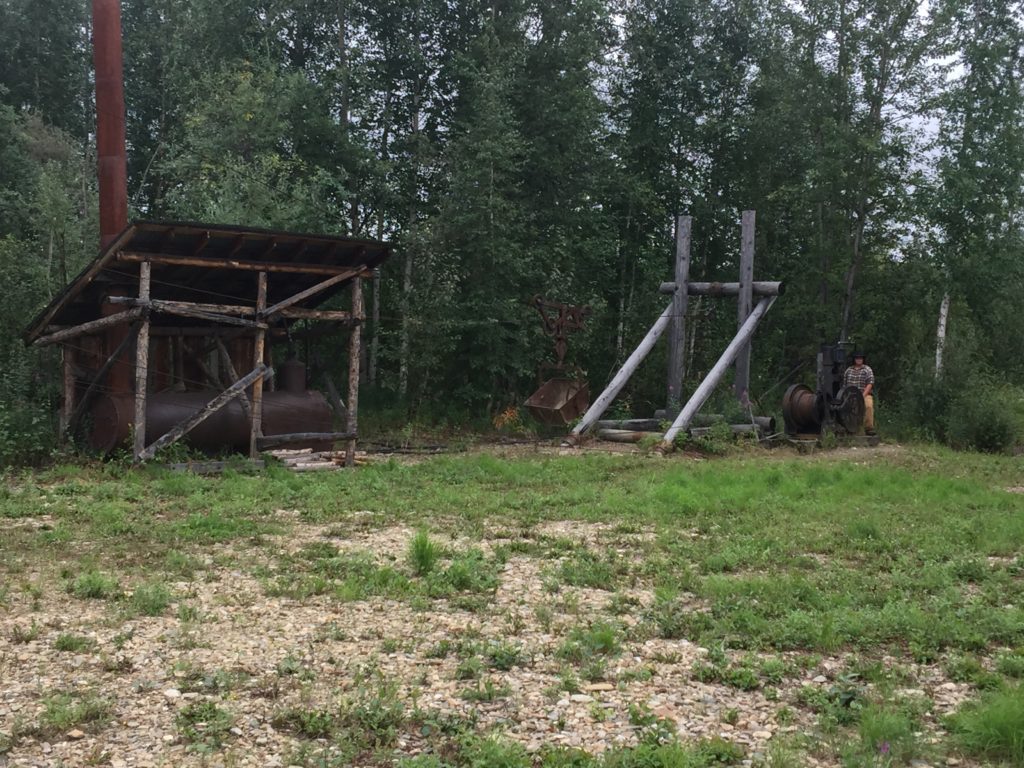
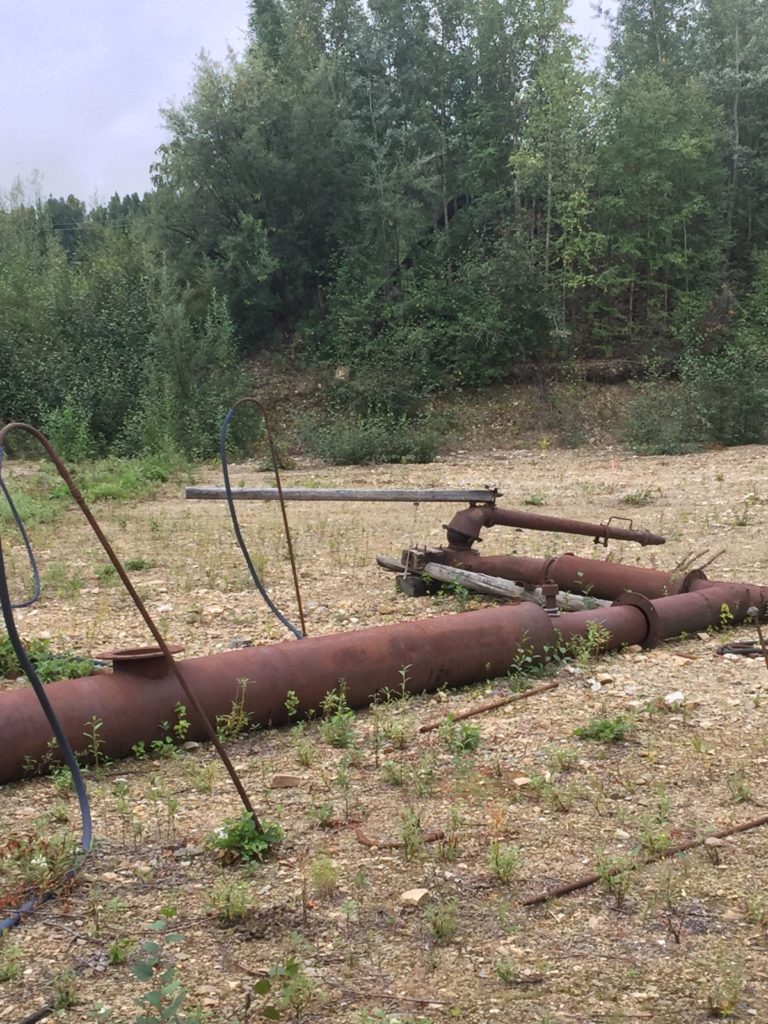
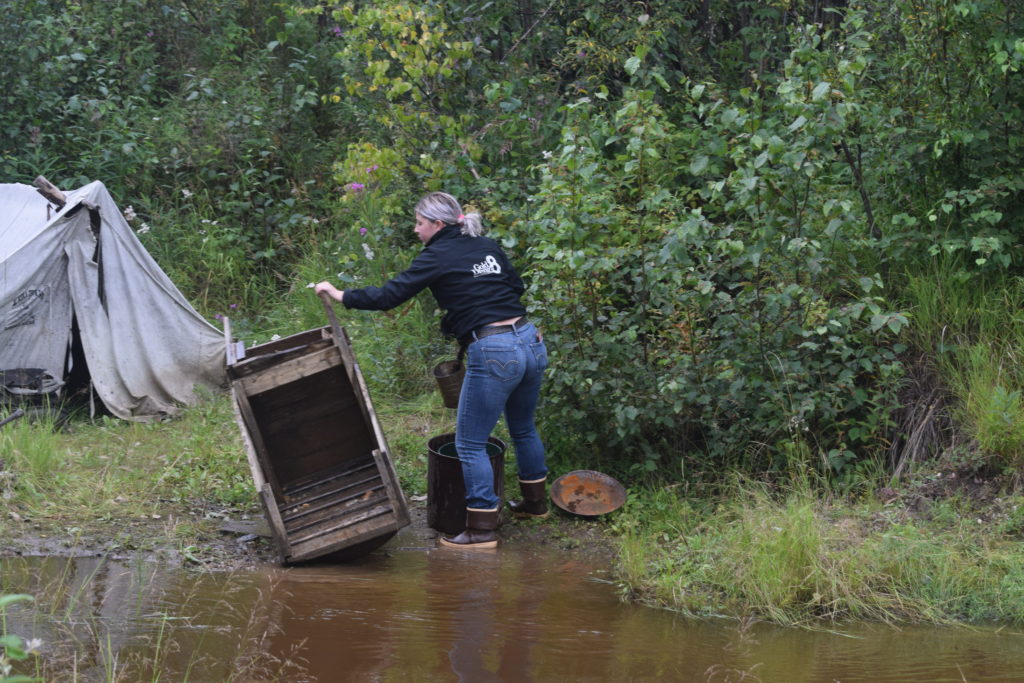
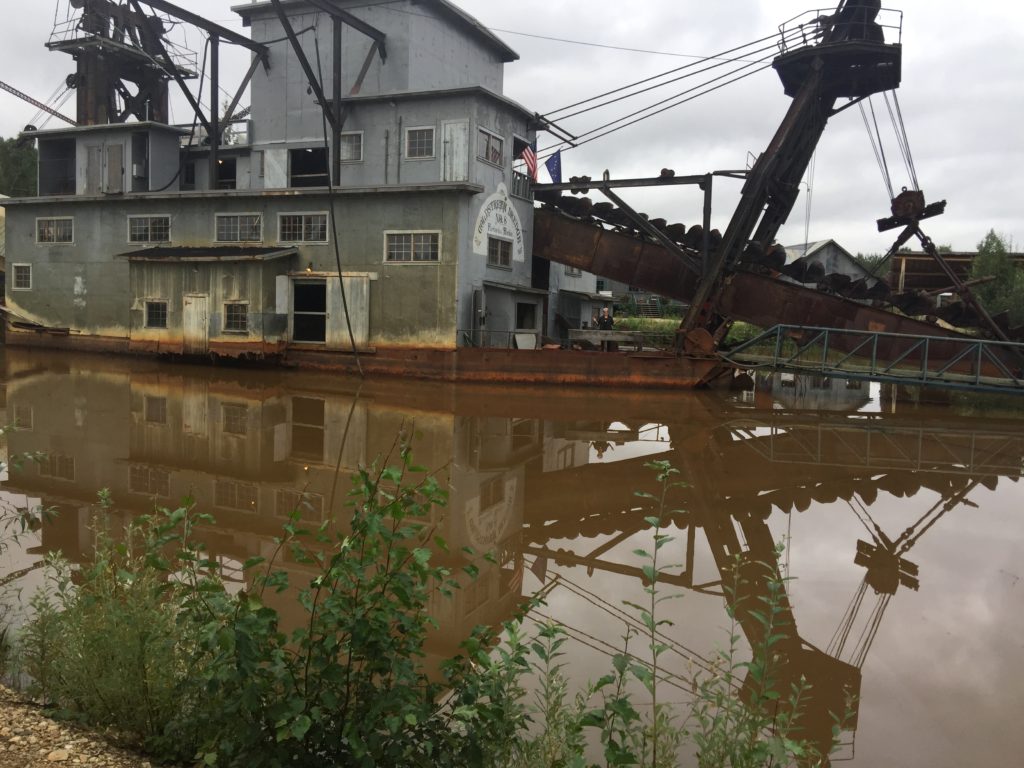
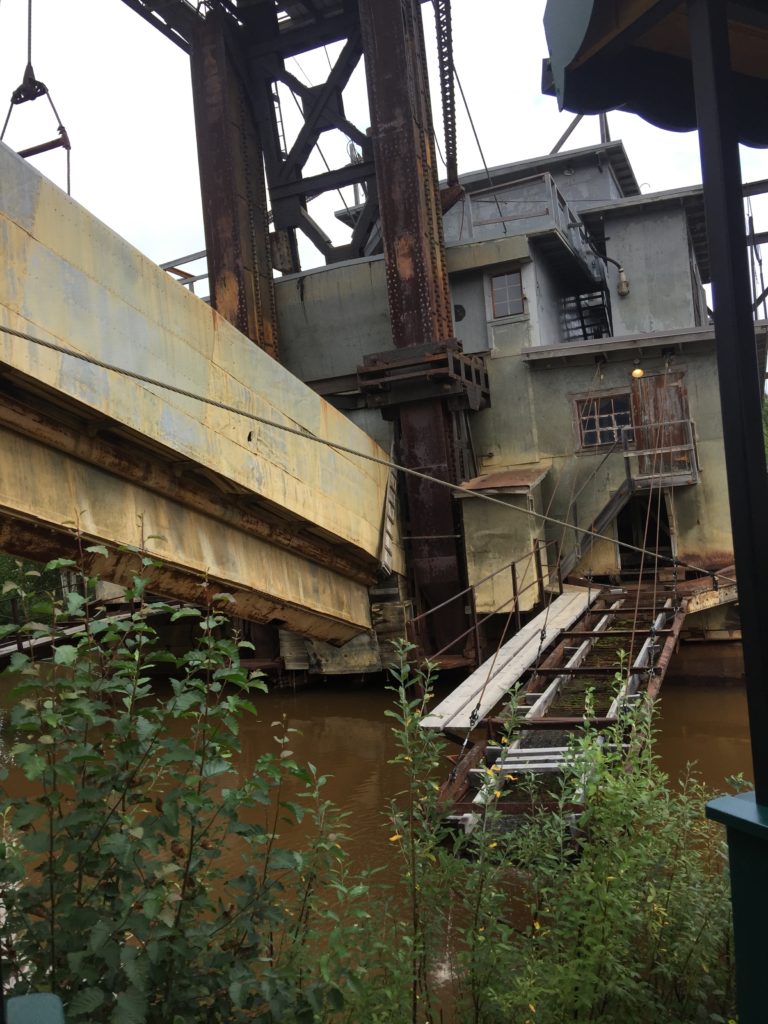
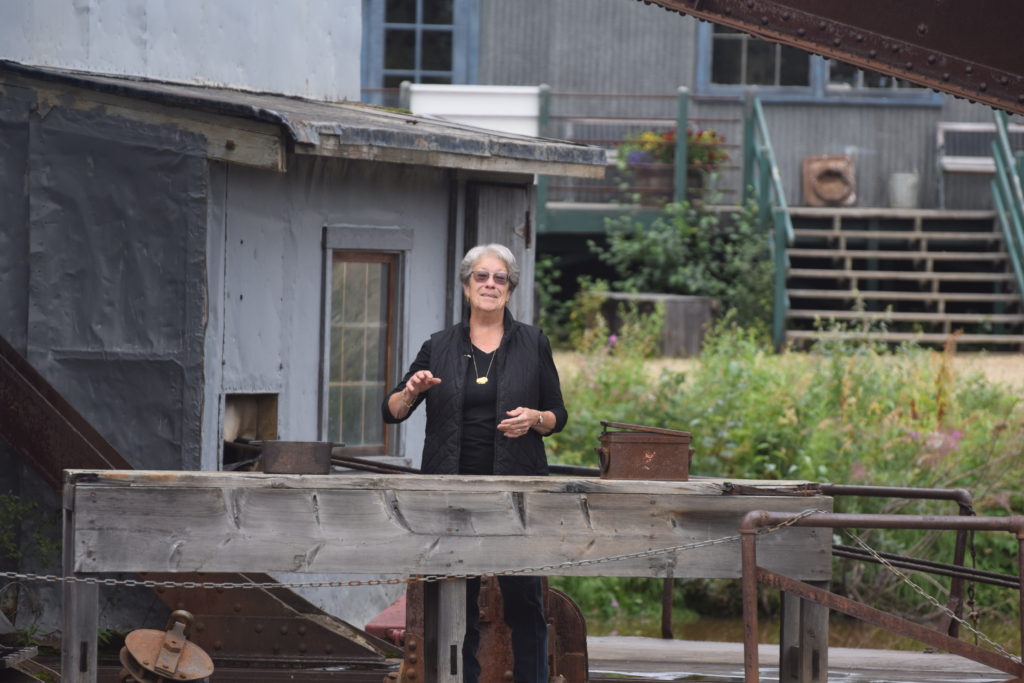
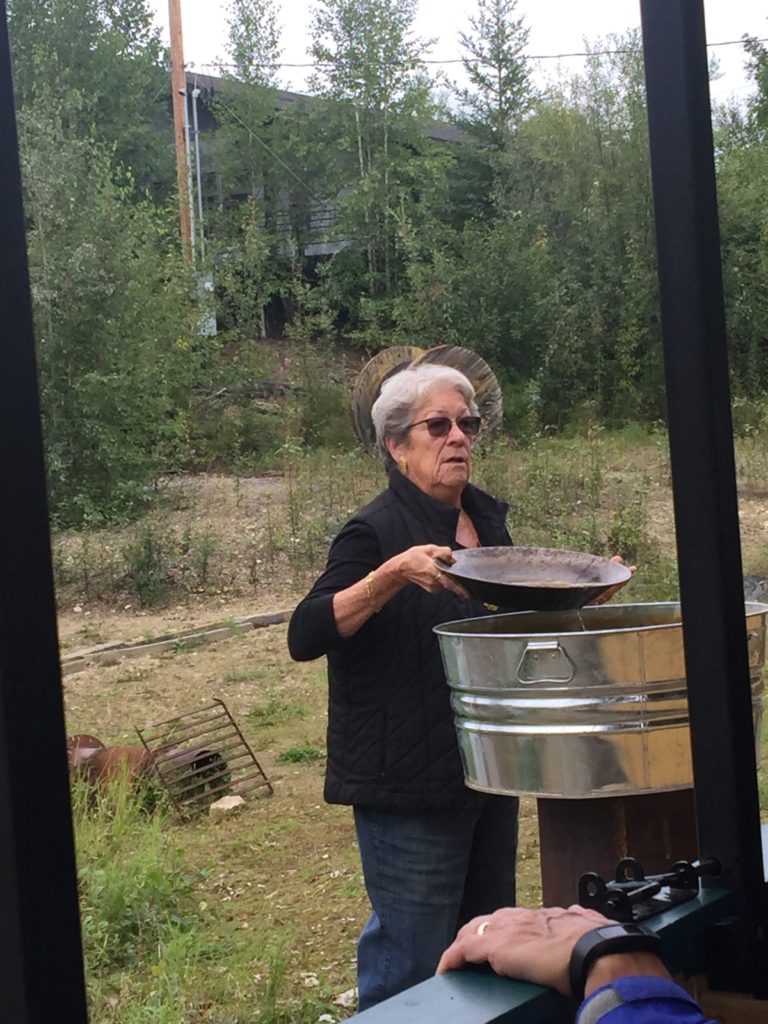
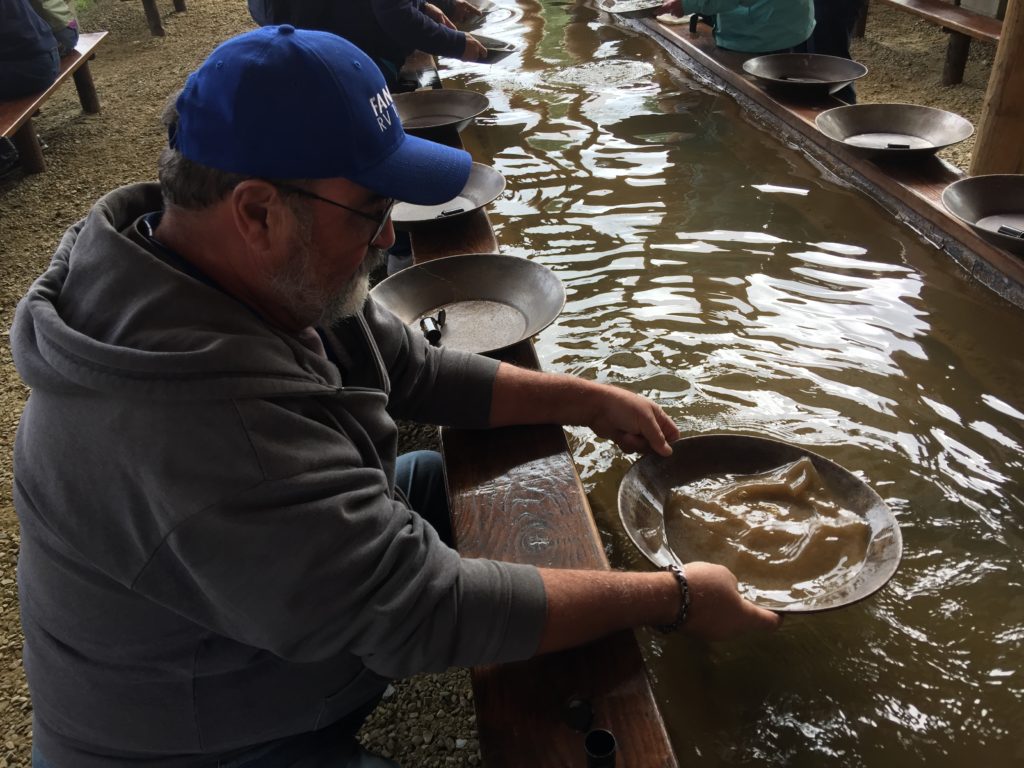
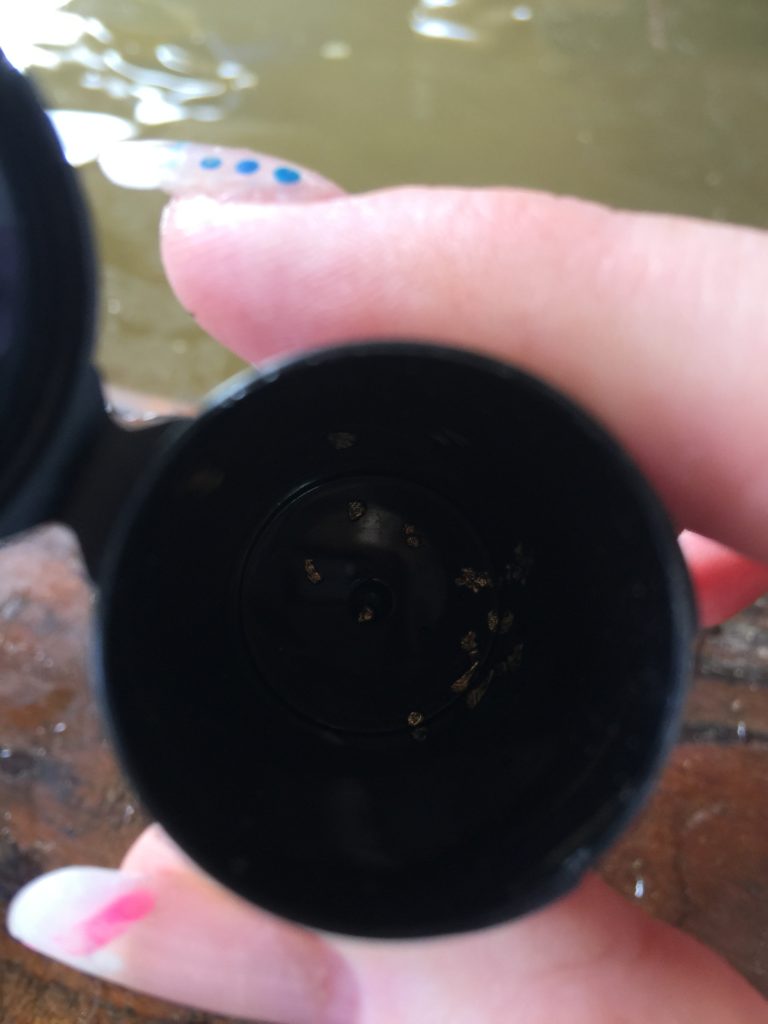
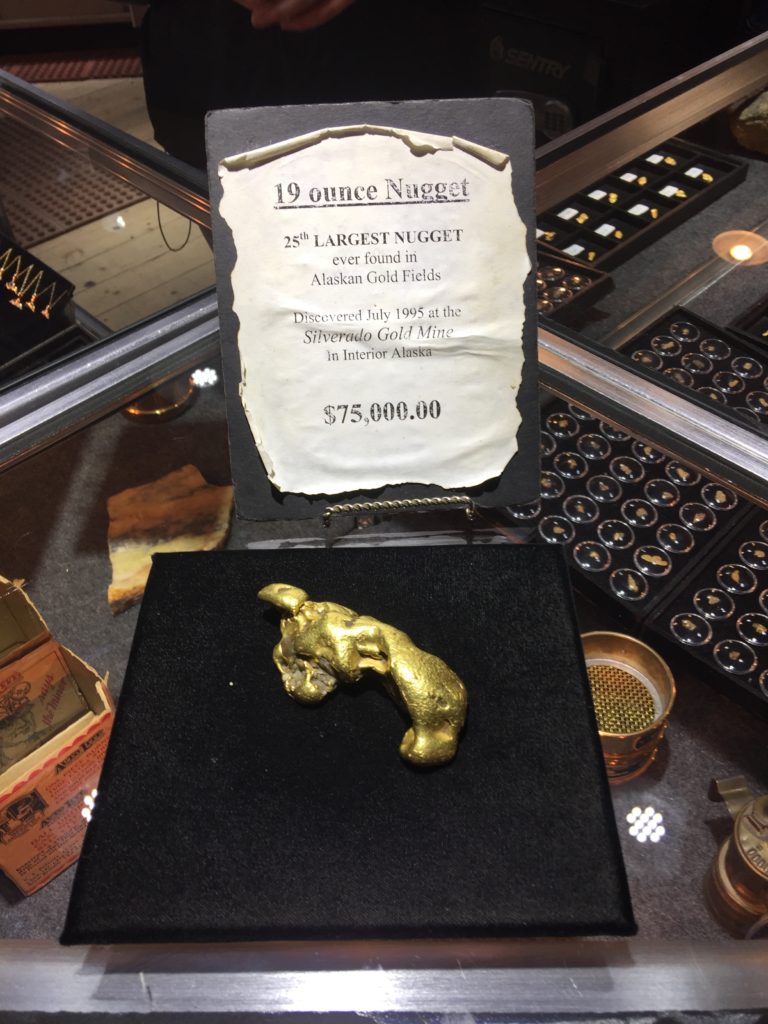
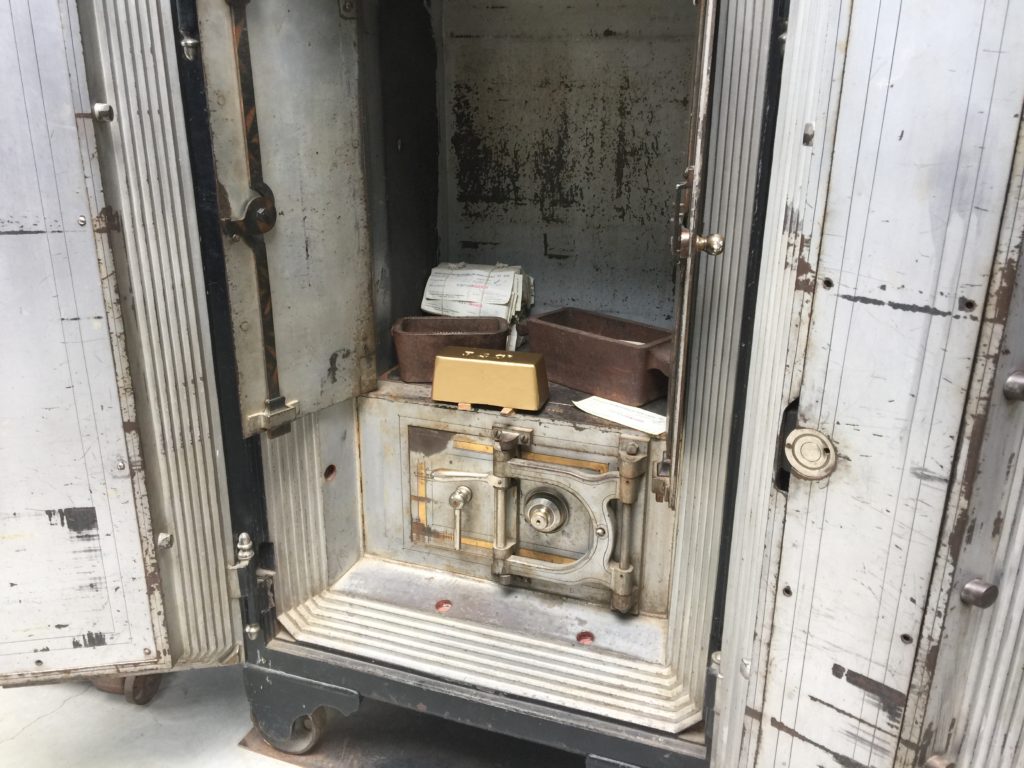
After a panning demonstration, everyone was given a bag of pay dirt and a pan to find their own gold. The gold remaining was more than the specs we found at the Chicken Gold Company, but still not a lot. After you finished panning everyone was directed into the gift shop where your gold is weighed. You can keep your gold; have it made into jewelry or use the cash to buy anything from the gift shop. Our combined gold measured out for $26. I was surprised at this amount since it only looked like a few pieces but we kept it to combine with the gold we got from Chicken. After the gold mine tour, we made stops at North Pole, Alaska, and the Great Alaskan Bowl Company before heading back for another caravan sponsored dinner of ham, potatoes, beans and Rebecca’s birthday cake.
